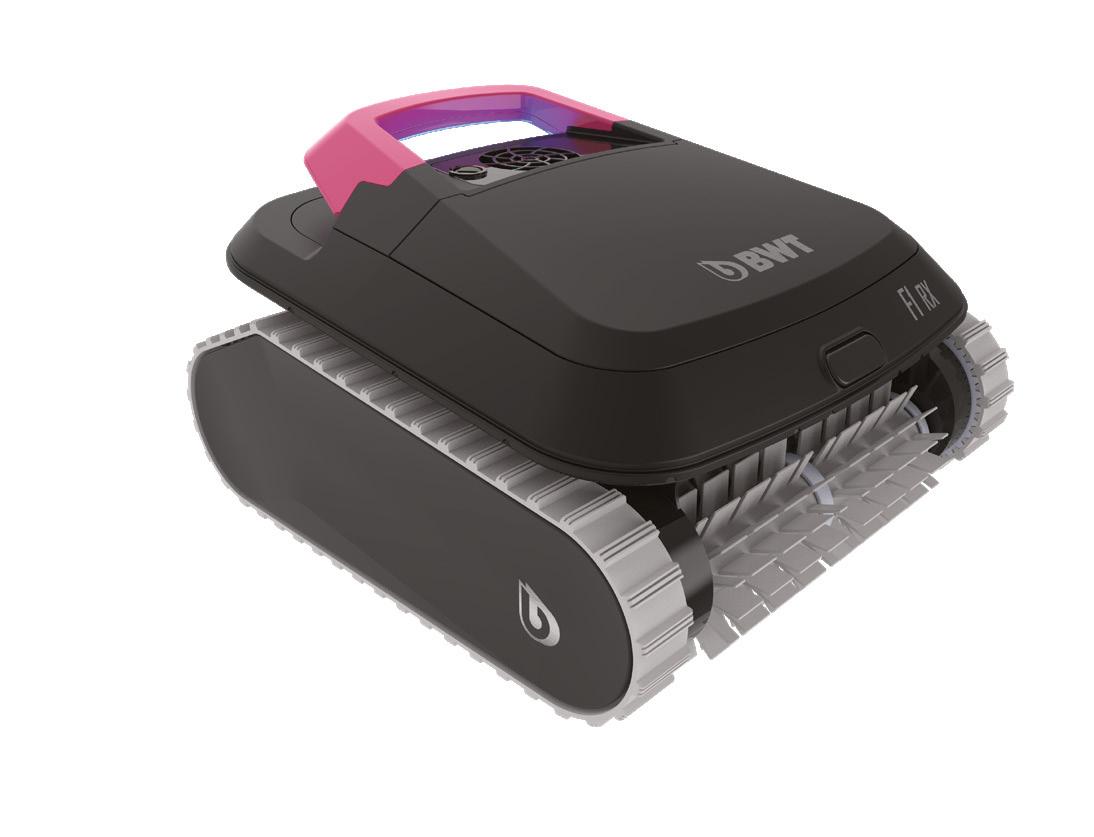The “living” pools In Australian backyards
Improving Aussies´ health With hydrotherapy
Global networking At the Asia expo
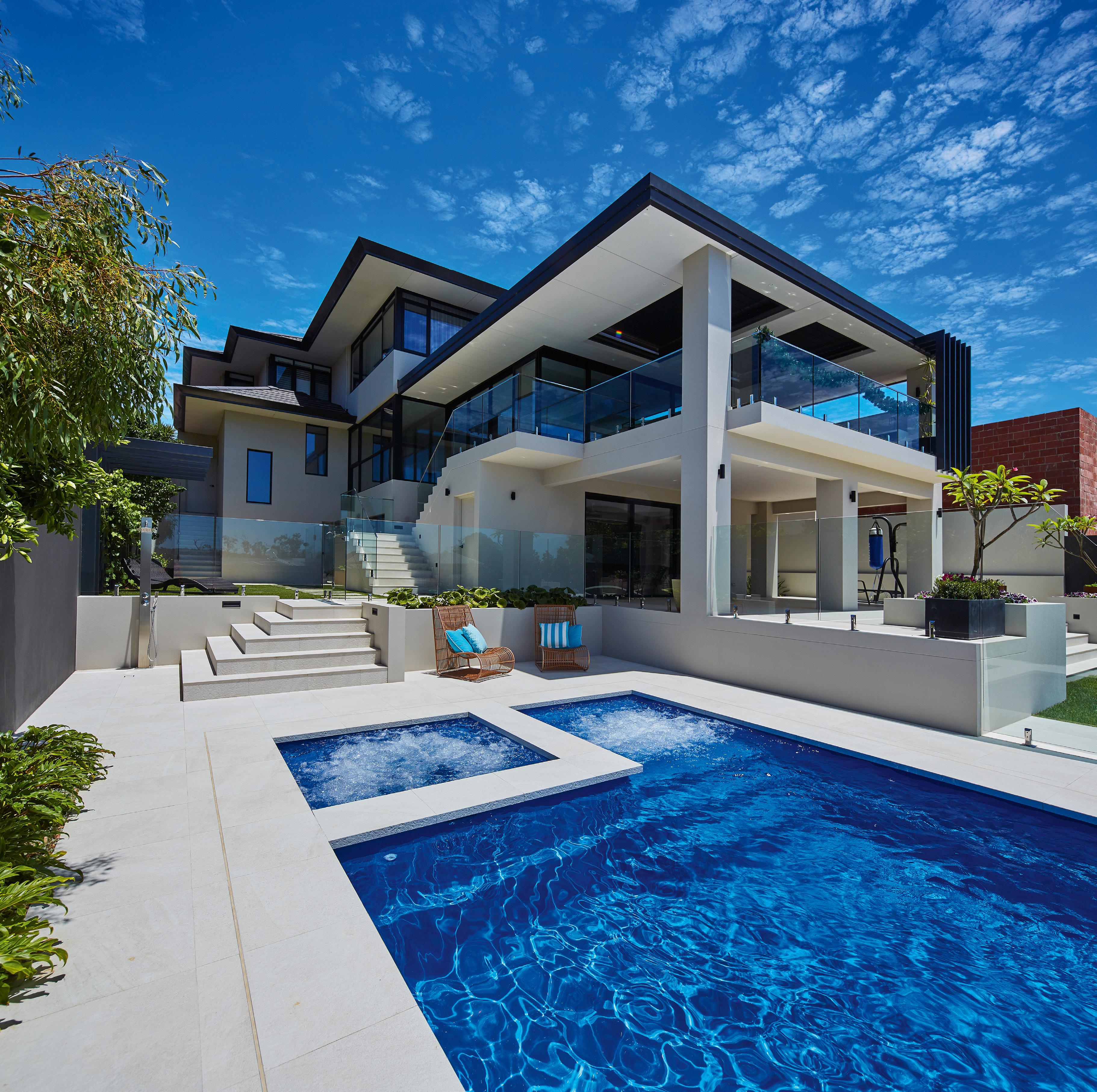

The “living” pools In Australian backyards
Improving Aussies´ health With hydrotherapy
Global networking At the Asia expo

That keeps on growing

AutoChlor® is the hallmark of AIS Water, an internationally acclaimed brand of inline chlorine generators that symbolises excellence in the industry. It’s the go-to choice for saltwater, coastline, and seawater pools, especially those with salinity levels between 3,500 - 35,000ppm.
Offering a diverse range of models, from 10 to 5,000 grams per hour, AutoChlor® ensures there’s a perfect fit for you and your customers this summer.
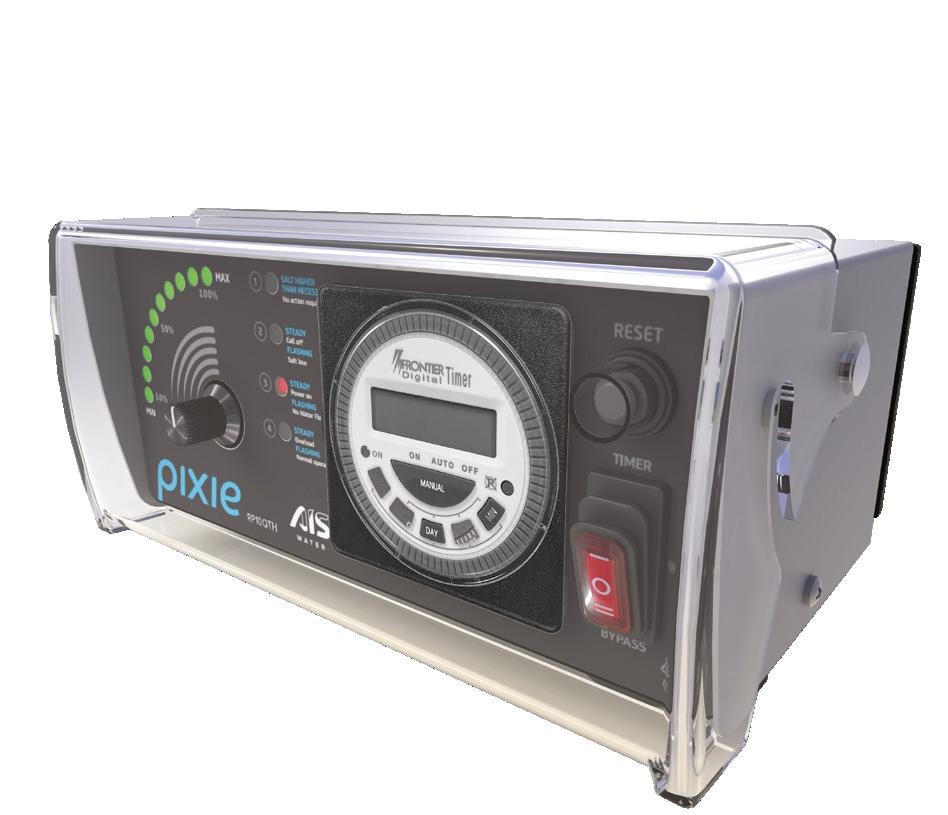

Chlorine output: 1 -10 g/h
Salinity Range: 4,000ppm - 5,000ppm
Designed in Australia to meet the surging demand in the plunge pool and spa market, the Pixie micro chlorine generator inherits the DNA of its bigger AutoChlor® counterparts. With a reverse polarity cell, water flow alarm, and high/low salinity alerts, it also shields your pool or spa from over-chlorination. Say goodbye to risky chlorine dosing and oversized chlorinators intended for larger pools. Pixie delivers peace of mind with its cost-effectiveness, simplicity, reliability, and hassle-free installation.
Chlorine output: 15 / 20 / 25 / 36 / 50 / 64 / 80 g/h
Salinity Range: 3,500ppm - 5,000ppm
Born over 30 years ago, the AutoChlor® Classic™ series reigns as AIS’ flagship, celebrated for its unwavering simplicity, unmatched reliability, and effortless installation. The Classic™ series has continuously advanced, and in its latest iteration, AutoChlor® Classic™ Mark II proudly features an aluminium heatsink, fortifying its durability to excel in the most extreme, high-temperature conditions with unparalleled ease.

Chlorine output: 100 & 150 g/h
Salinity Range: 3,500ppm - 5,500ppm
Say goodbye to juggling multiple residential chlorinators. Elevate your pool experience with the AutoChlor® MIDI™ – the ultimate solution for busy pools. With its industrial aesthetics and unmatched performance, this semi-commercial powerhouse provides the chlorine your pool demands. Operating at a salinity level as low as 3,500ppm, the RP150 model, takes your swimming experience to the next level. AutoChlor® MIDI™: where reliability, strength, and top-tier functionality meet.
Chlorine output: 100 - 5,000 g/h
Salinity Range: 4,000ppm - 35,000ppm
AIS Water stands as a pioneering force in commercial pool water disinfection, leading the charge in innovative solutions for over 25 years. The awardwinning AutoChlor® commercial range, designed for saltwater, coastal, and sea water swimming pools, is the culmination of 25+ years of relentless research and development. Today, it remains the unrivaled chlorine generator of choice, diligently disinfecting thousands of swimming pools in resorts, hotels, public swimming pools, aquatic centres, swim schools, lagoons, water parks, and schools across more than 55 countries worldwide. AIS Water - setting the gold standard in commercial pool water purification.

A 30 year history of innovation and a laser focus in chlorine generation via electrolysis.

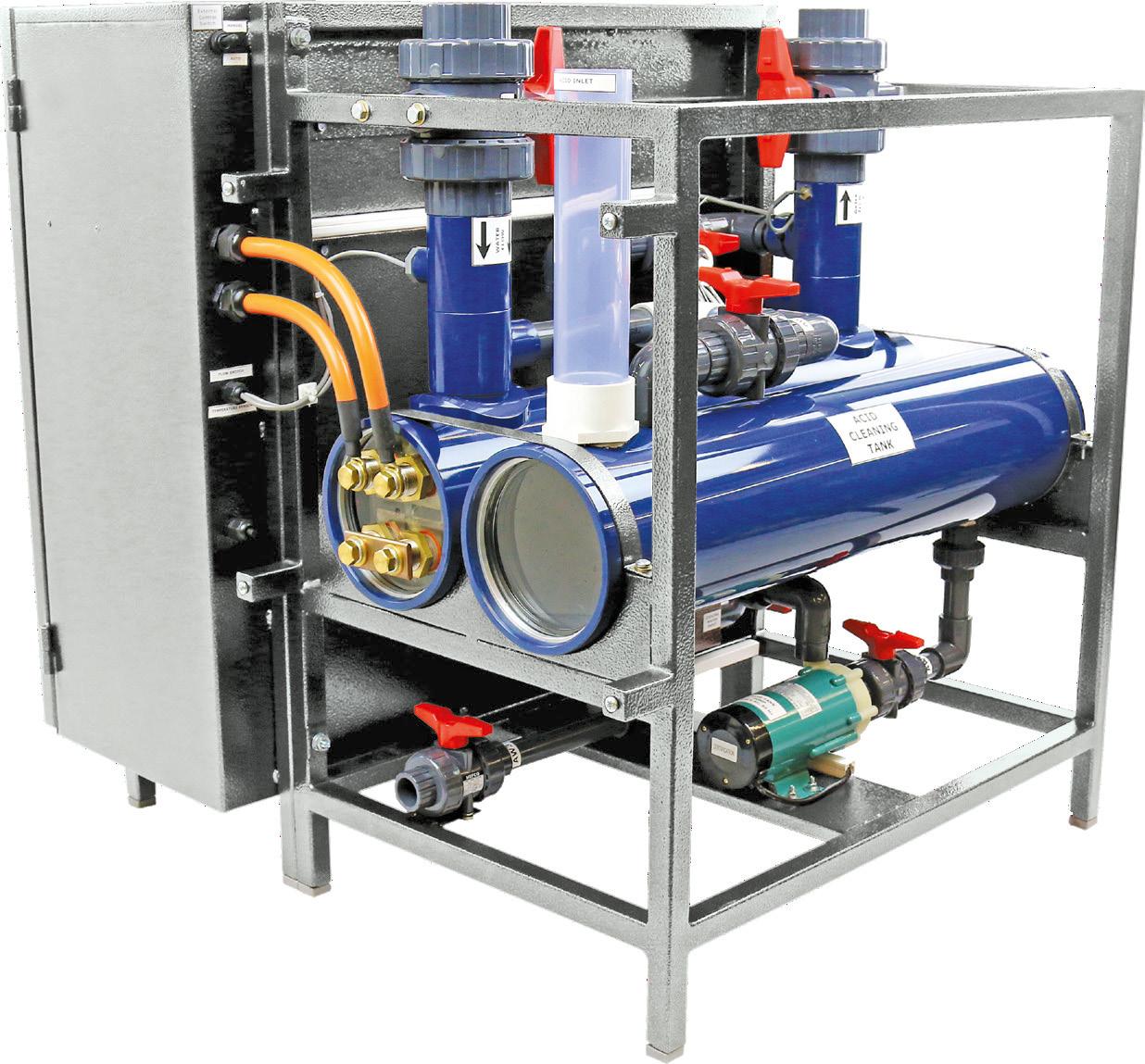

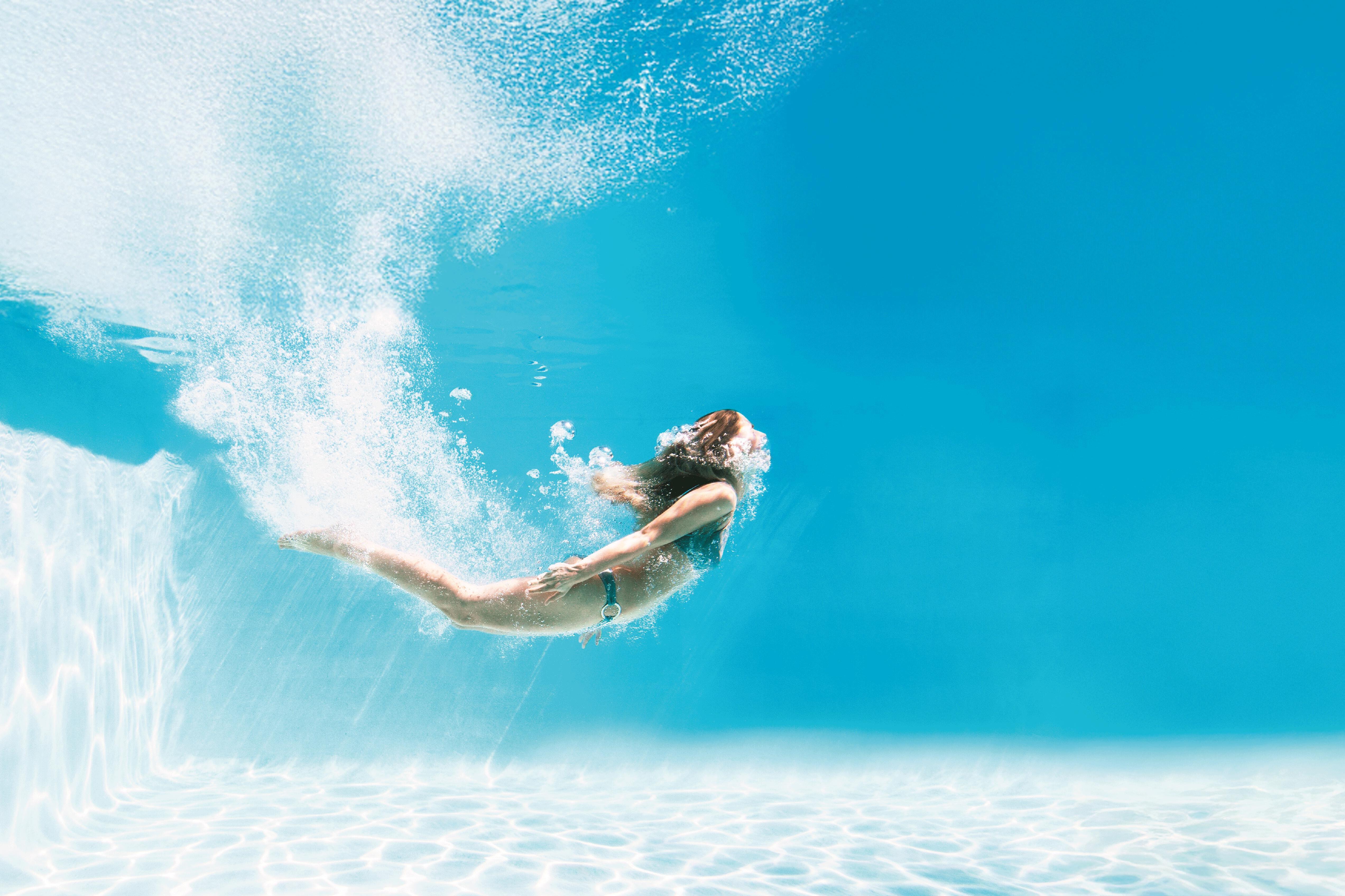


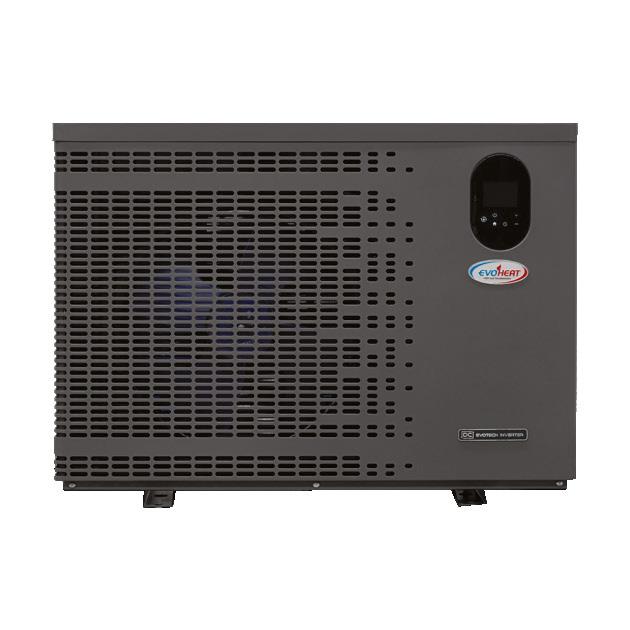


Find out why we are the multi award winning heat pump supplier. Become an Evo Authorised Partner and receive:

LEAD GENERATING ADVERTISING IN YOUR AREA

IN-STORE MARKETING MATERIALS AND CAMPAIGNS

DEDICATED BUSINESS DEVELOPMENT MANAGER

EXPERT TECHNICAL SUPPORT & AFTER SALES SUPPORT

POOL HEAT PUMP SIZING FOR EVERY CUSTOMER

HEAT PUMP SIZING GUARANTEE
Our Pool Heat Specialists use advanced mapping and pool heating software to meticulously analyse each pool location. We consider every detail including shading, wind exposure, covers and unique pool features like waterfalls, infinity edges and connected spas... so we can guarantee our sizing every time!




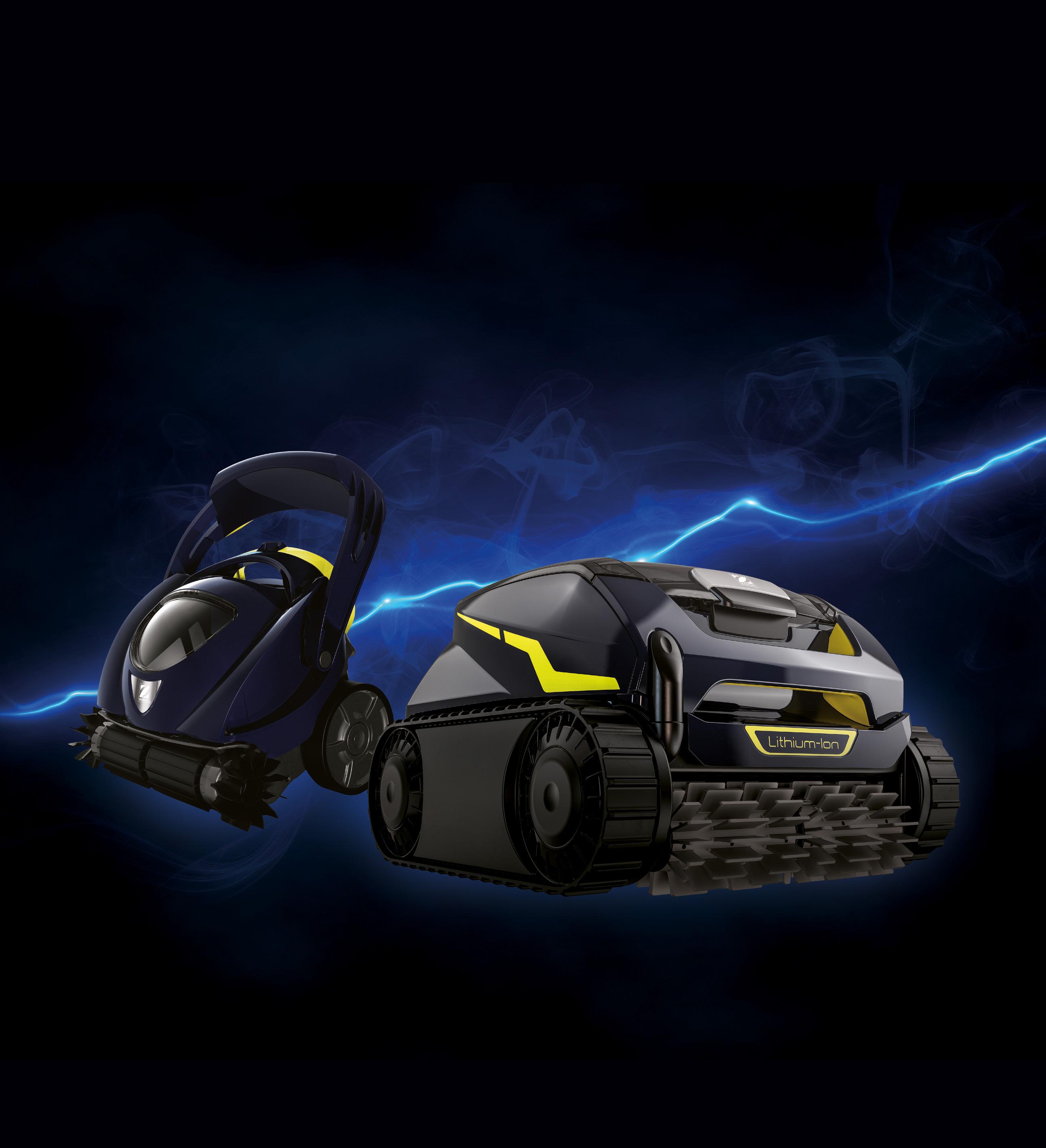
Published by
The Intermedia Group Pty Ltd
ABN 940 025 83 682
41 Bridge Road, Glebe, NSW, 2037 Australia
Ph: (02) 9660 2113
Fax: (02) 9660 4419
On behalf of The Swimming Pool & Spa Association of Australia Ltd (SPASA Australia)
Managing Editor: Chris Maher
Phone: +61 412 048 639
Email: chrismaher@intermedia.com.au
Contributors: Veda Dante, Declan Gillard-Martin, Brett Abbott, David Dean
Advertising Manager: Gillian Doreian
Phone: +61 488 983 102
Email: gillian@spasa.com.au
Graphic Designers: Jacqui Cooper, Leanne Hogbin
Production Manager: Jacqui Cooper
Subscriptions: 1800 651 422
Email: subscriptions@intermedia.com.au
Copyright
All material in this publication is copyright to the publisher and/or its contributors. No material may be reproduced without the express permission of the publishers.

Disclaimer: This publication is published by The Intermedia Group Pty Ltd (the “Publisher”) on behalf of SPASA Australia. Materials in this publication have been created by a variety of different entities and, to the extent permitted by law, the Publisher accepts no liability for materials created by others. All materials should be considered protected by Australian and international intellectual property laws. Unless you are authorised by law or the copyright owner to do so, you may not copy any of the materials. The mention of a product or service, person or company in this publication does not indicate the Publisher’s endorsement. The views expressed in this publication do not necessarily represent the opinion of the Publisher, its agents, company officers or employees. Any use of the information contained in this publication is at the sole risk of the person using that information. The user should make independent enquiries as to the accuracy of the information before relying on that information. All express or implied terms, conditions, warranties, statements, assurances and representations in relation to the Publisher, its publications and its services are expressly excluded save for those conditions and warranties which must be implied under the laws of any State of Australia or the provisions of Division 2 of Part V of the Trade Practices Act 1974 and any statutory modification or re-enactment thereof. To the extent permitted by law, the Publisher will not be liable for any damages including special, exemplary, punitive or consequential damages (including but not limited to economic loss or loss of profit or revenue or loss of opportunity) or indirect loss or damage of any kind arising in contract, tort or otherwise, even if advised of the possibility of such loss of profits or damages. While we use our best endeavours to ensure accuracy of the materials we create, to the extent permitted by law, the Publisher excludes all liability for loss resulting from any inaccuracies or false or misleading statements that may appear in this publication.
This issue of SPLASH! magazine published by The Intermedia Group Pty Ltd (Intermedia) may contain magazine or subscription; offers, competitions, forms and surveys (Reader Offers) which require you to provide information about yourself, if you choose to enter or take part in them. If you provide information about yourself to Intermedia, Intermedia will use this information to provide you with the products of services you have requested and may supply your information to contractors that help Intermedia to do this. Intermedia will also use your information to inform you of other Intermedia publications, products, services and events. Intermedia may give your information to organisations that are providing special prizes or offers that are clearly associated with the Reader Offer. Unless you tell us not to, we may give your information to other organisations that may use it to inform you about other products, services or events or to give it to other organisations that may use it for this purpose. If you would like to gain access to the information Intermedia holds about you, please contact Intermedia’s Privacy Officer at The Intermedia Group Pty Ltd, PO Box 55, Glebe, NSW 2037. Copyright © 2025 - SPASA Australia.




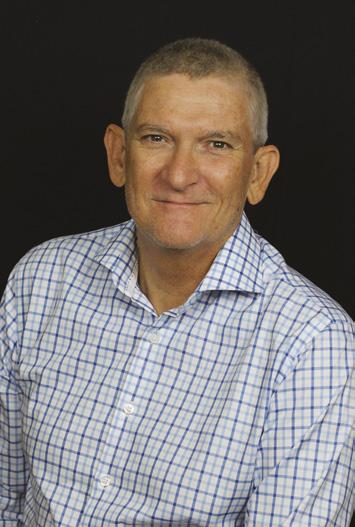
One Peter Sellers movie always stands out for me. Being There, where the dim-witted Chance the gardener unknowingly deceives the world into believing he is a genius, leading him upward onto a success he neither deserves nor even understands.
At one point he offers some gardening advice, saying that growth has it seasons.
“First comes spring and summer, but then we have fall and winter. And then we get spring and summer again.” In the movie, this was interpreted as being analogical of economic cycles, when in fact he was literally talking about his garden.
The Intermedia Group takes its Corporate and Social Responsibilities seriously and is committed to reducing its impact on the environment. We continuously strive to improve our environmental performance and to initiate additional CSR based projects and activities. As part of our company policy we ensure that the products and services used in the manufacture of this magazine are sourced from environmentally responsible suppliers. This magazine has been printed on paper produced from sustainably sourced wood and pulp fibre and is accredited under PEFC chain of custody. PEFC certified wood and paper products come from environmentally appropriate, socially beneficial and economically viable management of forests.
Chris Maher Managing Editor chrismaher@ intermedia.com.au
But of course, both are true. As anyone with even a passing interest in horticulture knows, you need to cut back in winter so growth can flourish in the spring. And the seasonal economics of industry is never clearer than in pool and spa sector.
So now is a good time to think about how to tweak your business to be prepared for not only the coming season, but the better times ahead. The industry has its ups and downs – covid was an unexpectedly up period, notwithstanding the obvious difficulties with restrictions and the supply chain, and post-covid has been a down time as the latent demand had been gobbled up during covid, as well as the effects of the global cost of living crisis.
But our economy is looking towards an upward trend, although everyone remains cautious of the effect of global headwinds – both of the tariff and warfare varieties. So it’s wise to get the house in order prior to be prepared for whichever way it swings –and there is some advice in this issue to help.
Cycles can be long, and it’s well worth noting that the decadelong tenure of Lindsay McGrath as SPASA chief has come to an end. In this issues we look at the overwhelming changes that SPASA (the owner of this masthead) and the industry as a whole has undergone over these past 10 years, and also introduce the new CEO, Kristin Brookfield, a highly experienced leader who is sure to continue the upward trajectory of the organisation and the industry.
I hope you enjoy this cool wintry edition, and prepare well for the spring ahead.

A pool and spa combination from Best Fibreglass Business 2024, Barrier Reef Pools WA. Image by Ron Tan Photography. There is more on their journey to success on page 30.
The PuraShield® UV Sanitiser +Ozone from Pentair, takes pool protection to the next level. Harnessing the power of ultraviolet (UV) light and ozone’s proven oxidation and sanitation capabilities, the new PuraShield® UV +Ozone sanitiser is the best complementary solution to your swimming pool's chlorination system.
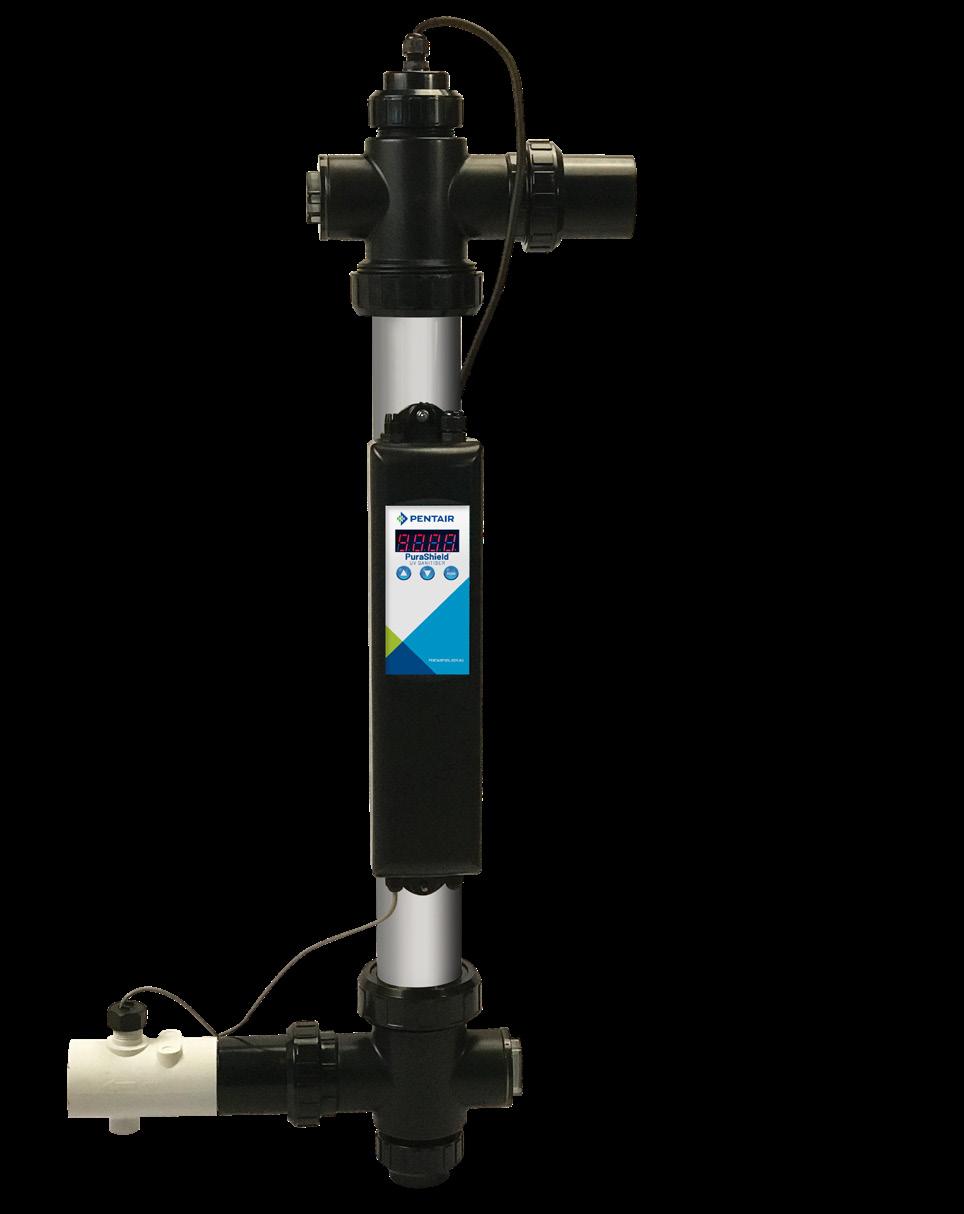



The ulraviolet light in the new Purashield® system from Pentair works to render harmful organic matter like bacteria and viruses inactive. This helps reduce the amount of chlorine required for your swimming pool.
The UV light also breaks down the monochloramines in your pool to help reduce itchy skin, burning eyes and chemical odours.
The ozone component of the Purashield® system works fast to effectively deactivate harmful bacteria and reverts back to oxygen without creating any toxic by-products.
All rolled into an easy-to-use system, the Purashield® UV +Ozone Sanitiser easily fits to most existing pool systems offering you the best pool protection with minimum fuss.
See the full range at pentairpool.com.au
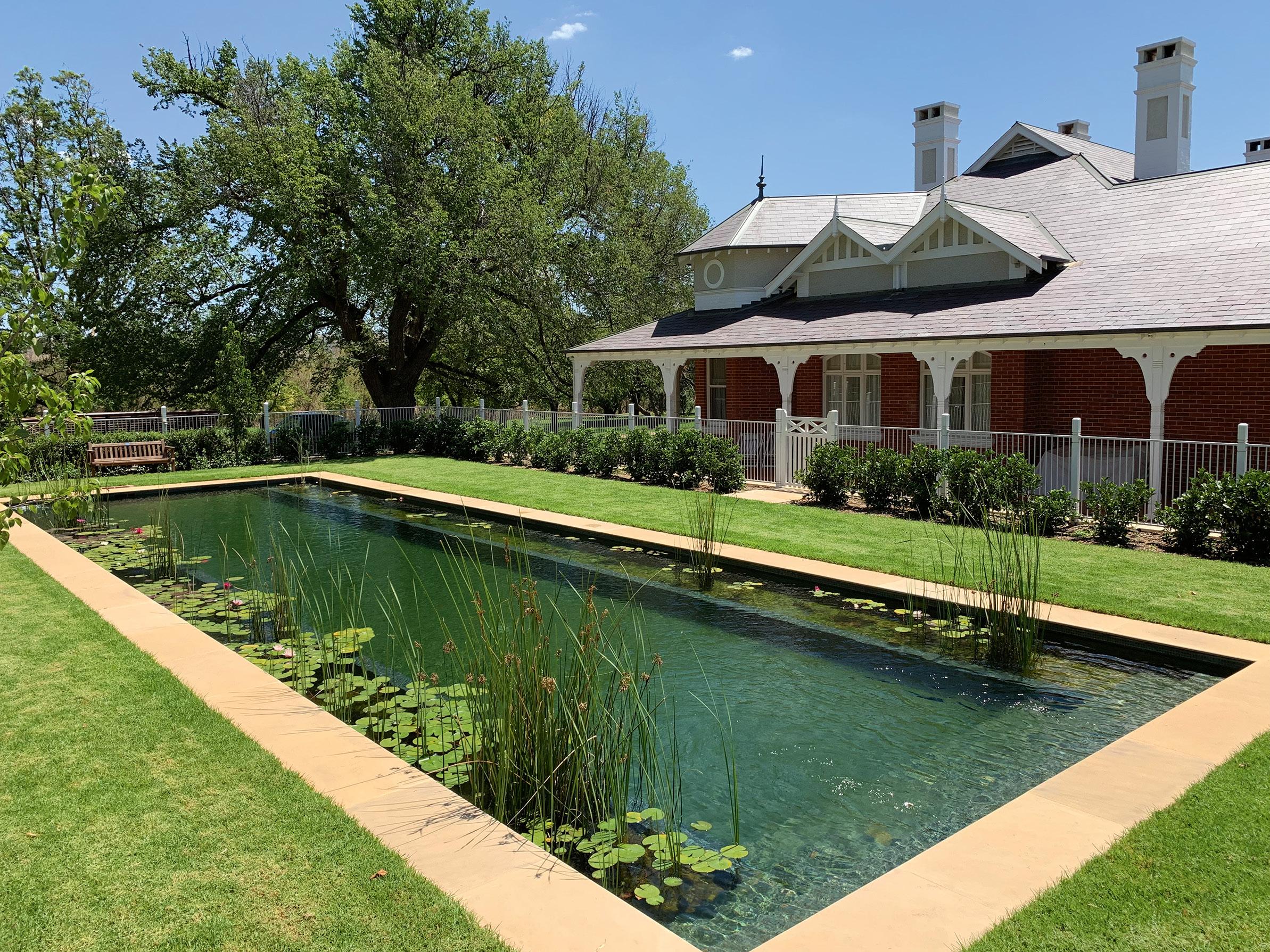
20 Three ways for pool builders to get more leads
Brett Abbott offers advice on how pool builders can get more leads in a tight economy – and none of them involve the internet.
22 The power of customer satisfaction: building loyalty in the pool industry
David Dean discusses the importance of customer loyalty and how it can become the foundation for business success.
24 Inside the pool and spa industry’s biggest transformation
As Lindsay McGrath moves on from a decade as SPASA CEO, he discusses the strategic reforms that helped professionalise the sector.
30 From boutique family business to top fibreglass builder
Gina Nicholson outlines the journey of Barrier Reef Pools Group WA as it developed into a multi-faceted multi-award-winning business.

36 Biofiltration in Australian backyard pools
As consumers seek healthier, more sustainable ways to enjoy their backyards, Veda Dante looks at the “living” swimming pool alternative.
48 Asian expo fosters innovation and dialogue
Declan Gillard-Martin travelled to the Asia Pool & Spa Expo to participate in global networking and see what new ideas were on offer.
56 Hydrotherapy: The future is fluid
Veda Dante looks at the increasing demand for aquatic therapeutic services, and their health and commercial benefits.

The Swimming Pool and Spa Association of Australia and New Zealand (SPASA) has announced the appointment of Kristin Brookfield as its new chief executive officer. The timing aligned with SPASA’s Annual General Meeting, where members gathered to reflect on the organisation’s achievements and set a course for the future under new leadership.
“Kristin brings a wealth of experience in policy, advocacy and industry leadership that dovetails perfectly with SPASA’s strategic direction,” says SPASA chairman, Anthony Grice.
“We are confident that her extensive leadership experience and proven track record will be instrumental in driving the association’s next phase of growth and innovation.”
Brookfield brings more than 30 years’ experience across residential building, construction, government relations and member engagement, including over two decades with the Housing Industry Association (HIA). During her time at the HIA, she led the national policy team and oversaw state-level advocacy on key issues such as workplace relations, planning, building and environmental legislation, industry skills, and economic policy.
“The opportunity to join SPASA feels like a natural alignment with my experience and

expertise,” Brookfield says.
“SPASA members operate in sectors closely related to those I’ve worked with throughout my career in the building industry. I’ve also had a long-standing passion for industry associations and the vital role they play.
It’s clear that SPASA has built a strong and respected organisation over the past decade, and I’m excited to contribute to its next phase of growth and development.”
Brookfield holds a Bachelor of Town Planning (Honours) from the University of NSW and a Graduate Certificate in Project Management from the University of Technology, Sydney. She began her career in NSW town planning and, for the past 20 years, has worked closely with all levels of government on approval requirements
Fluidra has acquired 100 percent of swimming pool software company Pooltrackr.
The software-as-a-service (SaaS) company offers the best-in-class management software platform that streamlines every aspect of operations for pool professionals.
Pooltrackr’s proprietary technology is a highly scalable and configurable platform that can be tailored to specific business needs. The bestin-class technology has been built to integrate with leading water testing hardware and commonly used accounting, point of sale and payment systems. The platform’s functionality also enables pool professionals to manage scheduling, inventory, customer relationships, and service delivery efficiently.
Pooltrackr managing director Ben Richards says they have a highly diversified and growing
customer base in Australia and New Zealand, and are the number one end-to-end pool and spa management platform in the region.
He says the company has a highly experienced team with deep technical and industry knowledge who will continue to support the uptake of the platform in Australia and New Zealand, as well as the global expansion.
for residential developments, including houses and pools.
“I’m confident I can bring that experience to the conversations SPASA is having with government and contribute to improving the regulatory environment,” she says.
“As an industry board member of the Australian Building Codes Board and with a strong relationship with Standards Australia, I also hope to leverage my connections and insights to support and benefit SPASA members.”
With a growing understanding of the organisation and its direction, Brookfield has already gained a strong appreciation for the foundations that have been built and the vision driving its progress.
“It’s evident that outgoing CEO Lindsay McGrath has shown exceptional dedication in building this outstanding organisation, supported by a committed team,” she says.
“The strong brands and strategic initiatives I now have the privilege of leading are a testament to their vision of a unified national body that advocates for the swimming pool and spa industry. I’m honoured to continue this legacy and look forward to working with the team to further strengthen and advance the Association in the years ahead.”
Contact: Connect with SPASA CEO Kristin Brookfield on www.linkedin.com/in/kristinbrookfield-executive-leader

Pooltrackr streamlines every aspect of operations for pool professionals
Fluidra CEO Jaime Ramirez says they are excited about the acquisition, which is fully aligned with their strategy.
“Joining forces with Fluidra marks an exciting new chapter for Pooltrackr in the Region,” he says.
“With their global backing and industry leadership, we’re now positioned to accelerate product development, scale more effectively, and deliver even greater value to our customers.”
“This significantly accelerates our digital roadmap and reinforces our commitment to deliver innovative customer-centric solutions. By focusing on connectivity and digitalisation, we ensure sustained competitive advantage and value creation.”

Against the breathtaking natural backdrop of Queenstown, New Zealand, Compass Pools Australia brought together its Australian and New Zealand dealer network for an unforgettable annual conference focused on growth, leadership and sustainable success.
“The energy in Queenstown was incredible, and the location absolutely inspired the theme,” says Anthony Cross, CEO of Compass Pools.
“We wanted our network to take a step back, breathe in the fresh air, and think bigger – about how they lead their teams, how they grow their businesses, and how they can achieve more with less friction.”
Held in partnership with experience specialists HQNZ, the event featured a dynamic mix of practical workshops, inspiring sessions and networking opportunities. A standout moment was Reach the Peak, an immersive team-building session where participants tackled a simulated ascent of Mount Cook.
“The exercise brought key themes like agility, decision-making and teamwork to the surface,” says Cross. “This sparked valuable conversations around high-performance teams and leadership under pressure.”
A key focus of the conference was on building scalable businesses that operate smoothly without constant owner input, with dealers encouraged to rethink their role and focus on creating systems that drive growth and efficiency.
“There was strong engagement around shifting from operator to owner mindset,” he says. “Systemising your customer journey, simplifying operations, and empowering your team to take ownership. These are the building blocks of sustainable growth.”
The conference also celebrated excellence across the Compass Pools network, with awards recognising innovation, design, and standout performance:
Excellence in Pool Design – New Zealand: The Pool and Leisure Centre, AquaStyle Pools, OCD Pools.
Excellence in Pool Design – Australia: North West Pools, Smart Self Cleaning Pools, Gen2 Pools.
Excellence in Business Growth: Enchanted Pools, Pool HQ, Gen2 Pools.
Compass Pools Innovation Award: Compass Pools Europe
Compass Pools Rookie of the Year: Thomas Camilleri Trailblazers Award – Women in the Pool Industry: Julie Stroud, Rainbow Devlin.
Pool Builder of the Year: Xquisite Pools & Spas.
Available pool DA figures for the 12 months to May show that annual applications are down by seven percent nationally, a one per cent deceleration on the previous rate of decline. However, the numbers continue to move south. While Western Australia is up by three per cent, New South Wales is up by five per cent and Queensland is up by 14 per cent, Victoria is down by 33 per cent and South Australia is down by 34 per cent.
The DA numbers over the most recent three months were only down by two per cent nationally when compared to the same period last year. The March-May numbers from Cordell show New South Wales is up by 27 per cent, Queensland is up by 34 per cent and Western Australia is up by eight per cent, while South Australia is down by 20 per cent and Victoria is down by 67 per cent.
Cooke Industries has added two new professionals to its sales management team.
“Six months ago, we began looking for a skilled salesperson to cover the expanding Queensland market,” says general manager Justin Nicholas.
“However, after interviewing two exceptionally strong candidates—with vastly different skill sets and sufficient geographic separation – the business case for employing both was quite compelling.”
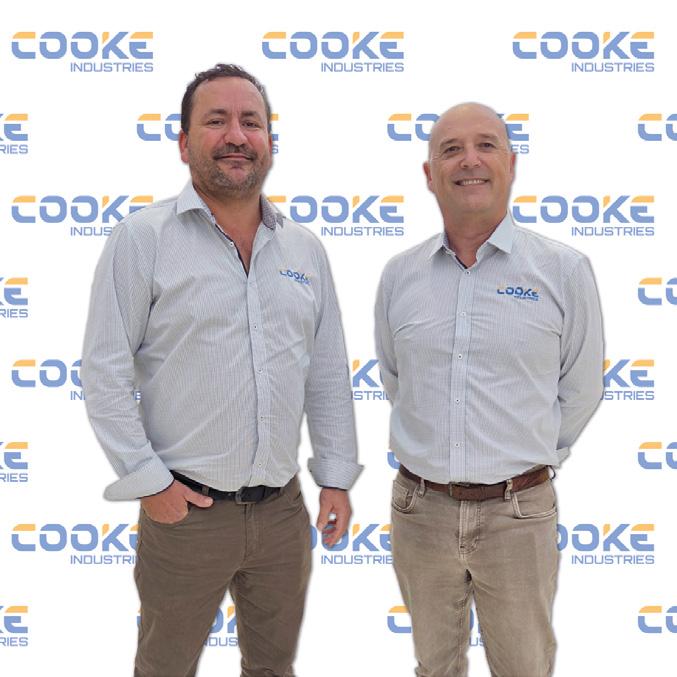
These appointments in Queensland and northern New South Wales are part of a broader strategic initiative to continue the company’s growth in the northern markets and to reinforce the existing sales staff – Brad Hamilton in Melbourne and Glen Meznaric in Sydney – with complementary skills and fresh perspectives.
Michael Barbour joins as regional sales manager for South-East Queensland, bringing over 25 years of experience in pool design and construction.
“Leveraging a deep understanding of construction processes and builderspecific challenges, Michael is uniquely positioned to advise clients on practical and effective solutions. With Michael, it’s not a sales pitch—it’s practical help from someone who’s been there,” says Nicholas.
Also joining Cooke Industries is John Gerdelan, appointed as regional sales manager for Northern Rivers and surrounds.
“Drawing on his extensive data-driven sales experience, including seven years within the industry, John will apply his skills to identify customer needs, optimise sales strategies, and improve the company’s service offering.”
In line with their growth strategy, Cooke Industries has secured distribution agreements with new and existing suppliers, allowing them to offer their trade customers a broader portfolio of quality pool equipment and products.
“We continue to invest in a highly skilled and adaptable team to lead our industry into the future,” says Nicholas. “The experience and insight John and Mick bring will bolster our capabilities and position us for long-term success, while strengthening our relationships between us and our valued customers.”
Sunlover Heating hosted a three-day national training conference in May, bringing together technical staff from across Victoria, New South Wales and Queensland.
The event offered a valuable opportunity for cross-state collaboration, skill development, product training and knowledge sharing between team members.
Sessions focussed on Sunlover’s latest pool heating technologies, including the high-performance iX Series heat pumps, alongside practical workshops in diagnostics, installations and customer support strategies.
“The aim was to align our national service standards while upskilling everyone on our newest systems,” says Phil Hickman, Sunlover’s national technical manager.
“It was also a great chance to strengthen connections between our state-based teams through face-to-face learning and open dialogue.”
Beyond technical development, the conference featured lively discussions, team feedback sessions and after-hours social

Keep informed by subscribing to the free online newsletter.
The online stories that made the news over the past two months.
Kristin Brookfield to take reins as new SPASA CEO SPASA has announced the appointment of Kristin Brookfield as its new chief executive officer. Inside the Australian pool and spa industry’s transformation The strategic reforms that helped protect, grow and professionalise the Australian pool and spa sector.
Wellington beset by 93 cases of cryptosporidiosis Cryptosporidiosis has spread throughout the New Zealand capital, currently totalling 93 cases this year.
Queensland surf park planned to help train elite surfers
World surfing champion Mick Fanning recently unveiled Palm Valley, Australia’s first surf and golf resort.
Spiros Dassakis moves beyond SPASA to establish consultancy Dassakis has stepped down from his role as chief policy officer to establish his own consultancy.
Jul 10 Renewal and New Horizons Seminar, Melbourne
July 12 Queensland SPASA Awards of Excellence
July 17 NT SPASA Awards of Excellence, Darwin
July 19 SA SPASA Awards of Excellence
Aug 7-8 LIWA Conference, Perth Convention & Exhibition Centre
Aug 12-14 Spark Conference, Sofitel Wentworth, Sydney
Aug 16 NZ SPASA Awards of Excellence
Sep 6 National SPASA Awards of Excellence
Oct 28-31 Aquanale, Cologne, Germany
Nov 17-20 Piscina, Barcelona, Spain
Apr 20-22 AALARA Conference, The Star, Gold Coast
Aug 19-20 SPLASH! Trade Expo, Gold Coast Convention & Exhibition Centre, Broadbeach, Queensland
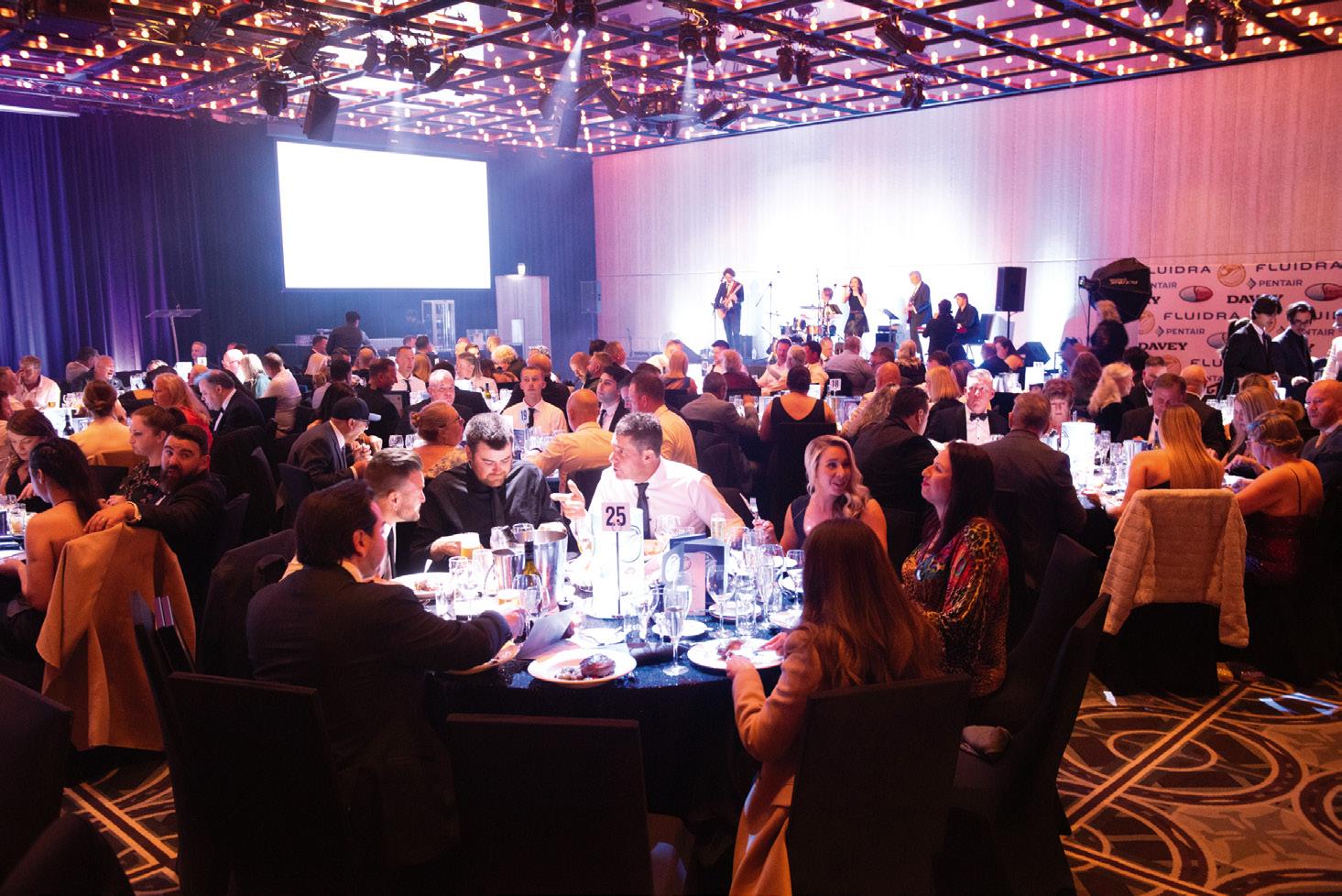
More details at www.splash.online Dates are subject to change and should be checked with the relevant organisation. Send calendar submissions to info@splashmagazine.com.au.

A New Zealand man has been told he is not exempt from the Building Act, after breaching the Act in relation to the construction of a swimming pool on his property. The Timaru Herald reports that Simon Grant Richardt failed to comply with a notice to fix order and wilfully obstructed officers carrying out inspections. Richardt did not have an application for the construction of a barrier around his swimming pool, nor a building consent application for the pool itself. He told the court the Act did not apply to him, calling himself Simon in the Living.
Judge Savage said the court did have jurisdiction over the defendant “whether he likes it or not” and was fined $NZ18,000.
A Queensland man was witnessed sneaking into a homeowner’s swimming pool on at least four occasions this year, after getting sweaty jogging in Brisbane’s north. The man was filmed on a CCTV camera taking off his shoes and socks at the front door before taking a plunge into the pool. He stretched his muscles and completed a few laps before leaving. The man told 7News that he thought no one lived there, and it was a display home.
The 34-year-old Geebung man attended Fortitude Valley Police Station and was cautioned for one count of trespass.
Pool & Spa Services will now be represented in the 2025 Australian Trades Small Business Champion Awards, after lobbying of Precedent Productions by Sapphire Pool & Spa in Picton, NSW.
Clark Rubber has launched a new range of commercial-grade cleaning equipment, chemicals and consumables, giving its franchisees across Australia access to a high-growth sector and a new recurring revenue stream.

Clark Rubber CEO Anthony Grice says this new category offers a significant commercial opportunity for the existing franchise network.
“It allows them to access the $19.8 billion commercial cleaning market while continuing to leverage the brand strength, support systems and operational expertise Clark Rubber is known for,” he says.
“We believe this will empower our franchise partners with comprehensive training, marketing support, and product supply, while also offering B2B sales opportunities, streamlined sourcing, and the ability to deliver consistent, high-performance results to businesses, schools, trades, and more.”
The new cleaning product range is powered by strategic partnerships with some of Australia’s most trusted names, including Oates — founded in 1930 and now Australasia’s leading supplier of cleaning tools — and Whitley Chemicals. It also features an exclusive line of Clark Cleaning Chemicals.

Sadly, leading industry veteran Jim Daniels passed away in May. Jim was an award winning pool builder and landscaper with Poolscapes of South Australia, as well as being a longtime manager of SPASA South Australia and a SPASA life member.
Notably, he was SPASA’s representative during the period when the South Australian Government was introducing
The Victorian County Court judge presiding over the criminal dishonesty trial of former AFL footballer and swimming pool builder Nick Stevens has stepped down, revealing she had previously prosecuted him in her role as Crown prosecutor. She also discharged the jury.
County Court Judge Fran Dalziel told the court she needed to recuse herself from the case to avoid any perception of an unfair hearing.
swimming pool boundary compliance legislation. Jim was well known in the industry both in South Australia and nationally.
He leaves behind wife Lee, five children and six grandchildren.
A memorial will be held at the Edinburgh Hotel in Mitcham on Wednesday July 2.
SPLASH! offers sincere condolences to family, friends and colleagues.
A new four-week trial is listed to begin in late February 2026.
Stevens is facing 18 fraud-related charges, including obtaining a financial advantage by deception, after allegedly accepting $170,000 from six families to install swimming pools that were either not started or left incomplete at properties in the Mildura region.
Judge Dalziel says that while nobody is suggesting she is biased, there could be the perception of such if she didn’t recuse herself. Stevens was found not guilty in the previous matter she presided over.
He has pleaded not guilty to all charges.

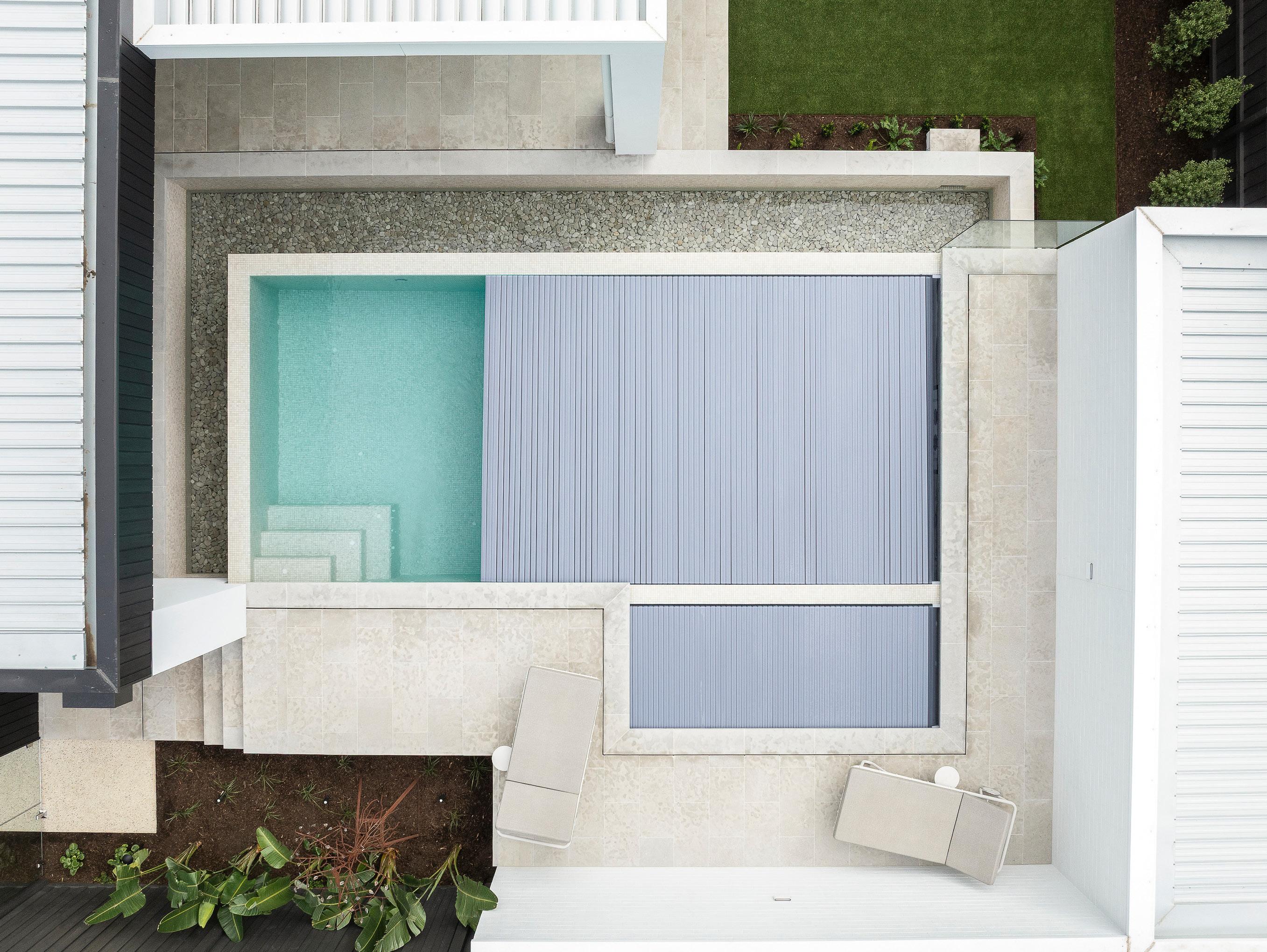

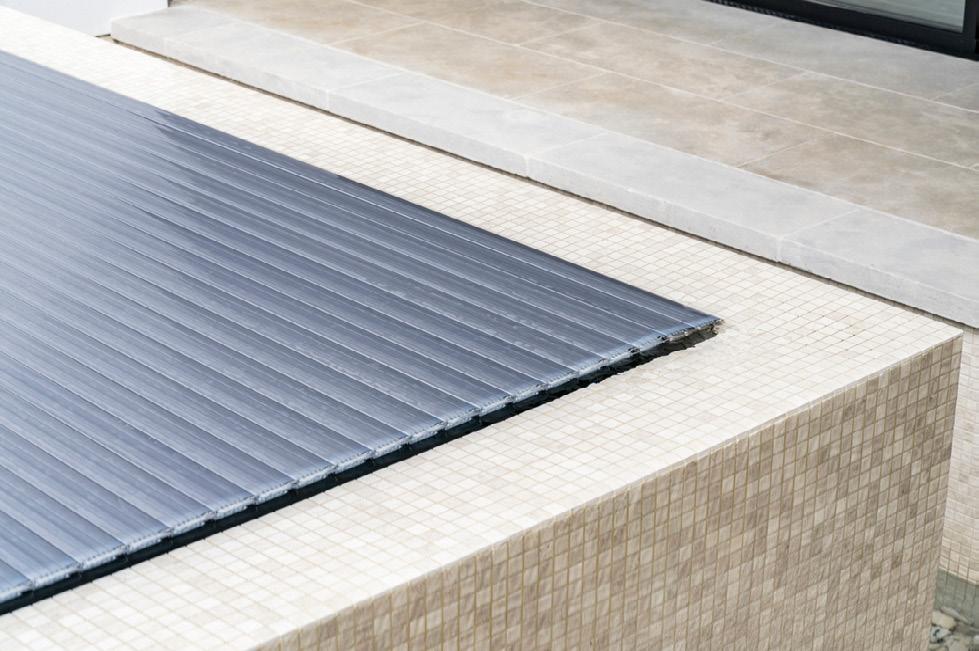




The Swimming Pool and Spa Association (SPASA) has recognised the exceptional contribution of Spiros Dassakis, who has stepped down from his role as chief policy officer to establish his own consultancy and apply his expertise across a broader range of industries.
As the policy powerhouse embarks on this next chapter, SPASA will continue working with Dassakis in a consulting capacity.
His ongoing involvement as a subject matter expert – including representing SPASA on Standards committees – will ensure SPASA’s advocacy efforts remain strong, well-informed and future-focused.
“Spiros has been the engine behind nearly two decades of SPASA’s most significant policy, advocacy and regulatory wins,” says SPASA chairman Anthony Grice.
“His leadership has not only strengthened consumer safety and sharpened business practices; it has reshaped how our industry operates and is perceived.”
Throughout his time with SPASA, Dassakis has been widely respected for his collaborative
approach to policy change, his advocacy for higher safety standards, and his long-standing commitment to fair and effective regulation. He has played a pivotal role in the establishment of more than 30 Australian Standards and in 2024 was honoured by Standards Australia for his dedicated work representing SPASA Australia and SPASA New Zealand in Standards development across both countries.
Dassakis was a key contributor to several industry milestones, working closely with the SPASA team to help develop and launch initiatives such as the Climate Care Certified program, the SPASA Certification and Accreditation Program, and the Master Pool Builders Program. He also served as CEO of the industry’s only Registered Training Organisation, IRLearning, and played a central role in securing government recognition for pool and spa building and service technicians as registered trades.
Reflecting on his time with the association, Dassakis says the opportunity to serve the industry has been deeply meaningful.
“It’s been a privilege to serve SPASA and work with such a dedicated team,” he says. “As I
Fluidra has taken a significant step towards sustainability with the installation of a state-of-the-art solar power system at their manufacturing facility in Keysborough that will significantly reduce their reliance on non-renewable energy sources.
Brendan Butler, Fluidra’s director of operations for the APAC region, says this ambitious project underscores Fluidra’s commitment to reducing their carbon footprint and promoting renewable energy.
The new installation features 1365 high-efficiency Trina Solar 575W panels, known for their superior performance and reliability. These panels are paired with six Sungrow 110kW inverters, ensuring optimal energy conversion and system efficiency. Together, they will produce an impressive 975,000kWh of clean energy annually, significantly
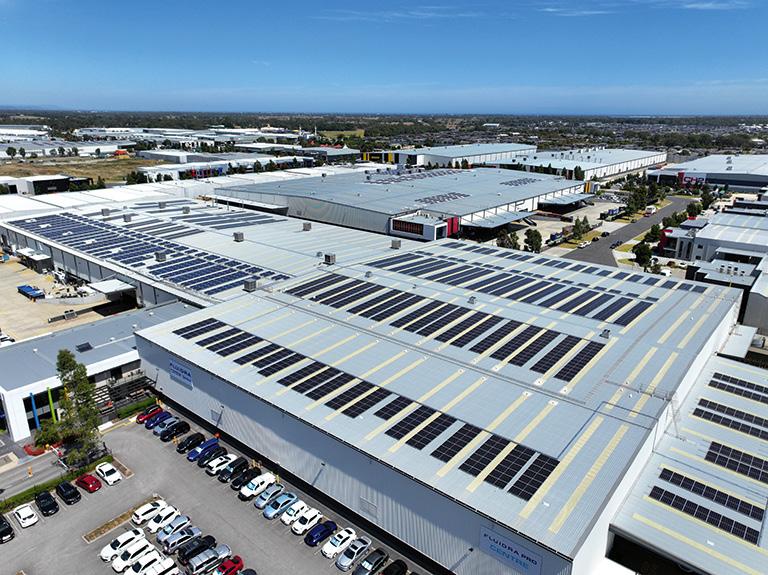
Project specifications
Project Size: 785kW (new installation)
Existing Solar Capacity: 187kW
Total Solar Capacity: 972kW
Number of Solar Panels:
1365 x Trina Solar 575W
Inverters: 6 x Sungrow 110kW
Annual Production: 975,000kWh
Carbon Savings: 1050 tonnes per year
Spiros Dassakis
take this next step supporting organisations across sectors with regulation, compliance and strategic advice through my consultancy firm NextGen Experts, I remain committed to strengthening SPASA’s advocacy and policy work into the future.”

New SPASA CEO Kristin Brookfield brings extensive experience in national policy and state-level advocacy, having led efforts across workplace relations, planning, building and environmental legislation, skills development and economic policy.
“I recognise the value Spiros has given to SPASA over two decades and I look forward to his ongoing support in the future to learn the insights of swimming pool and spa regulations and standards,” she says.
“The parallels with my experience in residential building will help me lead the association’s next steps in advocacy and member engagement and I’m confident we can continue to support the members to maintain their voice at the many tables SPASA currently sits on.”
reducing the facility’s reliance on nonrenewable energy sources.
Butler says that by embracing solar energy, Fluidra is not only cutting operational costs but also contributing to a healthier planet. Fluidra’s expanded solar capacity is expected to save approximately 1050 tonnes of carbon emissions each year. This reduction is equivalent to planting over 50,000 trees or removing 225 cars from the road annually.
“This solar project is a testament to Fluidra’s dedication to sustainable practices and innovation. It aligns with their broader environmental goals and sets a benchmark for other companies in the industry. Fluidra’s proactive approach to sustainability demonstrates their leadership and commitment to making a positive impact on the environment,” he says.
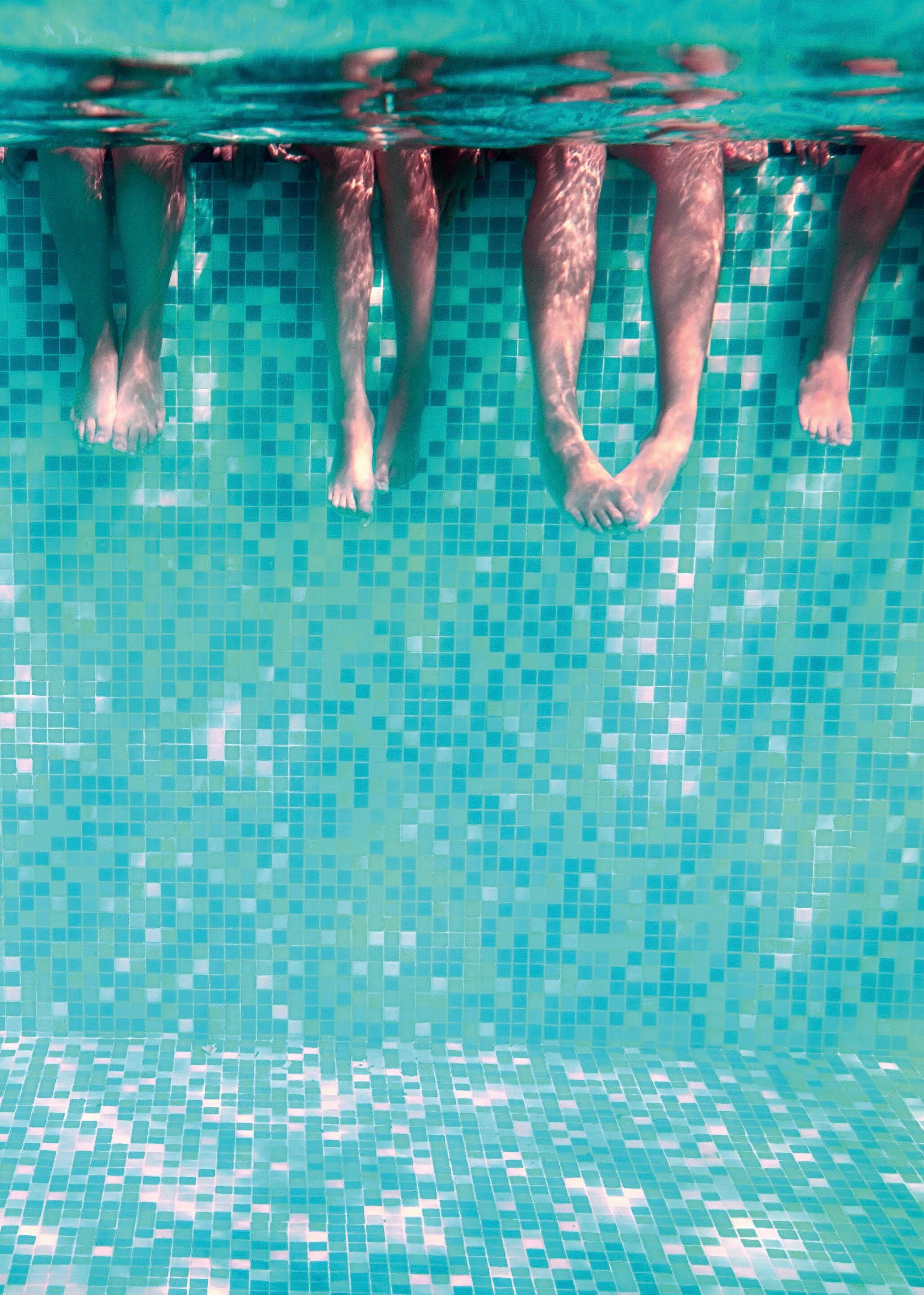

Aqua-Quip designs and manufactures in Australia, innovative underwater LED lighting systems for use in concrete and fibreglass swimming pools, spas, water features and catch tanks for the Australian and international pool markets.
Lights are compatible with all popular pool controllers and home automation systems. The innovative InstaTouch™ Smart Lighting Controller provides instantaneous control via a water-resistant handset to enhance the evening atmosphere in your pool and spa.
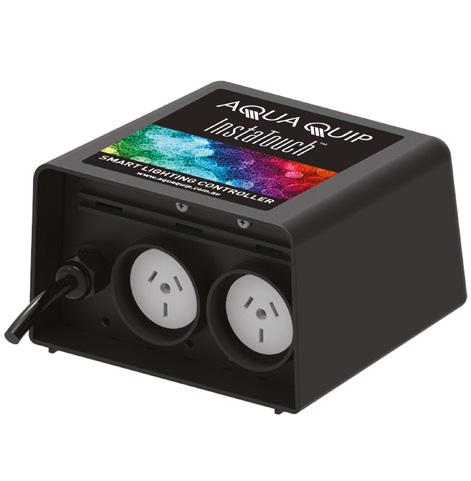
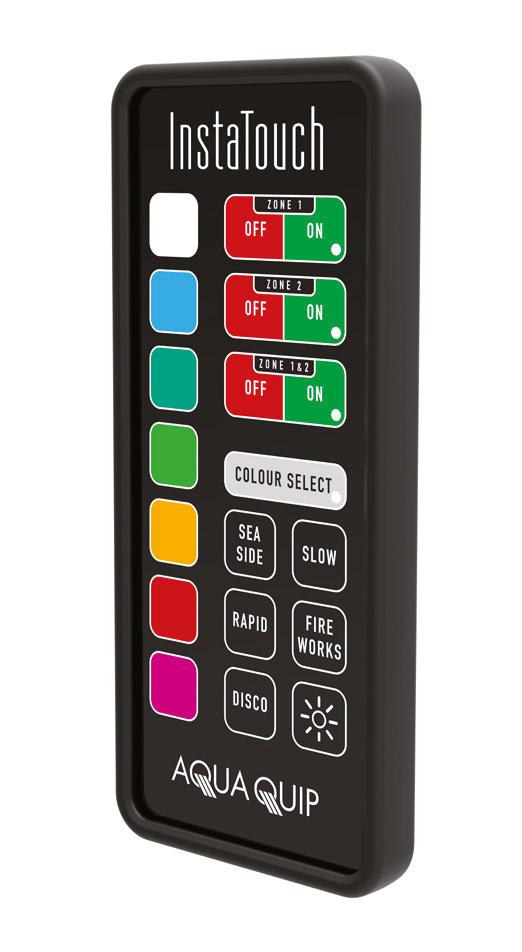
After two decades of dedicated service to the pool and spa industry, Lee Schatkowski, long-time Queensland area manager for Daisy Pool Covers, has officially announced his retirement.
Schatkowski began his journey with Daisy in 2005 as the company’s first fulltime area manager in Queensland. With no prior experience in pool covers, but equipped with a strong trade background and a natural sales acumen, he quickly became the trusted face of the Daisy brand across the state and beyond.
“Hiring Lee was one of the easiest and best decisions I’ve made,” says Derek Prince, managing director of Daisy Pool Covers.
“He hit the ground running, built lasting relationships, and helped drive Daisy’s growth through some of the industry’s most challenging periods – including the GFC. He did it all with professionalism, humour and genuine heart.
“We thank Lee for his outstanding contribution over the past 20 years.”
Schatkowski played a pivotal role in expanding Daisy’s footprint in the trade and retail sectors, from training franchise groups and independent pool professionals to supporting site installations and addressing logistical challenges brought on by environmental events. His contribution has extended far beyond sales.
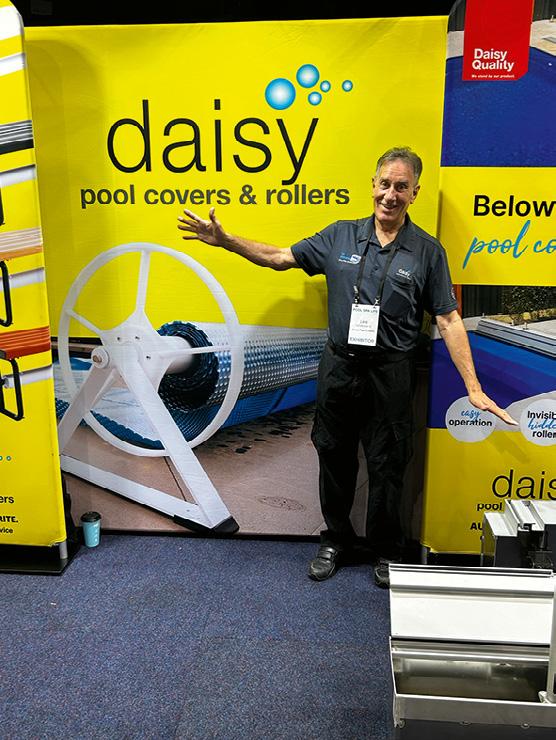
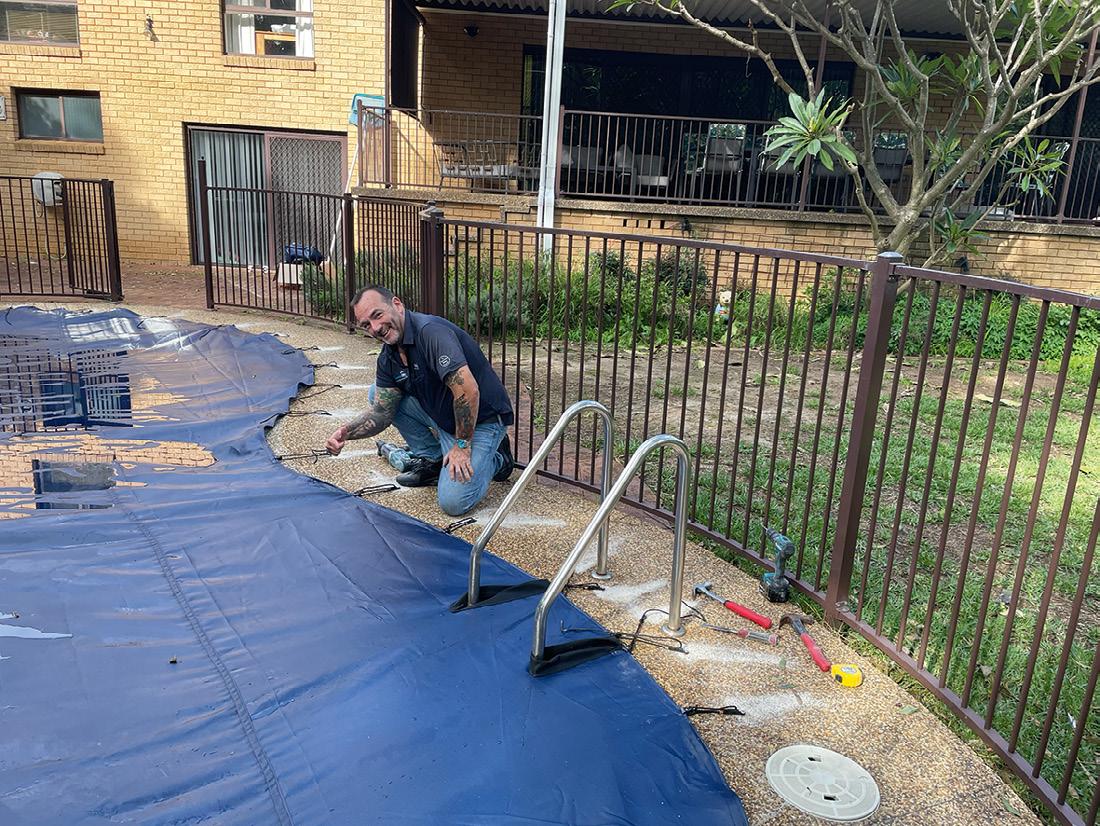
capturing moments that became part of the company’s visual legacy.
Grant McLaughlin will step into the vacated role of Queensland area manager.
Prince says that McLaughlin brings great energy and a strong customerfirst mindset to the role.
“He hit the ground running last week in Sydney with in-depth product training, and he’s already been out on installs, learning the ropes firsthand.
“With a keen interest in supporting our trade customers across Queensland, Grant is ready to get out on the road, visit stores, and ensure a smooth transition.”
Meanwhile, Daisy has announced the launch of a new premium hard pool cover system, using high-performance polycarbonate slats and commercial-grade automation, available now through the national installer network and targeted at premium residential pool market.
Ben Coyne, strategic accounts manager at Daisy, says that Schatkowski’s passion for the brand and his willingness to mentor others made him not just a colleague, but a leader in every sense.
“His knowledge, integrity and support have left a lasting legacy on our team and the wider industry,” Coyne says, adding that beyond his technical capabilities and deep product knowledge, Schatkowski is known for his calm approach, infectious humour and unwavering support for customers and colleagues alike.
His photography hobby often blended with his professional work,
“We’ve taken everything we’ve learned in over 40 years of pool cover manufacturing and combined it with proven European performance to create a hard cover system that’s reliable, safe, and built for Australian backyards,” says Prince.
“It incorporates inhouse engineered control systems already used in industrial and commercial applications, and comes in both above-ground surface mounted units ideal for retrofits and below-ground, recessed systems fully integrated for new pool builds or high-end finishes.”
Contact: Grant McLaughlin, 0400 686 026, grant@daisypoolcovers.com.au
Michael Bishop has been promoted to Sunlover’s national sales strategy manager, leading the development and execution of national sales initiatives, and ensuring alignment across state teams and marketing.
Sunlover’s managing director Steve Rickard says the move reinforces the company’s commitment to strategic growth and customer success.
“Since joining Sunlover 18 months ago, Michael has delivered exceptional outcomes, leveraging his expertise in sales leadership and strategic planning to expand market reach and enhance partner
performance. His analytical mindset and collaborative approach have established him as both a trusted team player and respected industry professional,” he says.
Rickard also praises Bishop’s impact in his earlier roles.
“Michael’s ability to translate market insights into actionable strategies has been invaluable. His promotion reflects our confidence in his vision to elevate Sunlover’s sales framework and support our customers in achieving long-term success. This role is pivotal as we innovate and grow, and I know Michael is up for the challenge.

“As demand grows for smarter, more efficient solutions, this appointment ensures Sunlover maintains its edge through our Oasis Heat Pump and Aquatics range, supported by our award-winning service network.”
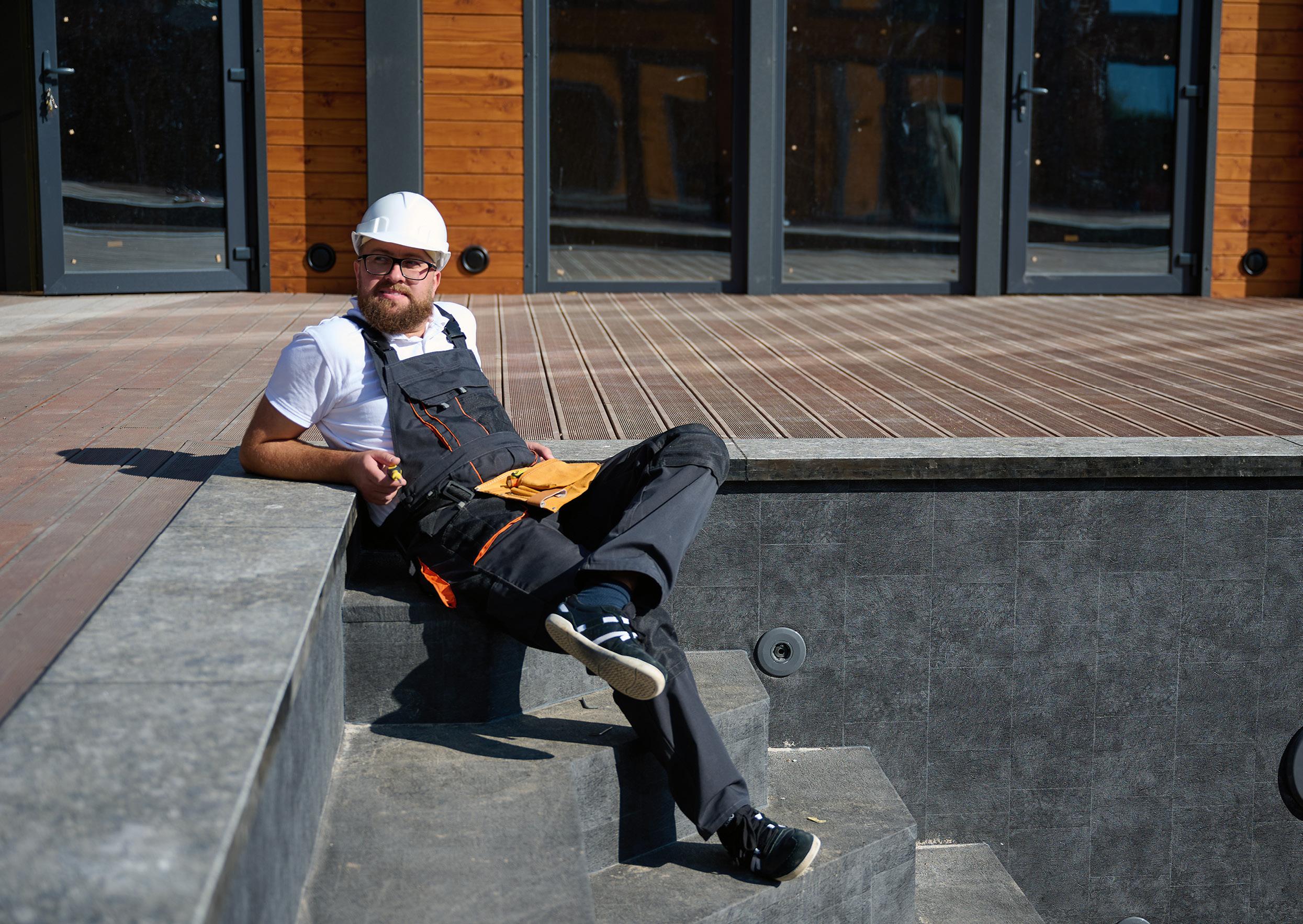
By Brett Abbott
At the end of last year, we surveyed more 500 US pool builders and asked: “What are your top business concerns for 2025 and beyond?”
I think the results may be pretty similar if we ran the survey in Australia.
The top concern was “finding enough good quality leads”.
For the past 10 years, digital marketing (that is, Google Ads) was the number one go-to source for new pool leads. Reliable and cost-effective, that’s where most homeowners go to begin their search for a new pool. So it was consistently a smart place to advertise.
But in today’s hyper-competitive post-covid market, we’ve got fewer homeowners looking for a new pool (because they already bought their pool three years ago, during the covid panic), and we have more pool builders than ever trying to squeeze more leads out of Google.
Thus, the cost per lead is getting higher than ever, and the leads available are a fraction of what they used to be.
I describe this situation as too many hungry lions and not enough antelope to go around.
Google Search just isn’t coming through for most pool builders like it used to.
That’s why this is a perfect time to look at some alternate sources of new pool leads which are often overlooked. I encourage you to take a closer look at these three sources in particular, as they will almost certainly help you drum up more leads without throwing more money at Google.
I’m not talking about the passive approach of “We appreciate your referrals”. Nor am I talking about begging or bribing for referrals. I’m talking about proactive strategies that can greatly improve the likelihood of you getting more referrals from current and past clients.
Now if you’re among the 10 per cent or so of pool builders who offer a cash reward to your clients when they refer someone who buys a pool, let me be blunt. This is a bribe. No offence, but this is a strategy typically used by companies that do not impress their clients.
“ When I refer my friends to certain businesses, it’s because I want to help my friends. I don’t do it because the business asked me to.”
And while I won’t tell you to stop doing it, let me tell you why an alternate strategy may be better.
Take a moment to think about the last time you referred a friend or neighbour to a business. Was it because the business owner bribed you with a referral fee? Or they begged you to give them the names of your friends and neighbours so they could try to sell them something? Or more likely, was it because you were thrilled with what they did for you, and were also therefore thrilled to let your friends and neighbours experience that same joy?
When I refer my friends to certain businesses, it’s because I want to help my friends. I don’t do it because the business asked me to.
And consider this. That homeowner probably paid you $150,000 or more to transform their backyard into something beautiful. That means their home is probably worth a few million. Their annual income may be $200K. If they wanted to buy a new car for $50K+, they could probably pay cash.
Do you think a mere $500 from you is going to inspire them to take action on your behalf? Personally, I don’t think so. In fact, I think it’s kind of an insult.

Home builders are a good source of pool customer leads
In fact, let me go one step further. The rare homeowner who is truly motivated by your token referral fee of $500 is probably a budget buyer who had to stretch a little to finance their own pool. And while that’s not bad or wrong, it means the friends they refer to you may be similarly stretched to finance a pool.
So rather than offer $500 to reach people who probably can’t afford you anyway, I would instead encourage you to focus on keeping all of your clients as happy as possible. While you build them a fine-crafted product, be sure to maximise your communications with them, from the first interaction until 20 years after you’ve finished the pool.
In my experience, speaking with homeowners who bought swimming pools from my clients, I found that proactive communications was the single most effective way to maximise their satisfaction. This is especially true during the construction process, but it continues long after the pool is completed.
For example, I’m a big fan of sending an automated “Happy Birthday to your Swimming Pool” greeting every year, celebrating the day the pool was finished. This ensures you remain topof-mind for decades after the pool is completed.
A more aggressive way to get more referrals is to arrange for a catered party for some of your top-tier clients who are well-positioned to refer you to similar top-tier prospects.
I know of one well-known pool builder who paid $50K to fly in a world-famous chef for a catered party for one of his ideal clients, and wound up selling well over $2M in new business because of that one event. That’s less than 2.5 per cent marketing expense, which is probably better performance than you’re getting from Google right now.
Recently, a pool builder in Florida was sharing his frustration that thousands of people are moving to Florida, and homes are being built all over the place, and he hasn’t got a single lead from any of those neighbourhoods.
“The only difference between these two pool builders is that one is sitting at his desk complaining, while the other goes out and builds the relationships.”
So I asked if he had gone over and introduced himself to any of the home builders. He had not.
I told him about a pool builder client of mine in Southern California who gets laser-focused on a few new neighbourhood developments, and strives to be the preferred pool builder for everyone who moves in.
This means he will:
• Go meet the developer.
• Find out who the primary home builders will be for the neighbourhood.
• Call each home builder, and offer to buy them lunch.
• Establish a relationship with each builder, and discuss a possible referral partnership.
• Go out of his way to make sure the homeowners AND the home builders are both thrilled with the work by him and his team.
• And occasionally do something special for the home builders (like once a year), to remind them of his appreciation for their referrals.
As a result, he gets plenty of referrals from the home builders and the homeowners, and typically sells and builds more pools in that neighbourhood than all other pool builders combined.
The only difference between these two pool builders is that one is sitting at his desk complaining, while the other goes out and builds the relationships.
As powerful as networking can be to generate new leads, I’ve noticed most pool builders and pool designers consider themselves too busy to spend a couple of hours each week meeting with other business owners and agents who might know someone who’s thinking about getting a new pool.
And if you’re already loaded with plenty of projects, then perhaps this strategy isn’t right for you.
But if your designers and salespeople seem to be “not-so-busy” lately, and they’re complaining about not having enough leads, then you might want to point them in the direction of an aggressive networking strategy.
After all, just about every decent-sized town has dozens of networking meetings every week. (A quick Google search will find these for you.) In a room of 50 people, chances are that at least two or three are either thinking about buying a pool, or know someone who’s thinking about buying a pool.
When you attend a networking meeting, be sure to bring at least 50 business cards with you, because most of these groups will allow you to pass your cards around to everyone in the room.
No matter what, always use a compelling “elevator pitch” that will (1) “interrupt and engage” your listeners, and (2) give them an easy and compelling way to connect with you.
And don’t forget my dirty little secret about networking meetings. You can join one and meet the same 50 people over and over again, week after week. Or you can visit 50 different networking meetings and meet several thousand people instead. I call this the Visit All, Join None strategy.
So there you have it, three alternate ways to generate new pool leads without giving any more money to Google. I encourage you to try at least one of these strategies, to keep the leads flowing and keep your team busy for the rest of the year. n
www.poolbuildermarketing.com
Maytronics Australia’s marketing and customer experience manager
David Dean discusses the importance of customer loyalty and how it can be the foundation for success.
In an industry as competitive as the pool sector, customer satisfaction isn’t just a nicety; it’s the backbone of long term success.
Whether you’re a pool builder, service technician or retail specialist, the experience you deliver to your customers today can determine your business’s trajectory tomorrow.
The pool industry has a lot of moving sands at the moment, and for sure at Maytronics we have seen this with the emergence of more competition, but it’s important to know why prioritising customer satisfaction and creating exceptional experiences are not just good practices but essential strategies for fostering loyalty and driving business growth.
Customer satisfaction reflects how well your business meets or exceeds customer expectations. For pool professionals, this means ensuring the products you offer, the services you deliver, and the interactions you facilitate leave a lasting positive impression.
Here’s why it matters:
Repeat business: Satisfied customers are far more likely to return for additional services, upgrades or accessories. Research shows that increasing customer retention by just five per cent can boost profits by 30 per cent.
Word of mouth: Happy customers are your best advocates. They’ll recommend your business to friends, family and neighbours, effectively becoming a free marketing channel.
Differentiation: In a crowded market, exceptional service sets you apart. Customers remember businesses that go the extra mile, and that memory translates into loyalty.
Higher lifetime value: A loyal customer contributes more over their lifetime, purchasing higher-margin products and services and requiring less effort to sell to, compared to new customers.

By David Dean
Delivering satisfaction isn’t just about meeting expectations – it’s about exceeding them. Here’s how pool professionals can create an unforgettable customer experience:
Take the time to learn about your customers’ needs and preferences. Are they looking for energy efficient pool solutions? Do they value automation and ease of use? Tailoring your recommendations to their unique requirements builds trust and demonstrates your expertise.
Clear communication can make or break a customer relationship. Provide detailed information about products, services, timelines and costs. Keep customers updated at every stage of their journey, from initial inquiry to project completion.
Reliability and quality are non-negotiable. Partner with trusted brands, ensure your work meets high standards, and stand by your offerings with warranties or guarantees. Work with established brands who have longevity and know what consumers want.
Personal touches, like remembering a customer’s name or following up after a purchase or service, can leave a lasting impression. Small gestures show customers that they’re more than just a transaction.
Handle issues proactively
Mistakes happen, but how you handle them defines your business. Address complaints promptly, take ownership of errors and work towards a resolution that leaves the customer feeling valued.
Loyal customers are the lifeblood of any successful business. Its far cheaper to retain an existing customer rather than acquire new customers.
Here are some ways to reward and retain them:
• Loyalty programs offer discounts, exclusive deals, or points for repeat purchases. For example, a pool service loyalty card could reward customers with a free maintenance session after a certain number of visits.
• Exclusive access provides loyal customers with early access to new products or services, creating a sense of exclusivity.
• Create a customer newsletter.
• Referral incentives encourage satisfied customers to bring in new business by offering rewards for referrals.
• Show appreciation. A simple thank you note, holiday greeting, or follow up call can go a long way in strengthening customer relationships. In the pool industry, where relationships matter as much as the products and services you offer, customer satisfaction is a powerful differentiator. By prioritising exceptional experiences and rewarding loyalty, you create a foundation for sustained success. n
“Research shows that increasing customer retention by just five per cent can boost profits by 30 per cent.”




As Lindsay McGrath moves on from a decade as SPASA CEO, he discusses with Veda Dante the strategic reforms and unified leadership that helped protect, grow and professionalise the Australian pool and spa sector.
Picture this. It’s the 1950s, and the Aussie suburbs are booming. The post-war dream is alive, and families are flocking to build homes and, with them, backyard swimming pools.
But forget today’s sleek machines and digital levelling tools. Concrete pools ruled the day, usually poured in-situ over hand-tied steel rebar framework. Fibreglass was still in its infancy, and vinyl liners were unheard of in Aussie backyards. There were no laser levels or robotic total stations – string lines, spirit levels and a good eye got the job done.
What began as a hands-on, highly localised trade where knowledge was passed from builder to builder and every job was shaped by instinct and experience, would over the decades evolve into a multi-billion-dollar industry defined by innovation, regulation and professionalism. Pools were no longer just backyard luxuries; they became lifestyle statements, complex engineering projects and, increasingly, essential to the Australian way of life.
By Veda Dante
As consumer expectations rose and technology advanced, so too did the need for a unified body to guide, protect and advocate for the sector. That voice was SPASA: the Swimming Pool & Spa Association of Australia, now the central force driving standards, education, sustainability and national cohesion across every corner of the industry.
SPASA’s roots trace back to the 1960s and 1970s, when individual state associations were formed to represent the interests of the industry within their respective regions. In the mid-1970s, the Council of Australian Swimming Pool Associations (CASPA) was established as the first national body, bringing together delegates from each state. However, it wasn’t until 1988 that the first version of the Swimming Pool & Spa Association of Australia Ltd was formed, aiming to provide a more cohesive national representation.
Despite early efforts, the industry remained fragmented, with state associations operating independently. This decentralised model created challenges in areas like licensing, compliance, and consumer protection; and led to inconsistencies in training and support across regions. Businesses faced frustration navigating these complexities.

Recognising these issues, SPASA leadership worked behind the scenes for years to unite the industry. Through strategic dialogue and careful planning, it became clear that the status quo was unsustainable. SPASA then focused on fostering collaboration across state lines to create a more unified approach to advocacy and professional development.
It’s this collective commitment that underpins SPASA’s renewed direction and the power of working together as one industry voice.
When Lindsay McGrath attended his first SPASA meeting in 2009 as managing director of BioLab, he was there as a sponsor and a member.
What he saw that day, however, sparked his vision for what the swimming pool and spa industry could become.
“I remember introducing myself to the president at the time and he said, ‘Ahh, a supplier. Without builders there is no industry’,” McGrath recalls. “That members meeting highlighted the lack of a career path due to no qualifications, no advocacy and an association that was caught up on a single industry sector and losing money. At that moment, I knew we could do better.”
That first SPASA meeting helped set in motion more than a decade of transformative change. McGrath moved from frustrated observer to regional leader, later becoming the president of SPASA South Australia. He helped establish the Swimming Pool Retail and Associated Association (SPRAA), which was the first national group to focus on training and qualifications for service professionals.
“ When people come together with the right intent, there’s almost nothing we can’t achieve.”
From there, McGrath took on a national leadership role, chairing the Construction and Property Services Industry Skills Council (CPSISC) committee to drive the formal recognition of pool and spa servicing as a profession. His efforts along with the SPRAA committee were instrumental in establishing Certificate III and IV qualifications for technicians – a milestone that helped raise industry standards across the country.
In 2011, McGrath became a founding director of SPASA Australia, helping unite the state-based associations into a single national body and stronger industry voice.
Demonstrating his ongoing commitment, he then extended his volunteer leadership from
South Australia to New South Wales – taking on the role of vice president during a particularly turbulent period. At the time, New South Wales had formed its own national association, but through steady negotiation and strategic diplomacy, he played a key role in guiding its return to the national fold.
“My goal has always been to build something greater than any one organisation, a truly national voice that represents and supports the entire industry,” he says.
“When people come together with the right intent, there’s almost nothing we can’t achieve.”
Motivated by that vision, McGrath eventually left corporate life to take on the role of CEO at SPASA Australia, determined to drive meaningful change from within.
“I saw an opportunity to do something that would have a lasting impact,” he says. “The association needed to start thinking beyond short-term challenges and begin building a multigenerational organisation that could shape the future of the industry.”
In 2016, the industry reached a pivotal milestone when SPASA NSW and ACT members voted overwhelmingly in favour of merging with SPASA Australia. The Special Resolution was backed by an extraordinary 97 per cent of voting members – a clear mandate for national unification after years of fragmentation.
That same year, the board published One SPASA in this publication, a strategic blueprint that outlined its long-term vision for a single, united association across Australia and New Zealand. At its core were bold constitutional objectives to promote, protect and develop the industry.
Realising this vision required an agile start-up mentality, capable of navigating six acquisitions, four mergers and the complexities of uniting diverse state-based entities.
At the time, SPASA NSW CEO Spiros Dassakis hailed the vote as “an historic step” for the industry in the October 2016 edition of SPLASH!
“Today’s announcement is the exciting next chapter for SPASA, bringing together leaders of industry with a shared mission of
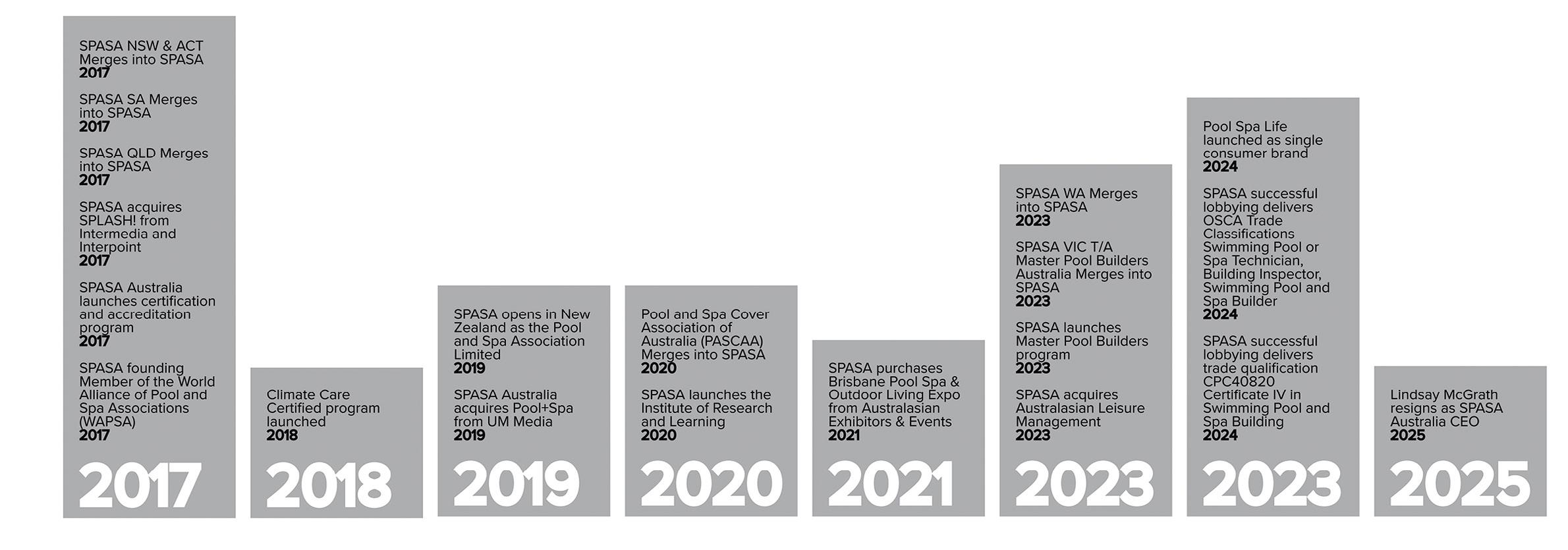
Long before automation, smart pumps and pre-engineered shells, pool building was a raw, hands-on trade. Jim Vansleve from Norfolk Pools shares a vivid glimpse into what it was like to build a swimming pool in Brisbane more than 50 years ago.
“In 1972, when I started with Gerry Brown Swimming Pools in Brisbane, most pools were 30ft by 15ft and 6ft deep,” he recalls. “They were finished with imitation sandstone biscuit coping, three rows of 4x4 inch powder blue waterline tiles and a white marble sheen interior. Basic stuff. Back then, a pool cost $3200.”
Vansleve describes how Gerry Brown Pools, then the only pool company in Brisbane, was managed by Leo Marcus.
“I learned to box and steel a pool from an old fella named Henry Steinhardt, considered the master builder. My toolkit was simple: nail bag, hammer, two-inch bullet head nails, a seven-pound sledgehammer, circular saw, spirit level, shovel, and a set of 942 bolt cutters.”
Steel was tied by hand with bag ties and bent using a makeshift setup: “We used a sawn-off piece of steel waterpipe on a saw horse to bend the hooks for coping bars,” he explains. “The steel was 3/8 square twist placed at one-foot by onefoot centres, with nine-foot intermediate bars in the deep end.”
Concrete was sprayed in using a Squeeze Crete pump and then hand shaped.
“We had two cutters: one on top with a brickie’s trowel to shape the coping, the other below scraping the walls with a three-foot piece of formboard to shape the curves,” he says.
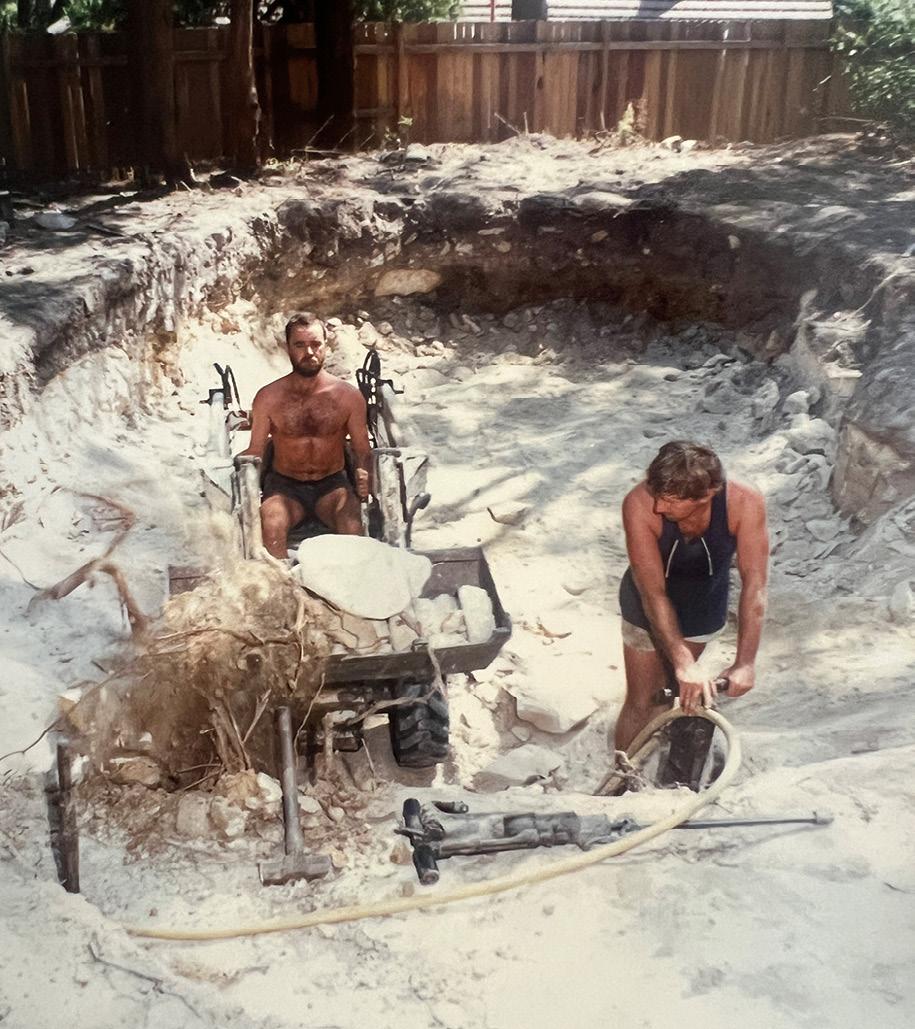
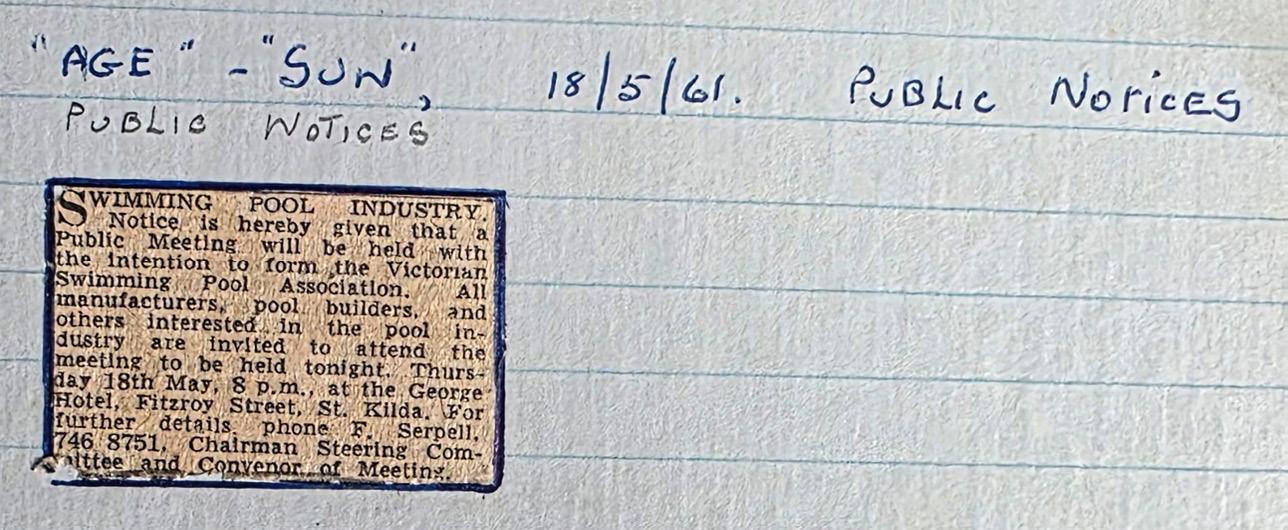
A string of piano wire was then tensioned across the pool to gauge the width of the coping and thickness of concrete.
“It was a real revelation when Leo introduced shaping knives from the United States, they replaced the old three-foot scraping board. Game changer,” Vansleve recalls.

Even finishing touches were labourintensive. “The sandstone biscuit coping was formed with hand-mixed sand, cement and yellow oxide mud, floated and stripped the next day. Waterline tiles were glued individually, one at a time.”
As for the interior? White marble and Danish white cement arrived in bags on a flatbed truck. Vansleve says it was all mixed on site, barrowed to the pool, and trowelled in by hand.
“Took the whole day to do just one interior,” he says.
Many of these pools are still in use today – a testament to the workmanship of the era.
“Those were the good old days,” Vansleve says. “Hard work, but incredibly rewarding.”
Top then clockwise: The small newspaper clipping and handwritten sign-in book, both dated May 18, 1961, mark the founding call to establish the Victorian Swimming Pool Association.

Some of the past presidents of SPASA NSW, Images courtesy of Sunrise Pools director Janine Bellifemine
“All manufacturers, pool builders, and others interested in the pool industry are invited to attend the meeting to be held tonight.”
The old school way it was done back in the day, wearing a singlet or bare-chested
improving how we lobby, regulate, create more sales for members and provide better outcomes,” he said at the time.
“The pool and spa industry is a dynamic network of interconnected professionals, ranging from concrete pool builders and fibreglass manufacturers to service technicians, designers and government authorities. Each play a vital role in the growth and development of one of Australia’s most cherished outdoor leisure sectors. At the core of this industry are the people, entrepreneurs, tradespeople and experts who are committed to enhancing the safety and enjoyment of Australian homes, resorts and public spaces.”
Under McGrath’s leadership, that vision became reality. SPASA evolved from a network of six siloed industry bodies, each with its own CEO and a combined total of 74 directors, into a streamlined national organisation with one CEO, nine directors and 26 full-time staff. During that time, annual turnover grew from around $350,000 to more than $12 million, enabling major investments in training, marketing and long-term brand development. (See graphic representing annual growth below.)
“SPASA now operates a profitable registered training organisation, manages two business-facing media brands across the domestic and leisure sectors, and has a nationally recognised consumer brand,” McGrath explains.
“It’s about building an organisation that invests in the industry’s future –supporting generations of pool and spa professionals while leaving a lasting legacy.”
Much of the association’s success stems from the leadership philosophy introduced by its CEO: “We’ve always operated with a ‘surplus for purpose’ mindset. ‘Not for profit’ is a tax status, not a strategy. We’re here to serve the industry, and every dollar we make gets reinvested into better training, advocacy and support.”
McGrath and his team of industry experts championed a whole-ofindustry approach – one that supports not only pool builders but also service technicians, retailers, and the wider ecosystem that drives the sector forward.
“It’s not only about concrete and construction,” he says. “It’s about creating a system that supports every part of the supply chain.”
This leadership style also modernised the way SPASA works. Long before the pandemic, more than half of its staff worked from home, and new ideas were tested rapidly through his “ready, fire, aim” model.
“We forced change by launching something new every 90 days,” he says. “You can’t wait for the perfect plan. Progress beats perfection.”
Behind the scenes, McGrath focused on strengthening SPASA’s organisational foundations by applying principles of good governance and long-term capability building. Drawing on experience gained from a range of advanced qualifications including an MBA, Certified Association Executive accreditation, and executive education at Oxford University, he worked to benchmark SPASA against more established industry bodies.
“These weren’t just credentials,” he says. “They gave me a way to measure what we were doing against the best in corporate and for purpose companies to ensure we were building something that could last.”
Today, McGrath sees SPASA not as a trade association in the industry, but above it.
SPASA’s financials graph, as presented to the 2025 AGM

“We don’t build pools. We don’t service pools. Our job is to provide purpose, protection and promotion. That’s the true role of an association,” he says.
“A lot of people misunderstand that. At its core, every association is a strategic marketing organisation. We market to members and call it services, to government and call it advocacy, to consumers and call it promotion, and to students as training. Ultimately, it’s all about marketing the value of the entire industry. Providing that sense of direction and reassurance that someone is focused on the big picture is absolutely essential.”
“When you work across such a diverse array of stakeholders, you start to see the tangible impact you can have on a larger scale,” says SPASA chief operating officer Wendy Donaldson. “That’s the power of a united industry.”
Looking back, McGrath says he’s proud to have been a small part of the industry’s evolution.
“I came from trades, automotive, landscaping and horticulture and saw the pool industry had so much potential,” he says.
“I wanted to create the opportunities for others that I was lucky enough to receive in other industries. And I think, together, we’ve done that.”
The momentum generated by SPASA’s 2023 mergers marked a transformative chapter for the association, reinforcing its position as the leading voice for the pool and spa industry across Australia and New Zealand.
This wave of growth extended well beyond structural integration, it catalysed the evolution of SPASA’s brands and services. SPLASH! and Australasian Leisure Management (ALM) magazines now sit alongside the consumerfacing Pool Spa Life, forming a powerful media ecosystem that educates, promotes and connects the industry.
Initiatives like Climate Care Certified and Master Pool Builders continue to set new benchmarks in environmental leadership and professional excellence, while the expansion of expos, awards and member events reflects SPASA’s commitment to celebration, collaboration and industry growth.
To keep pace with this evolution and ensure services remain targeted and efficient, SPASA undertook a strategic consolidation in 2024, followed by a structural realignment in 2025 reimagining our strategic pillars and the creation of the TEAMS model: Training, Engagement, Advocacy, Marketing and Support.
“This framework was designed to sharpen focus, eliminate duplication and deliver more meaningful value to members at every stage of their business journey,” Donaldson explains.
“Under this model, Training and Advocacy have emerged as two of the most mission-critical pillars, shaping not just the future workforce, but also the policy environment in which members operate.”
Why TEAMS isn’t just a word –it’s a framework for success
To better meet the evolving needs of pool and spa professionals, SPASA has adopted a strategic framework built around five core pillars: Training, Engagement, Advocacy, Marketing and Support, collectively known as the TEAMS structure. More than an acronym, TEAMS represents a practical and purpose-driven approach to helping businesses grow, adapt and thrive.
“This isn’t just a model on paper,” says Donaldson. “It’s a deliberate strategy to deliver long-term value to members by focusing on the things that matter most to their success.”
Training – developing professionals, raising standards
The industry’s long-term accomplishments depends on a skilled and confident workforce. The Training pillar supports businesses to deliver industry recognised qualifications, short courses and tailored programs.
Through SPASA’s dedicated training arm, IRLearning, members access job-ready education designed to grow with the industry. The programs are continually updated to reflect changing regulations, emerging technologies and evolving consumer expectations, ensuring members stay ahead of the curve.
“We want our members to be seen as professionals, not only operators,” she explains. “That’s why we invest so heavily in structured, industry recognised and accredited training that builds both capability and credibility.”
Engagement – connecting businesses, strengthening community
A unified industry is a stronger, more resilient industry. The Engagement pillar creates meaningful opportunities for pool and spa professionals to collaborate, share knowledge and stay informed. From expos, awards and member forums to technical working groups, sustainability programs and networking events, SPASA helps foster a culture of trust, innovation and mutual support.
“It’s about building a community, not just a membership list,” Donaldson says. “When our members come together, they learn from each other, challenge the status quo and raise the bar.”
Advocacy – championing your interests, shaping your future
SPASA serves as the united voice of the industry by speaking directly to government, regulators and the public on behalf of its members.
“It’s about building an organisation that invests in the industry’s future – supporting generations of pool and spa professionals while leaving a lasting legacy.”
The Advocacy pillar ensures that critical issues are addressed, from recognition of trade qualifications and safety standards to navigating complex regulatory and compliance requirements.
“We don’t just respond to policy; we help shape it,” says Donaldson. “Our members know that while they focus on their businesses, we’re out there pushing for fairer, clearer, and more consistent regulation.”
Marketing – growing demand, creating opportunity
Amplified awareness leads to increased opportunity. The Marketing pillar drives national consumer campaigns, digital engagement, and brand-building initiatives that promote the benefits of pool and spa ownership while positioning SPASA members as the trusted experts.
“Good marketing doesn’t just promote a product,” Donaldson notes. “It elevates the entire industry and drives business directly to our members.”
Support guiding success, every step of the way
Running a pool and spa business comes with unique challenges. The Support pillar exists to make that journey easier. Members gain access to expert advice, legal and business tools, workplace templates, and ongoing compliance guidance.
“Support is what turns membership into partnership,” Donaldson says. “We’re here to help our members succeed at every stage of their business from start-up to succession planning.”
Looking ahead, united in purpose
Today’s SPASA is stronger, smarter, and better equipped to serve a dynamic and growing pool and spa industry. Evolving from a fragmented network into a unified, strategic organisation, SPASA now delivers national advocacy, professional training, and purposeful marketing, all aligned to help members grow and succeed.
As the industry continues to evolve, SPASA remains the constant, a trusted force guiding the sector toward a more professional, sustainable and unified future. With clear direction and deep expertise, it is not just keeping pace with change, it is leading it. n SPASA is the owner of this masthead.
After years of lobbying, Swimming Pool and Spa Builders and Service Technicians now have dedicated classifications under the newly introduced Occupation Standard Classification for Australia (OSCA) system. This means their work is formally recognised at a national level, paving the way for improved industry visibility, targeted training programs, and more accurate workforce data to support future policy and funding decisions.
Pool Building: Swimming Pool and Spa Builders were previously classified under ANZSCO Code 312112, has now been assigned its own distinct classification under OSCA Code 369932, Swimming Pool and Spa Builder.
www.norfolkpools.com.au
www.spasa.com.au
www.sunrisepools.com.au
Service Technician: Swimming Pool and Spa Service Technicians were previously categorised under ANZSCO Code 399999. Under the new system, OSCA Code 899937 Swimming Pool or Spa Technician.
Building Inspector: Previously, classified under 312113 now recognised as Specialised Swimming Pool Building Inspectors under the OSCA code 312231.








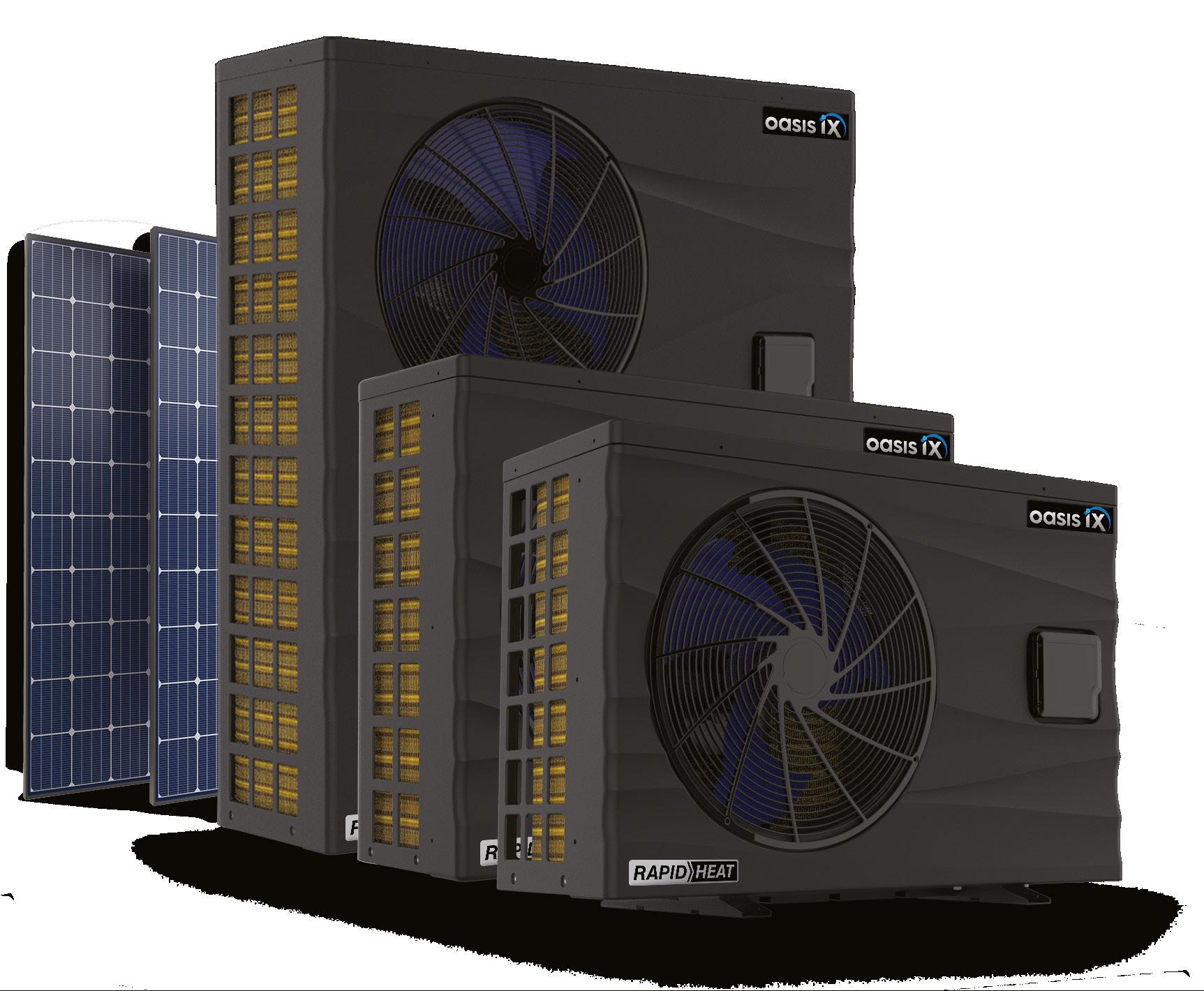
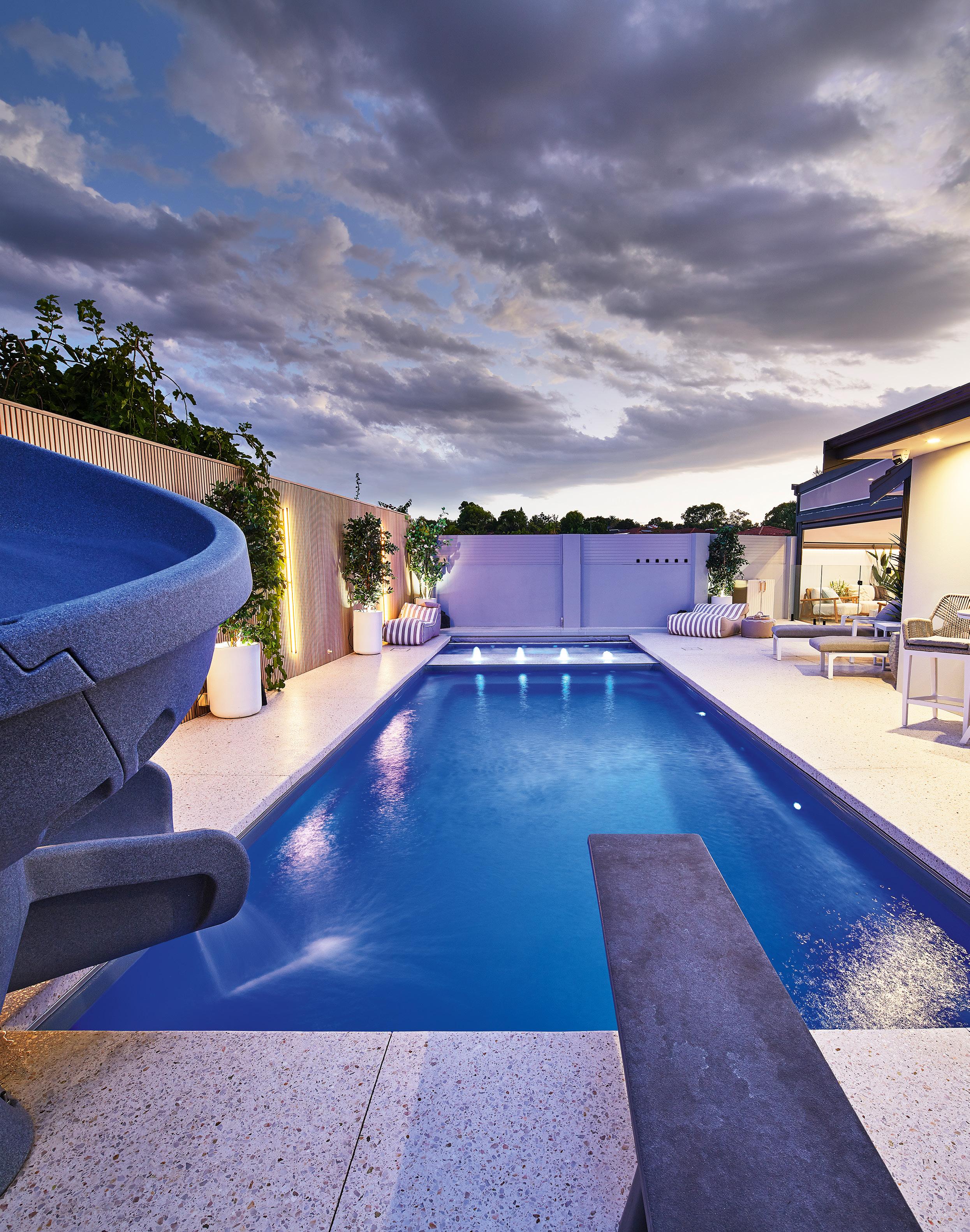
Barrier Reef Pools Group WA started out as a boutique offshoot of the Queensland manufacturer before developing into a multi-faceted multi-award-winning business.

Barrier Reef Pools Group WA came about nearly 20 years ago, when the Hilbert Family introduced the Barrier Reef Pools brand from Queensland into Western Australia, launching the new WA entity.
Under its banner there are now three companies: Barrier Reef Pools Perth, Factory Pools Perth and Factory Pools and Spas.
“It all started as a small three-person boutique family business,” says general manager Gina Nicholson. “But there was strong demand. The business was recognised for excellence and innovation, and rapidly expanded.”
To explain the difference between the Western Australian group and the national group, Nicholson says the national BRP Group is now the largest and most prominent fibreglass pool company and manufacturer in Australia, producing more than 4800 pools annually.
The Barrier Reef Pools Group National consists of Barrier Reef Pools and The Fibreglass Pool Company, and has eight display centres around the country, including Mandurah, O’Connor and Joondalup in Western Australia, one in South Australia and one in Newcastle, New South Wales, as well as one in southeast Brisbane and a giant display centre under construction on the Sunshine Coast.
“The Sunshine Coast super centre will showcase more than 25 inground pools and the very latest in exterior concepts and equipment, earmarked to be a gamechanger in pool displays.”
“It’s pure magic, and I think everyone in our industry should experience it at least once.”
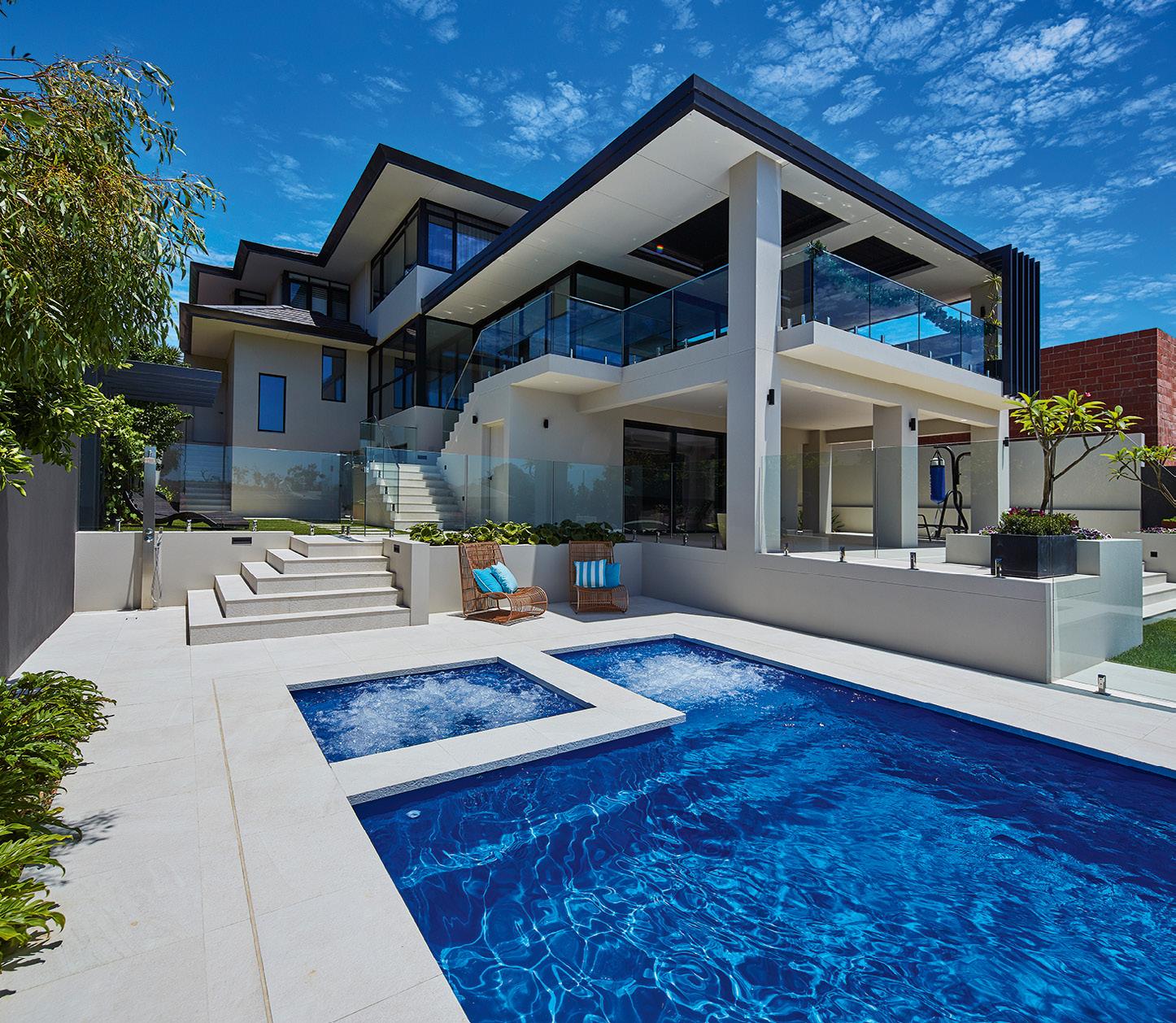
Nicholson says that Barrier Reef Pools Group WA is a fully integrated pool builder, encompassing every stage of the construction journey.
This includes manufacturing, retail and wholesale sales, logistics, marketing, procurement, service, warranty and aftercare.
“Over time, each of these elements has evolved to meet growing demand. What began as a small sales operation has grown into a vertically integrated business model, allowing us to maintain quality, control timelines, and ensure outstanding service from start to finish.”
The growth was based on meeting the needs of the market.
“The demand for our products and services consistently outpaced our ability to supply them,” she says. “In response, we began a major expansion of our manufacturing facility in 2021. This project was designed to double our production capacity and expand our R&D department, ensuring we could meet growing customer demand while maintaining high-quality product and services.”
Nicholson finds the job of running a successful, multi-faceted pool business rewarding – especially at the point when the clients get their pool.
“There’s nothing quite like the energy on-site when a pool is delivered – the moment it lifts off the truck and swings over the house, with the customer and half the neighbourhood kids watching in awe. It’s pure magic, and I think everyone in our industry should experience it at least once.
“But the best part? Seeing the smiles on our customers’ faces after that very first swim or being sent a photo of their completed dream backyard – that’s when you know you’ve created something special.”
In an economic environment where there is constant pressure on the bottom line, Nicholson focusses on maintaining quality in both products and services to keep the customers happy, and in turn preserve profitability.
“We focus on maintaining lean overheads without ever compromising on quality at any stage of the process,” she says.
“Our commitment to selecting only the best suppliers – many of whom we’ve built longstanding relationships with – allows us to secure competitive, reliable arrangements that support both profitability and consistency.
“This approach not only ensures the sustainability of our own business but also supports the many contractors and partner businesses that rely on our continued success.”
She says a focus on service also enhances their ability to remain competitive in the Western Australian market, which is a stronghold for fibreglass pools.
“The fibreglass pool sector in WA is extremely competitive,” she says. “So to remain at the top of our game we prioritise delivering five-star



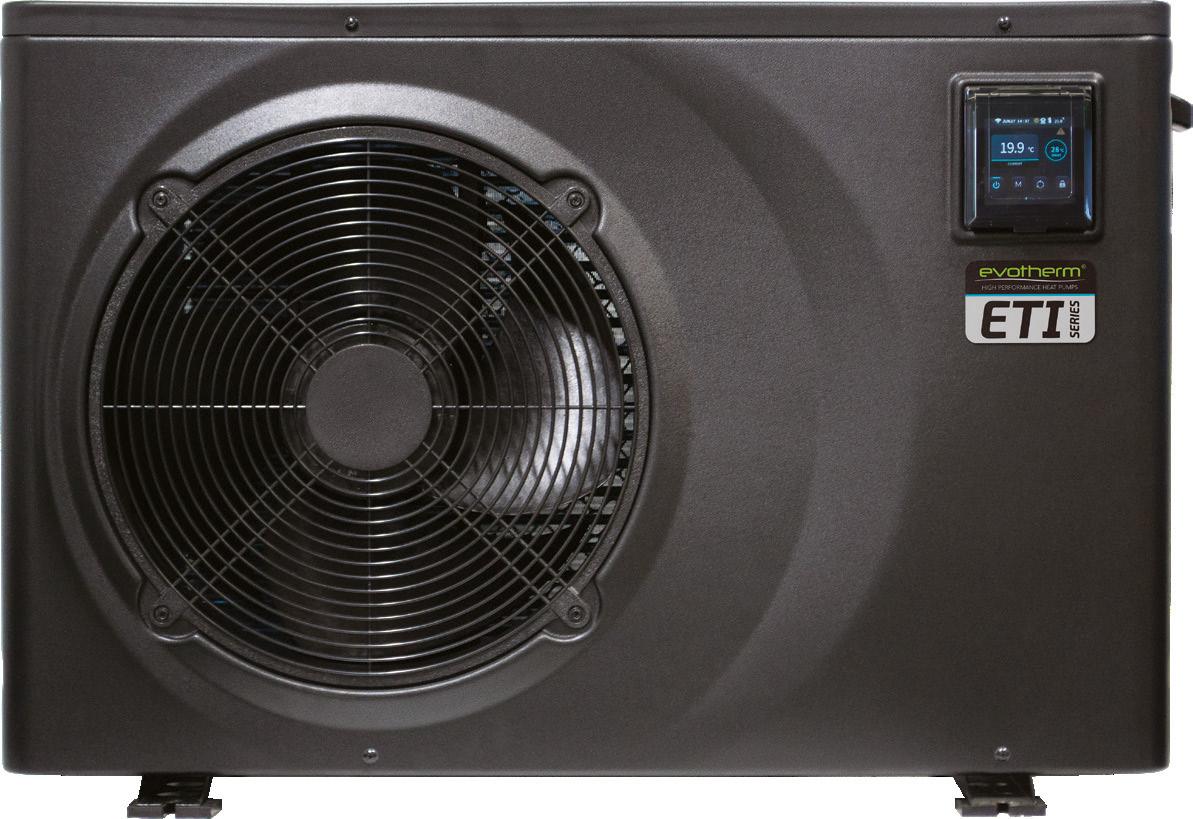


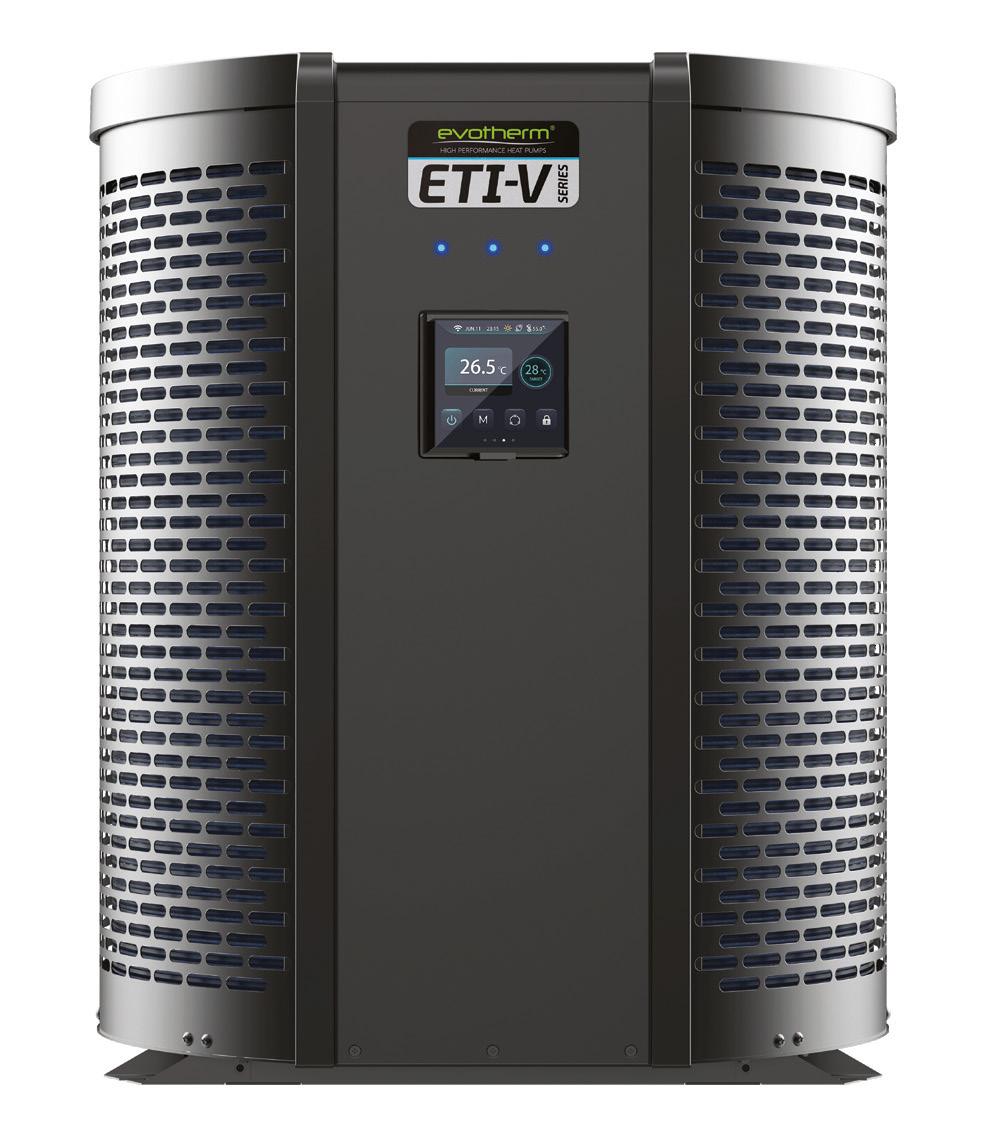
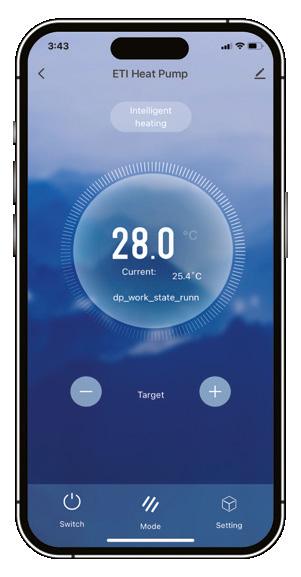


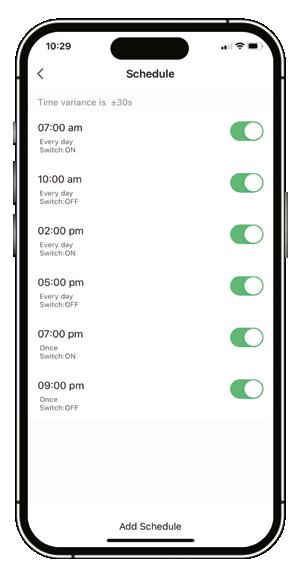


customer service. We believe in complete transparency during the sales process, and we’re committed to meeting – and exceeding – customer expectations for both quality and delivery.”
Nicholson points out that Barrier Reef Pools Group WA is the only SAI Global 5-Tick certified fibreglass pool builder in the state.
“We offer our customers and dealer network a level of confidence and credibility that sets us apart. That certification is a symbol of our commitment to excellence, and it reinforces the trust people place in our brand.”
One of the most important elements in keeping a business successful is retaining, training and engaging staff.
Nicholson says that while recognising contributions is key in this regard, so too is flexibility, which has helped revolutionise their approach.
“We believe that when people feel valued and trusted, they naturally become more engaged. That starts with recognising individual contributions and creating an environment where everyone knows their work matters.
“Flexibility has been a game changer. We’ve adjusted our hours and processes to support a better work-life balance and ensure we get the best from our team. Initiatives like rostered days off (RDOs) and access to external training opportunities help support both personal and professional growth.”
She also says empowerment is vital.
“We avoid micromanagement and instead empower our team to make decisions, take ownership of their roles, and actively contribute to shaping how we operate and grow as a business. This culture of trust and autonomy keeps our people motivated, loyal and proud to be part of the team.
“And while we work incredibly hard, we also believe in enjoying the journey. We’ve built a team culture where professionalism and pride go hand-in-hand with humour and camaraderie. That balance keeps our staff motivated and our customers happy – and we think it’s one of the key reasons we continue to outperform.”
“We believe we won the National Best Fibreglass Pool Builder Award because of our unwavering focus on quality, exceptional customer service, and investing in our people,” says Nicholson.
“Our diverse range of pools also ensures there is a perfect fit for our customers.”
She adds that they have a deep understanding of the Western Australian market and consistently work to meet the unique needs of both their customers and their dealer network.
“Our growing market share and strong online reputation are sources of great pride and reflect the trust we’ve built over time.
“Winning this prestigious award is a tremendous honour that validates the hard work
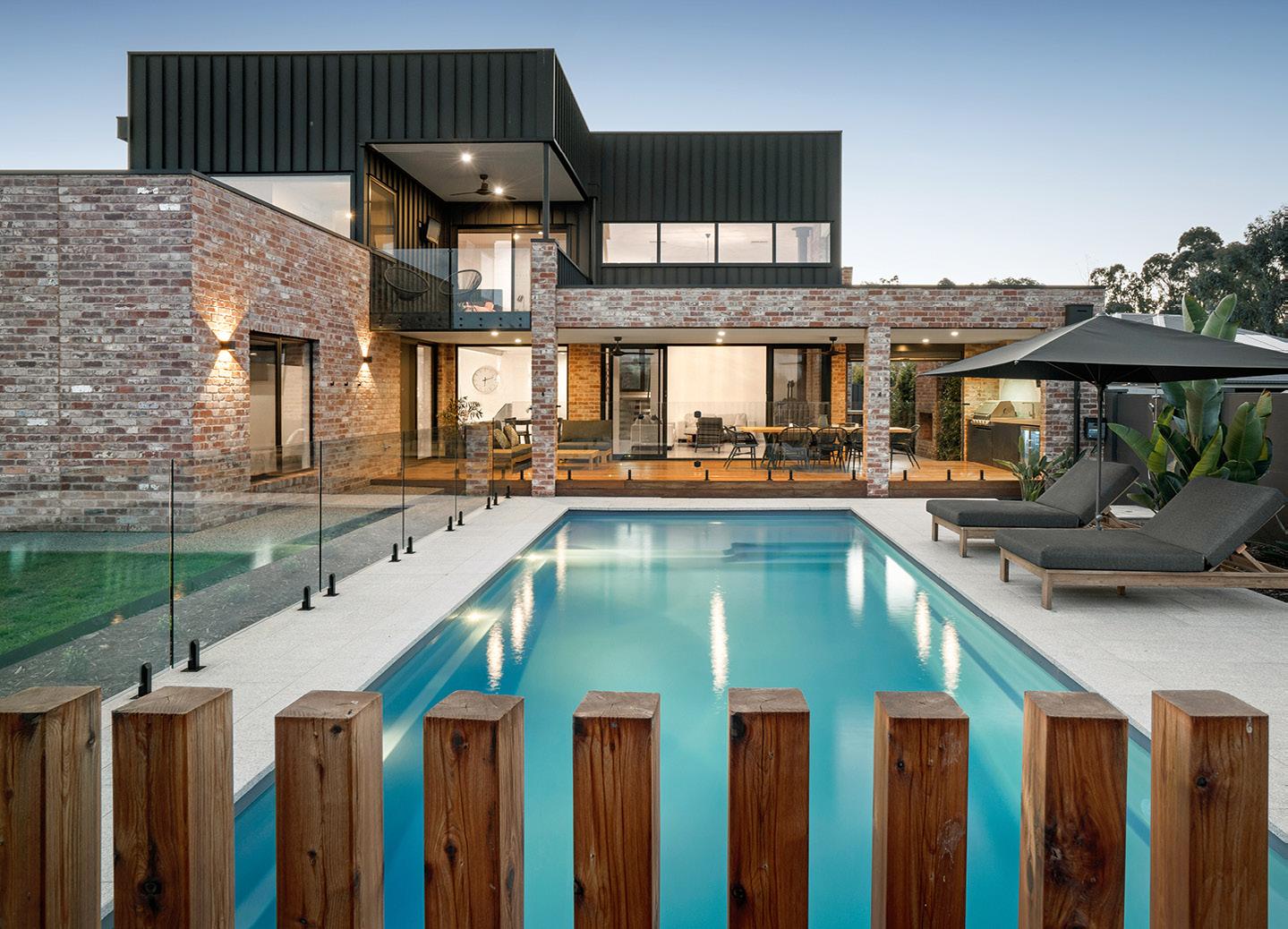
of our entire team. We proudly feature the award in our marketing and communications, giving our customers confidence they are choosing the best in the business. You’ll see the award showcased everywhere – from our email signatures, brochures, websites and social media channels, to display centres and the walls of our head office.”
In particular, receiving the SPASA Award for National Best Fibreglass Pool Builder is something they are very appreciative of and take very seriously.
“BRPG WA is SPASA’s most awarded pool builder in WA since 2010 – this is something we are exceptionally proud of.
“It helps motivate us to remain at the top of our game and continue shaping the future of the fibreglass pool industry across Australia – one backyard at a time.”

2015: Completed head office and state-of-the-art purpose-built manufacturing facility in Forrestdale, WA.
2016: WA arm independently launched a new brand, Factory Pools Perth, expanding market share and buyer options.
2020: BRP Group WA acquired a 50 per cent stake in Barrier Reef Pools Group National, aligning the entities and brands on a national scale.
2021: BRP Group National launched The Fibreglass Pool Company – currently Australia’s fastest growing pool brand.
2023: Achieved SAI Global 5 Tick Australian Standards Certification.
2023: Launched Factory Pools & Spas, servicing neighbouring states.
2024: BRP Group WA won SPASA’s National Best Fibreglass Pool Builder.
Across the country, the whole BRP Group National pool production is more than 4800 per year, which Nicholson says makes them the largest manufacturer and pool company in Australia.
They are split between the East Coast, with more than 3000, and the West Coast with more than 1800 – and growing.
Currently, the whole group has 284 pool models available nationally, with 142 in the West comprising 68 for Barrier Reef Pools WA and 74 for Factory Pools Perth and Factory Pools & Spas; while in the East there are 86 models for Barrier Reef Pools and 56 for The Fiberglass Pool Company.
“All our pools are made in our state-of-the-art purpose-built manufacturing facilities with our WA plant spanning 30,000 square metres, servicing Western Australian and South Australian clients; and our Queensland plant of more than 60,000 square metres catering to the East Coast,” she says.
“We have a skilled team comprised of both employees and trusted contractors who manage pool installations across our operational retail division in WA. This blend provides us with the flexibility to meet demand while maintaining the highest quality. Beyond our retail division, we are proud to have a growing dealer network throughout Western Australia and all other states. We actively support our dealers through marketing initiatives and lead generation programs, empowering them to expand their reach.”
Due to their rapid expansion, they are currently seeking more dealers and agents across Australia.


“The demand for our products and services consistently outpaced our ability to supply them.”
The promise of fibreglass
“The future of fibreglass pools is incredibly promising,” says Nicholson.
“As Australian homeowners increasingly seek more affordable, lowmaintenance and durable options, fibreglass stands out as the ideal solution – offering an attractive starting price point, longevity, and ease of care.”
She foresees ongoing innovation in fibreglass manufacturing, focusing on energy-efficient processes, waste reduction, the use of raw materials with lower environmental impact, and reduced emissions.
“Our model range continues to grow to cater to evolving lifestyles –whether that means compact pools for urban backyards, wellness-focused options, or family-friendly designs.
“Most importantly, we understand the demands of today’s busy families. That’s why we prioritise low-impact installations that minimise disruption to the home and deliver shorter construction times, ensuring the process is as smooth and convenient as possible”.
Nicholson favours a customer focussed approach, and thinks that approach could assist other businesses in the sector to grow.
“We believe our success comes from putting the customer first, investing in our team, and in innovation. We always prioritise delivering exceptional quality and service to build trust and drive repeat business and referrals.
“We stay adaptable and open to change – whether it’s adopting new technologies, refining processes, or responding to shifting customer needs.”
Nicholson enjoys being part of the pool industry and says collaboration and mutual support create a resilient business ecosystem that benefits everyone.
She adds that she and her staff take a lot of pride in being part of an industry that transforms people’s homes and lifestyles for the better.
“Innovation, quality and customer care will always be at the heart of what we do – but none of it would be possible without a passionate and dedicated team. Supporting and investing in our people ensures we continue to grow and lead the industry into the future.
“I would encourage everyone in the industry to embrace collaboration – sharing knowledge and supporting one another only makes us stronger as a whole.” n
the rural setting



UNDER BENCH ROLLER


Daisy Pool Covers™ has been Australia’s favourite brand for pool covers and rollers since 1983. Daisy Pool Covers™ provides the largest and best range of pool cover and roller designs in Australia, manufactured using the highest quality materials, specially formulated to protect swimming pools all year round.
The experienced team at Daisy Pool Covers™ can provide cover and roller solutions for any pool type or shape.
Reduce the cost of maintaining a warm, sustainable swimming pool with the original and best Daisy Pool Covers™.
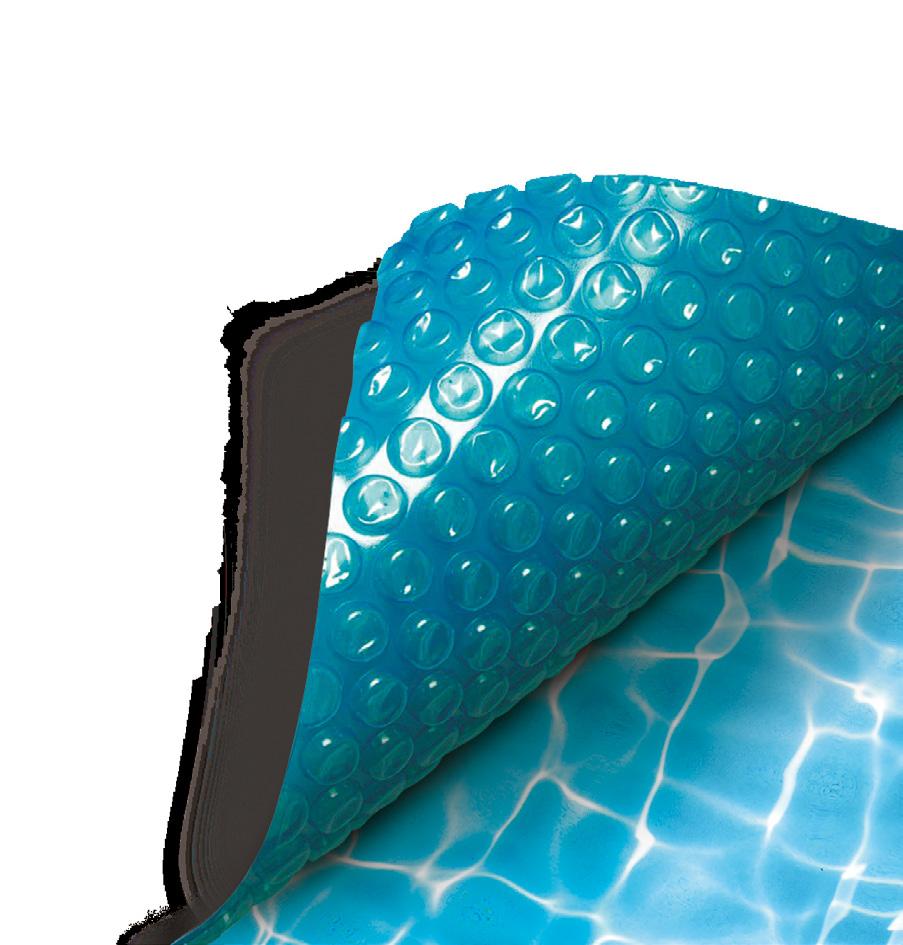
By Veda Dante
As consumers seek healthier, more sustainable ways to enjoy their backyards, we look at the “natural” swimming pool alternative.
When then-Prince Charles visited the historic Detroit Station in Gundagai –one of the most prestigious pastoral holdings on Australia’s eastern seaboard – he reportedly took a particular liking to its outdoor pool.
Installed by Natural Swimming Pools Australia, the chemical-free water feature was a fitting addition for the conservation-minded royal, who is said to have spent time nearby, enjoying the tranquil setting framed by native landscaping.
Also known as bio or living pools, natural pools are steadily gaining traction in Australia’s wellness and pool markets. These systems offer a low-chemical alternative that works with nature rather than against it, blending sustainability, aesthetics and innovation in ways that resonate with today’s eco-conscious clients.
Wayne Zwar, founder of Natural Swimming Pools Australia, is one of the country’s leading proponents of the Living Pool system developed by Austrian company Biotop. Since launching the business in 2011, Zwar has seen a notable shift in awareness and demand.
“Back then, people didn’t know much about living water,” he says. “But once we had pools in the ground and people could see and swim in them, they got excited. Over the past few years, more people have come to me specifically asking for living water and no plants.
“Around 60 percent of clients want just a few plants for aesthetics, while the other 40 percent want none at all. We even completed our first indoor Living Pool this year. In total, we’ve built or consulted on nearly 100 projects across Australia.”
Zwar explains that natural pools are fundamentally different from their traditional chlorinated counterparts.
“A bio swimming pool is a body of water that is alive,” he says. “It’s just like the water you find in rivers and lakes. Traditional pools, on the other
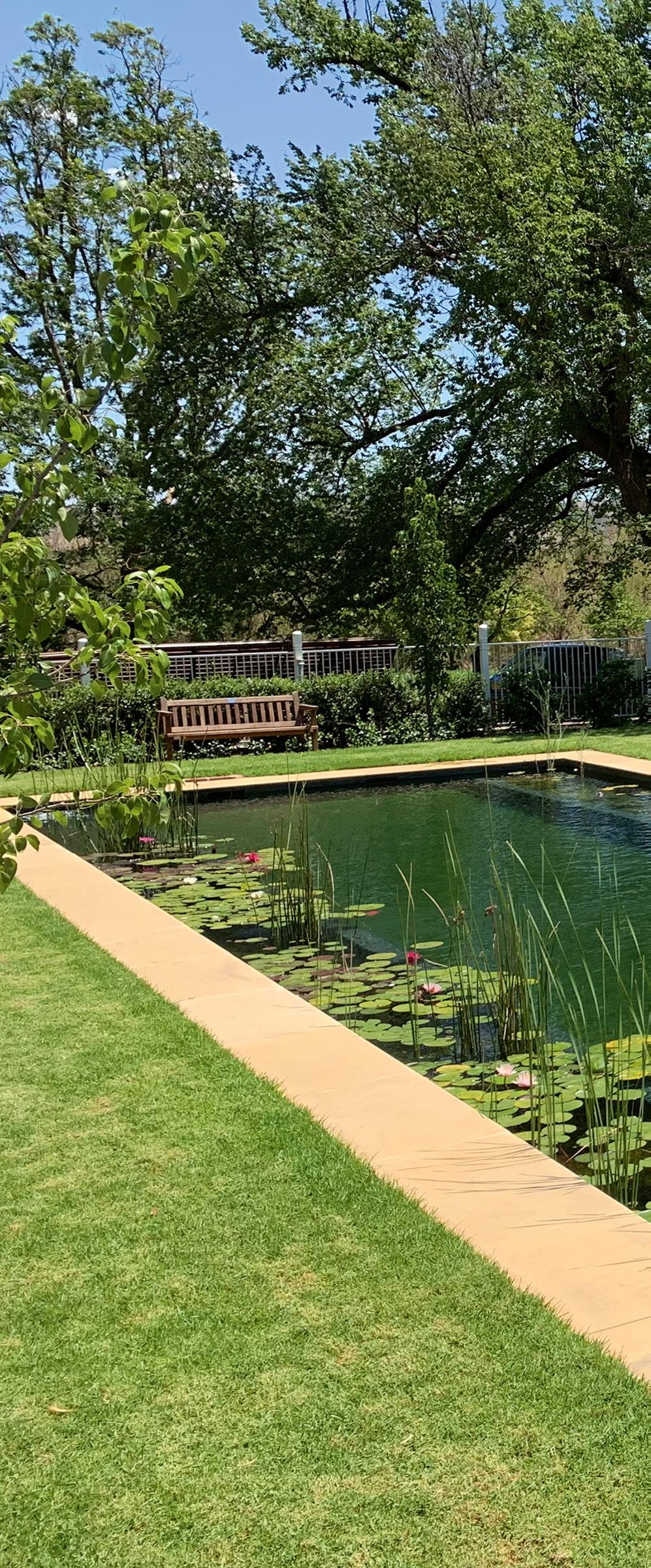
hand, rely on chemicals like chlorine, ozone or copper to sanitise the water, essentially killing it. Those systems work against nature.”
Zwar says that health and environmental benefits are at the core of their appeal, and that the water not only feels better on the skin but also supports the body’s natural microbiome – the beneficial bacteria that help regulate the immune system.
“Chlorine can disrupt that balance. It’s been linked to skin irritation, eye soreness, upper respiratory issues and even asthma,” he says.
Natural pools also encourage biodiversity, attracting birds, insects and aquatic life. “They bring nature into your backyard,” he says. “It’s a great way to teach kids and adults about sustainability and how ecosystems work. Even the backwash water from the filters can be reused in your garden. It’s full of nutrients.”
All of Zwar’s builds use Biotop’s two-stage

filtration system, which eliminates the need for gravel beds or regeneration zones while still mimicking natural filtration.
“There’s no sanitising going on. We’re replicating what happens in nature,” he explains.
The first stage is a biological filter made from recycled plastic and layered foam mats. Water flows slowly from top to bottom, where it’s mechanically and biologically cleaned – with microorganisms like zooplankton and daphnia breaking down organic material.
In the second stage, the Phostec Ultra chamber removes phosphorus, a key nutrient for algae, helping to keep the water clear.
“We can even heat the pools to 26 degrees,” he adds. “It’s a very flexible and efficient system.”
Maintenance is minimal, and Zwar is upfront
with how, unlike standard pool systems, algae actually plays a role in the ecosystem.
“We actually need certain types of algae for the system to function,” he says. “But when the pool is set up properly, algae levels are very low. The Phostec filter needs backwashing about every two months in summer, and the biofilters only require a quick clean with a water blaster every 12 to 18 months. That’s all there is to it.”
While the system was originally developed for Europe’s alpine climates, Zwar says it has adapted well to Australian conditions.
The longer, more stable summers here are ideal, he says, although he cautions against using this system in tropical regions due to the risk of waterborne pathogens.
Natural pools are highly customisable and can be tailored to suit a wide range of backyards and design preferences.
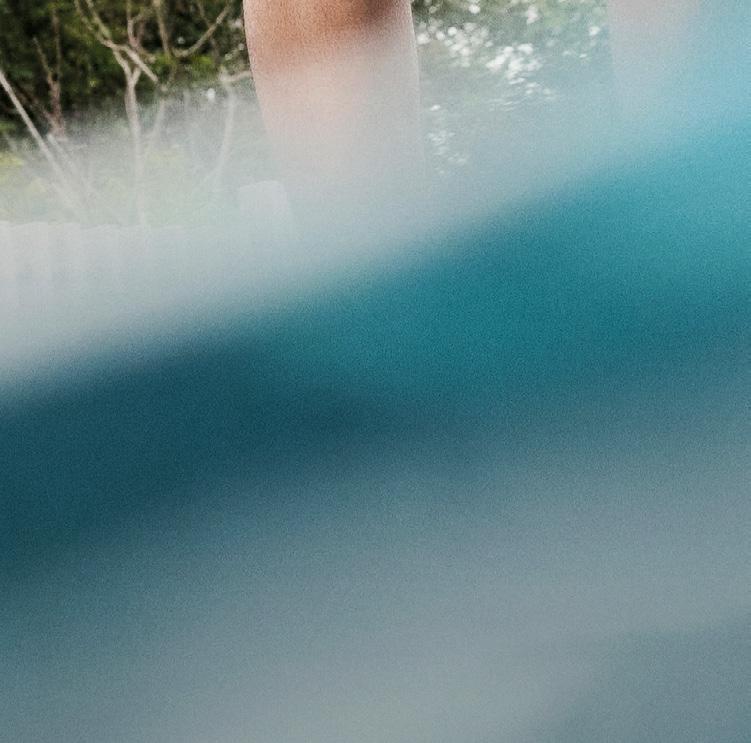



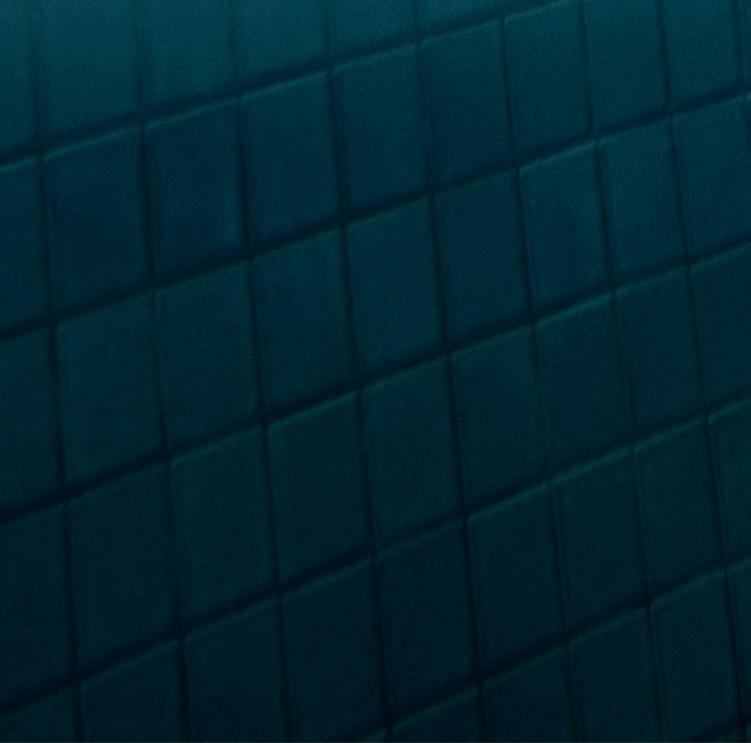




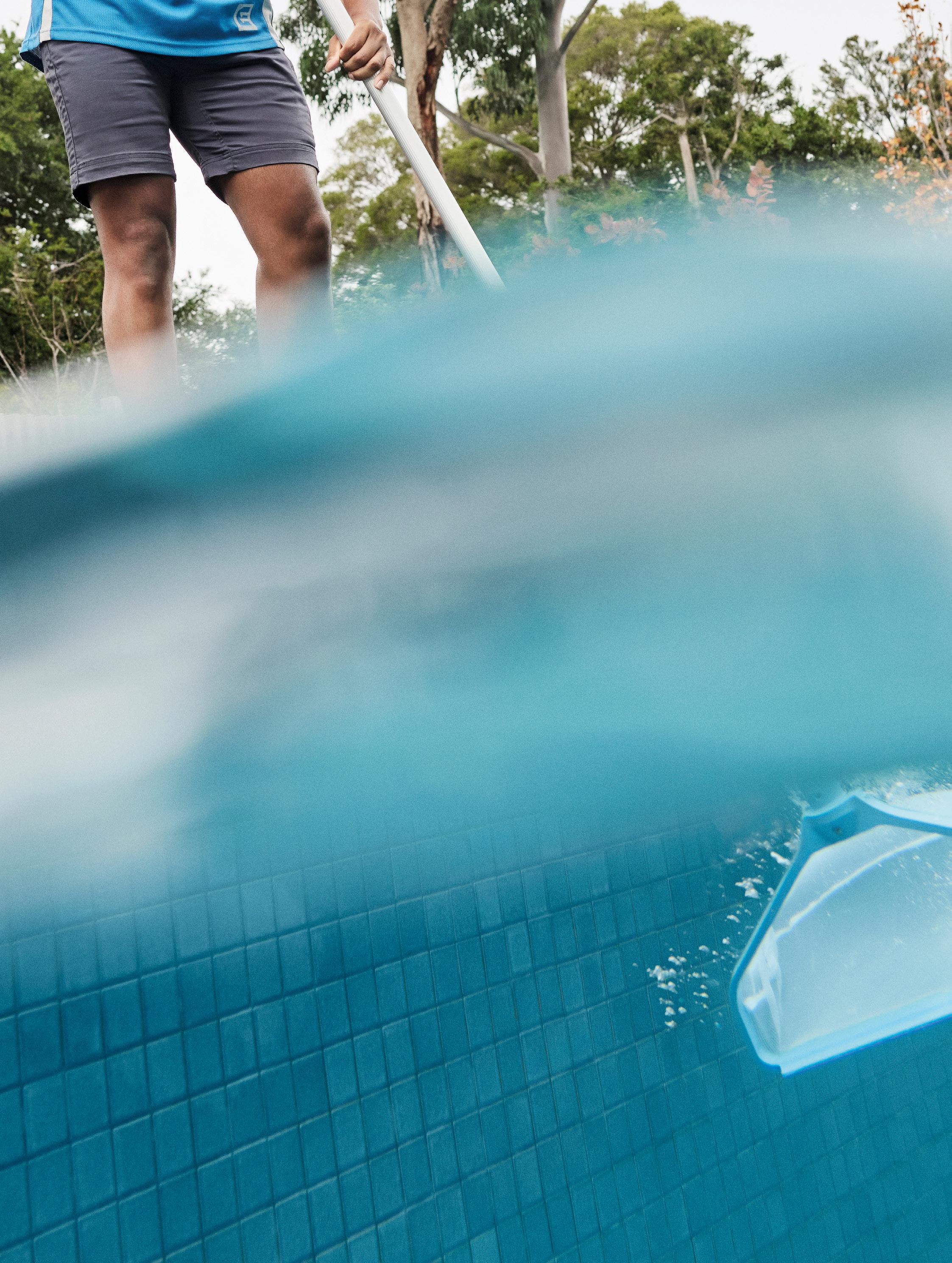
“We build them just like a traditional pool: fully tiled, with in-floor or robotic cleaners, swim jets and pool covers,” he explains. “The biofilter is only about two metres long, one metre wide and one metre deep, and it’s buried underground, so it doesn’t take up much space.”
While aquatic plants are optional, many clients choose to include them for visual effect. “We use plants like native lilies, milfoil and eelgrass. They add a natural feel, but like any garden, they need some care,” he says.
Installation costs are typically higher than conventional pools, largely due to the quality components imported from Austria and the specialised construction. However, he says operating costs are significantly lower.
“The pumps are 12-volt, German-made and energy efficient,” he says. “The biofilter runs on a 40-watt pump. And the best part is, you don’t need to keep buying chemicals,” says Zwar.
Conversions from existing chlorine pools are becoming increasingly popular. The process involves removing the old sanitising equipment, core drilling to connect the pool shell to the biofilter, and usually re-tiling. If plants are included, dividing walls and planting zones are also added.
“It’s a renovation more and more people are asking for,” he says.
For those looking for a healthier, more sustainable pool experience, the natural pool offers something unique. “You’re swimming in water that feels alive,” Zwar says. “It’s better for your body, your garden and the planet. And once people try it, they rarely want to go back.”
As concerns about sustainability and health continue to influence how we live and design our spaces, a growing number of homeowners are exploring their options.
Julien Roy, founder of Land Forms, a leader in ecological water design, explains what makes natural swimming pools so unique and why they’re gaining traction in Australia.
At its core, a natural pool operates without synthetic chemicals.
“A natural, biofiltered pool relies entirely on mechanical filtration, biological processes and planted regeneration zones instead of chemicals,” he explains.
“There are various methods to create a biofilter, but the core principle is that water passes through media colonised by microorganisms. These microbes consume nutrients in the water and help control harmful pathogens, keeping the water clean and safe for swimming – without the use of chlorine or other synthetic chemicals.”
This appears very favourable to people looking for a more natural way to enjoy recreational water.
“Natural pools operate without chemical additives, which means a reduced need for chemical production, transport and storage,” he says.
“They’re generally more energy-efficient, especially if designed and built properly. The
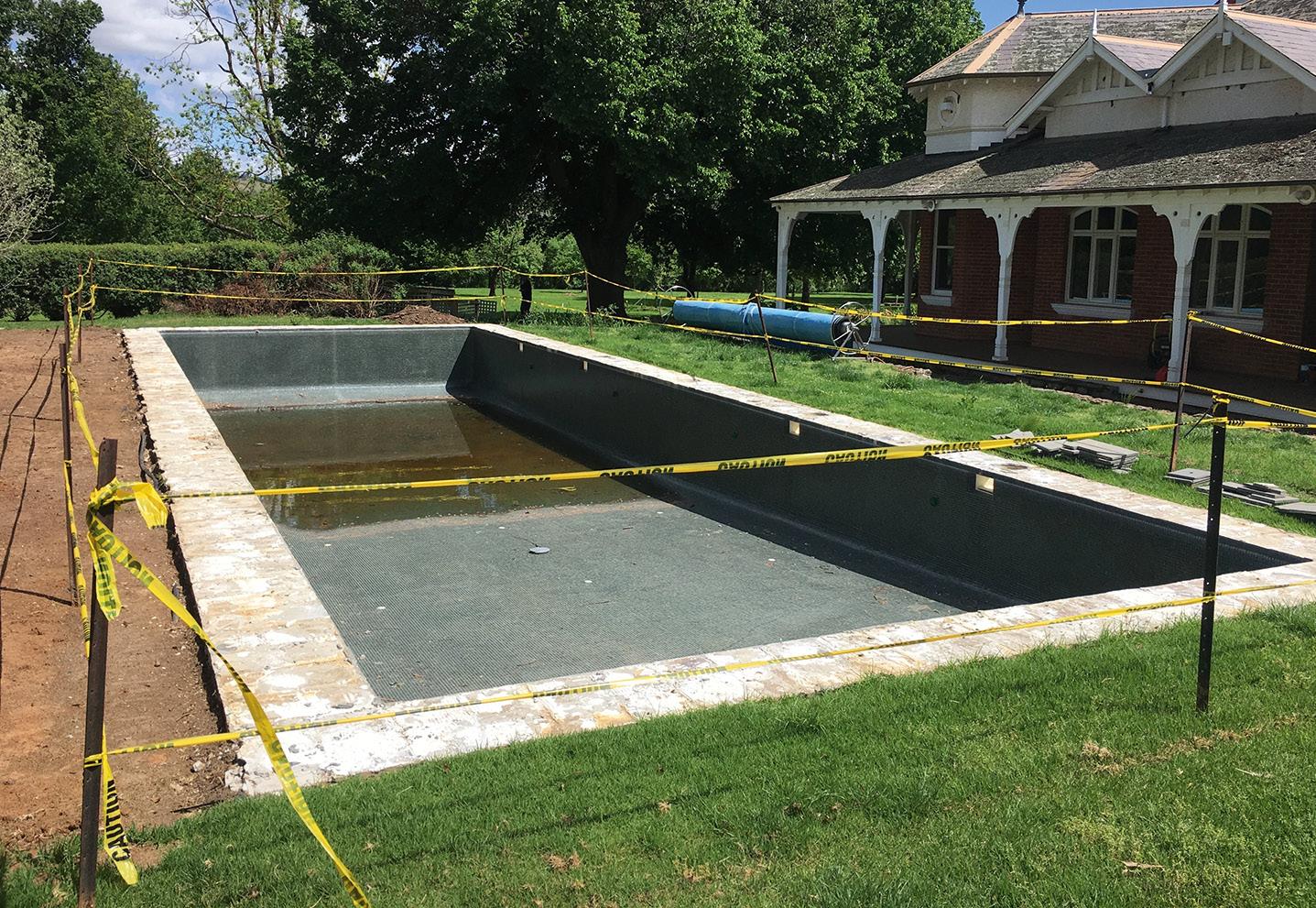
“It’s a renovation more and more people are asking for.”
clean water can even be used for irrigation, and the pool itself becomes a valuable habitat and water source for local wildlife.”
Unlike conventional pools, which rely heavily on sanitisation agents, natural pools harness the power of nature to keep water clear.
“Water first passes through mechanical filters to remove sediments,” Roy explains. “From there, it flows through high surface-area media that support the growth of nitrifying bacteria. These bacteria break down ammonia and other contaminants into less harmful compounds.”
Phosphates are absorbed through mineral media and taken up by aquatic plants.
“Biofilms also form on surfaces within the system, providing habitat for a diverse range of microorganisms that consume and store nutrients,” he adds.
Above: Preparing the conversion of the pool to a “living pool”.
Image: Natural Swimming Pools
Below: A living pool in Bowna NSW with plants.
Image: Natural Swimming Pools
“The system is carefully engineered for maximum efficiency, so we use a network of pumps and pipework that directs water through a combination of vertical and horizontal biofilter flows. Our filters can also be flushed periodically to remove built-up sludge and prevent clogging.”


Despite its seeming complexity, a well-built natural pool doesn’t require constant upkeep, says Roy.
“The key is proper design and construction from the outset – a poorly optimised biofilter will struggle to perform. When the pool is professionally designed and built, the ongoing maintenance is low and the water remains clean and clear year-round.”
Some factors, like nutrient runoff or pump failures, can cause temporary issues. And unlike chlorinated pools, a natural pool won’t have squeaky-clean surfaces.
“There will always be some level of biofilm or algae growth on submerged surfaces,” he explains. “However, with the right materials, flow rates and circulation, this is minimal and often embraced by our clients as part of the natural beauty.”
Roy says that natural pools are considered mainstream in parts of Europe, but Australia presents unique challenges.
“They originated in Germany and Austria in the 1980s and those climates, specifically colder winters, naturally reset the biological systems each year,” he says.
“In Australia, we deal with high UV exposure, heavy rainfall and humidity, all of which can introduce more nutrients into the water. Over the past 20 years, we’ve refined our system to perform well under these conditions. It requires a tailored approach, but with the right design, natural pools can work beautifully in Australian climates.”
While some people imagine sprawling, pondlike spaces, natural pools can also be compact.
“At Land Forms, we’ve built natural pools ranging from small plunge pools to large installations over 150 square metres,” he says.
“Larger, deeper pools are easier to stabilise biologically, but we’ve developed a compact plunge pool option of around 12 square metres with an additional four square metres required for the filter.”
That means a fully functional bio pool can be built in as little as 16 square metres, making it a viable option even in urban environments.

In Roy’s system – and some others – plants are more than decoration, they’re central to its success.
“We prioritise using locally endemic aquatic plants to support biodiversity and ensure long-term resilience,” he explains.
“Rushes like Baumea articulata and other marginal plants are particularly effective at nutrient uptake. Submerged and floating species like Myriophyllum papillosum help oxygenate the water and provide habitat for microorganisms and zooplankton, which are vital to maintaining biological balance.
“Plant maintenance is minimal,” says Roy. “Seasonal trimming and occasional thinning are usually all that’s needed.”
Although still a niche within the broader pool market, Roy says interest is increasing.
“We’ve been developing and refining our systems for over 20 years, and we’ve seen a steady increase in demand,” he says. “Interest is growing –particularly among clients who value sustainability, natural aesthetics and chemical-free swimming.”
He adds that while natural pools won’t replace conventional designs, they’re a strong alternative for clients with the right mindset and expectations.
However, installation costs can be a hurdle.
“Yes, installation costs are typically higher – about 30 per cent more than a conventional pool of similar size,” Roy admits.
“This is due to the additional infrastructure needed for the biofilter, including a separate filter chamber and specialist materials.”
But the trade-off is in the running costs.
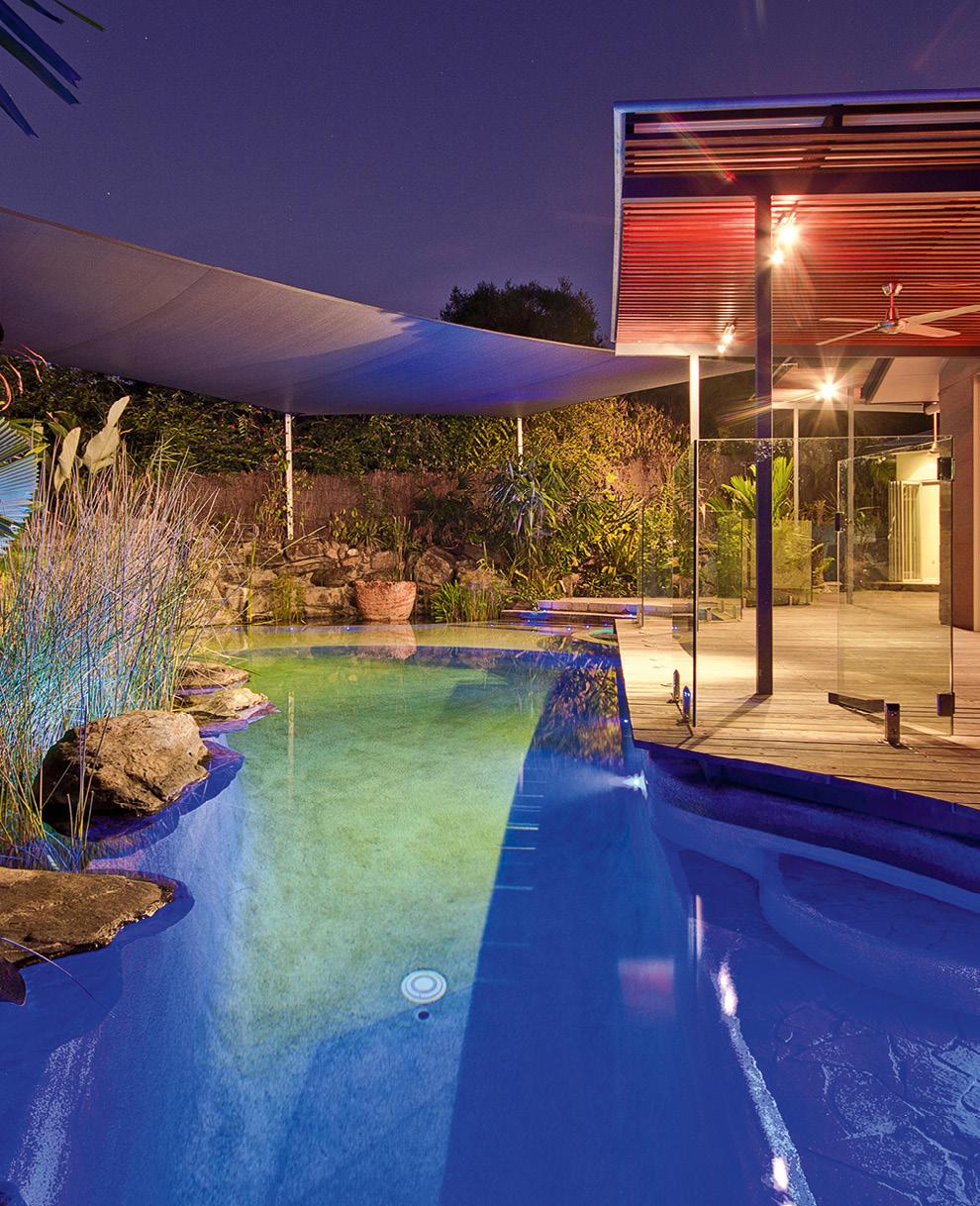
“A bio swimming pool is a body of water that is alive, just like the water you find in rivers and lakes.”


“A natural, biofiltered pool relies entirely on mechanical filtration, biological processes and planted regeneration zones instead of chemicals.”
“There’s reduced power use, no ongoing chemical purchases, and they require less frequent intervention. They’re especially wellsuited to rural or holiday properties where lowmaintenance and self-regulating systems are a big advantage.”
Roy is quick to emphasise that success starts with experience.
“Natural filtration is based on simple, wellunderstood ecological principles, but it takes expertise to implement it effectively,” he says. “It’s important to work with a company that is experienced and knowledgeable on building natural pools.”
And perhaps most importantly, it’s about embracing nature.
“You also need to embrace what makes natural pools special: the presence of life, the occasional frog or dragonfly, and the natural beauty of living water,” says Roy.
“Expect some surface growth and natural changes through the seasons. If you want a living, ever-evolving water feature that becomes the heart of your garden and home, a natural pool is a perfect fit.”
One local operator producing their own uniquely Australian system is Queensland’s Placidity Pools, whose biofiltration technology delivers a chemical-free experience backed by robust engineering and system design.
“Our system doesn’t rely on the harsh chemicals typically used in conventional pools,” says
general manager Lisa O’Connell. “We’ve created a high-performance, low-maintenance solution that replicates natural filtration, and clients are seeing real value over time.”
The Placidity System uses a planted biological filter zone, or Bio-Tank, to purify the water through natural processes. Micro-organisms break down contaminants, eliminating the need for chlorine or salt while maintaining a healthy and balanced aquatic environment.
“The technology addresses multiple industry pain points,” says O’Connell. “There’s no chemical handling or storage, no salt discharge into stormwater systems, and significantly reduced backwashing. The entire setup runs on energy-efficient variable speed pumps, keeping operational costs low.”
Designed and refined for Australia’s unique climate, the system is particularly well suited to northern and tropical regions, where year-round use and plant diversity offer additional benefits.
“In contrast to European systems that need seasonal shutdowns, our tropical filter zones operate continuously,” she explains. “We have access to a wide range of hardy native plants, which enhances water quality and design flexibility.”
While natural pools remain a small proportion of overall installations, the market is maturing and so is interest in retrofitting existing pools.
“Natural systems are an upfront investment, but the long-term savings and environmental benefits are compelling,” says O’Connell. “We’re also seeing strong potential in the retrofit market, which allows homeowners to convert conventional pools into natural systems without a full rebuild. It’s a commercial opportunity we’re actively expanding.”
As councils, developers and homeowners continue to prioritise sustainable design, Placidity Pools is positioning itself as an alternative to traditional chlorinated systems – with tropical resilience, technical credibility and commercial potential built in.
There’s something undeniably appealing about a natural pool. Water that blends into the landscape, no harsh chemical smells, and a tranquil, freshwater aesthetic that reconnects swimmers with nature. But even the most picturesque pool must meet an invisible yet critical standard: keeping the water safe.
In Australia, that’s more than just a best practice. It’s a legal requirement in many settings. State and local health authorities mandate a minimum level of chlorine (usually between 1.0 and 2.0 mg/L) in any pool accessible to the public. This includes not only resort pools and eco-lodges but also shared residential facilities. The reason is straightforward. Warm, untreated water is a breeding ground for waterborne pathogens like Giardia, Cryptosporidium, and E. coli, all of which can cause serious illness.
Residential pools may not be bound by the same rules, but that doesn’t mean homeowners are off the hook.
“You might not have to meet the same chlorine targets as a public facility, but if friends and family are using the pool, especially kids or anyone with a compromised immune system, it’s your job to keep that water clean,” says Sharon Tucker, category manager at Davey Pool & Spa.
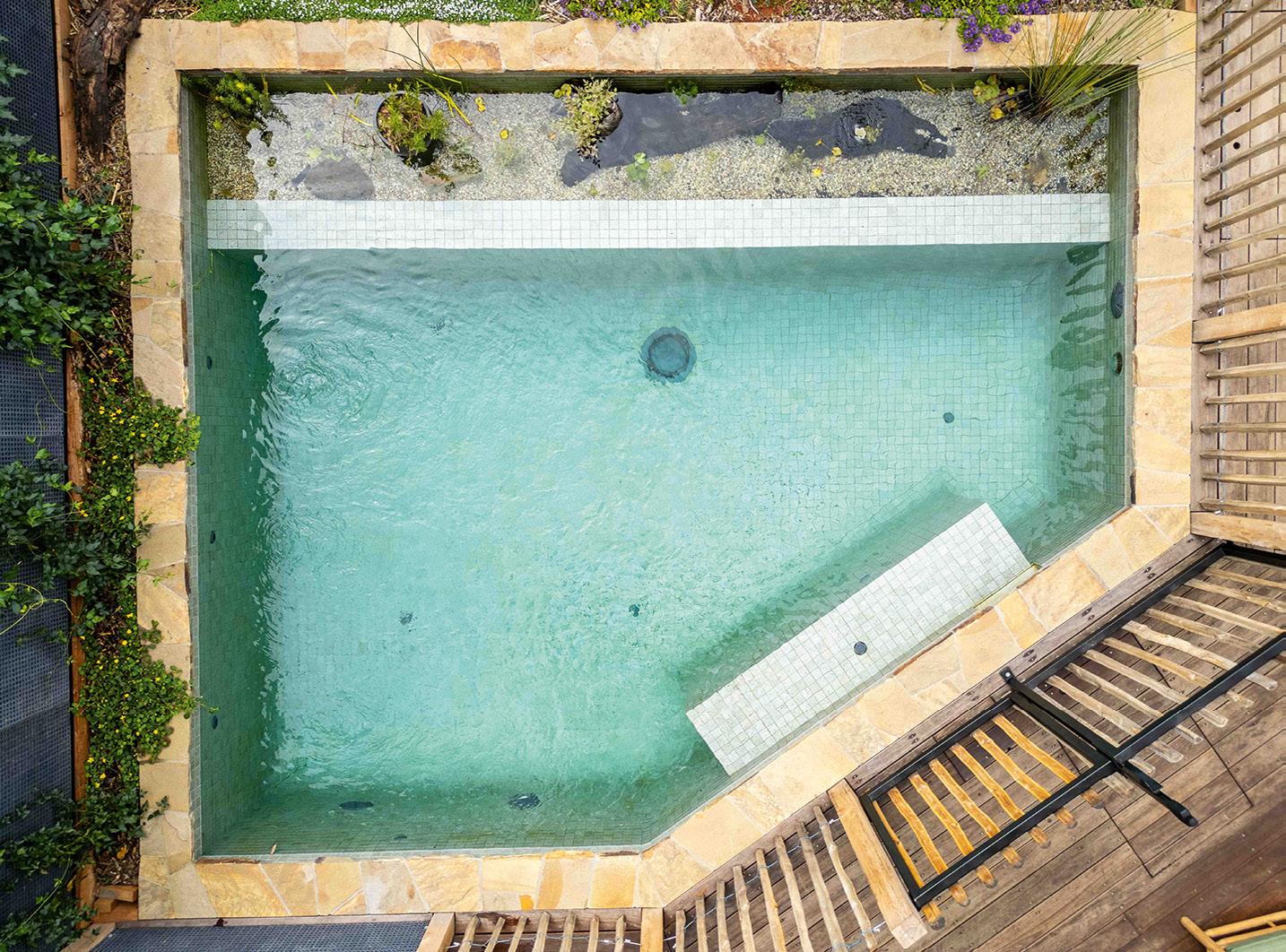
Check the relevant standards, regulations and guidelines that apply in your jurisdiction to ensure any intended project fully complies with sanitisation requirements.







Reduce noise by 80%
Assemble in as little as 15 minutes
More internal space for easier access
Save money on design, equipment and running costs
Child safety features 100% Australian Made
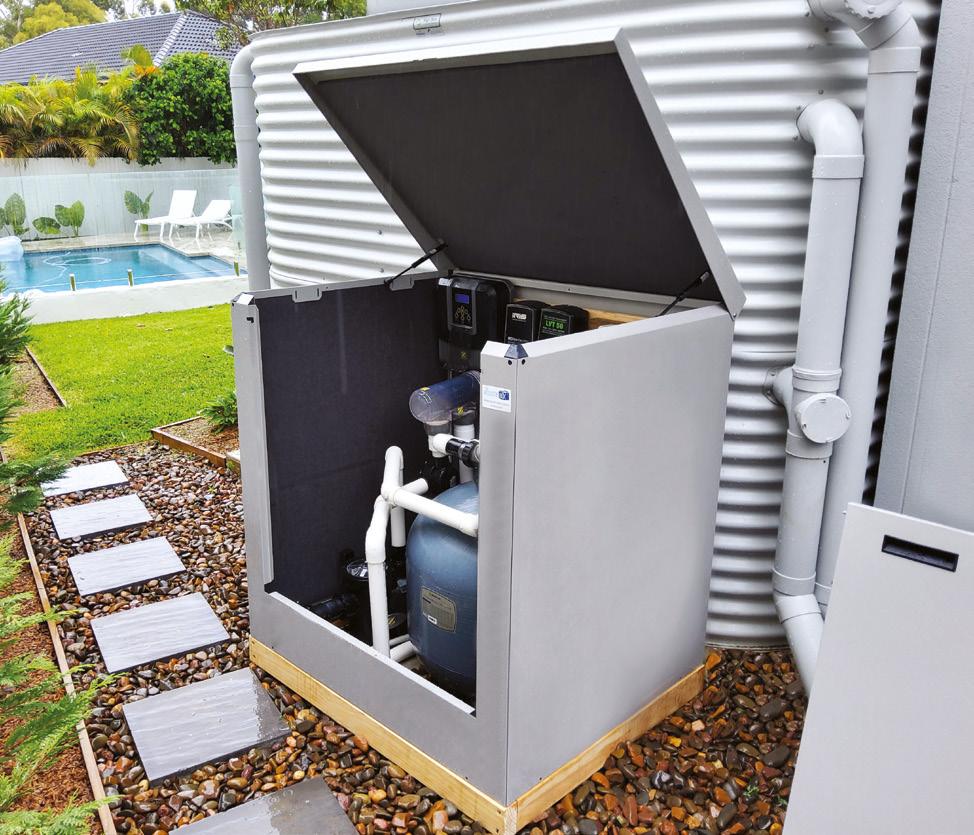



Long known for their innovations in water movement and hygiene, Davey has become a trusted name in pool technology. Their recent developments reflect the growing interest in natural and hybrid swimming environments.
According to Tucker, many pool owners want the natural look without the health risks of completely untreated water. That’s where hybrid solutions are gaining traction.
One of company’s responses to this demand is Davey Nipper’s low salt chlorinator designed to maintain safe water quality while preserving the aesthetic and sensory experience of a natural pool. It works efficiently with much lower salt levels than conventional systems, just 1500 parts per million, and keeps chlorine levels stable with smart sensors and automation.
The result is water that looks and feels fresh but still meets health and safety expectations.
Importantly, the system is compatible with mineral-enriched water, offering not just clarity and hygiene but added wellness benefits.
“People are using their pools differently now,” Tucker says. “It’s not just about swimming laps or jumping in to cool off on a summer’s day. It’s about relaxation, recovery and spending time immersed in water that feels better on the skin, gentler on the senses, and healthier overall.”
Natural and hybrid pools are still emerging in Australia, but momentum is building as ecoconscious homeowners seek cleaner, greener alternatives to traditional styles.
Like all pools, they require ongoing maintenance, but natural styles often need specialist care. Not every local pool technician may have the expertise to manage systems that don’t rely on large doses of chlorine or salt. Complex construction and varying council regulations can add extra layers of planning. Still, advances in technology, and builders with proven experience and deep expertise, are making these pools more accessible and easier to maintain than ever before.
The Australian version of the natural pool is evolving. It’s less about strict emulation of European bio-pools, and more about hybrid
“Biofilms also form on surfaces within the system, providing habitat for a diverse range of microorganisms that consume and store nutrients.”
systems that blend nature with innovation. The goal is a sustainable, health-conscious alternative that suits local conditions and lifestyles.
As Tucker puts it, “A natural pool doesn’t mean a chemical-free free-for-all. It means working with nature and technology to create something beautiful, functional and safe. That’s the future we see at Davey.”
The shift toward more sustainable pool styles has sparked important conversations about how we define “clean” water. Whether a pool is natural, hybrid or fully chlorinated, proper disinfection remains essential for swimmer safety. That’s where industry leaders are pushing for greater clarity around sanitisation standards and the responsible use of chlorine.
AIS Water’s CEO Elena Gosse says that with the company’s more than 35-year history, they have seen plenty of industry trends come and go, including misleading claims about so-called “chlorine free” pools.
“In the case of fresh or mineral water pools it’s particularly important for people to do their research and understand that claims of salt-free or chlorine-free may not be accurate,” she says.
“To comply with Australian standards, any pool must have enough residual chlorine levels to kill bacteria and algae in order to make it safe to swim in.
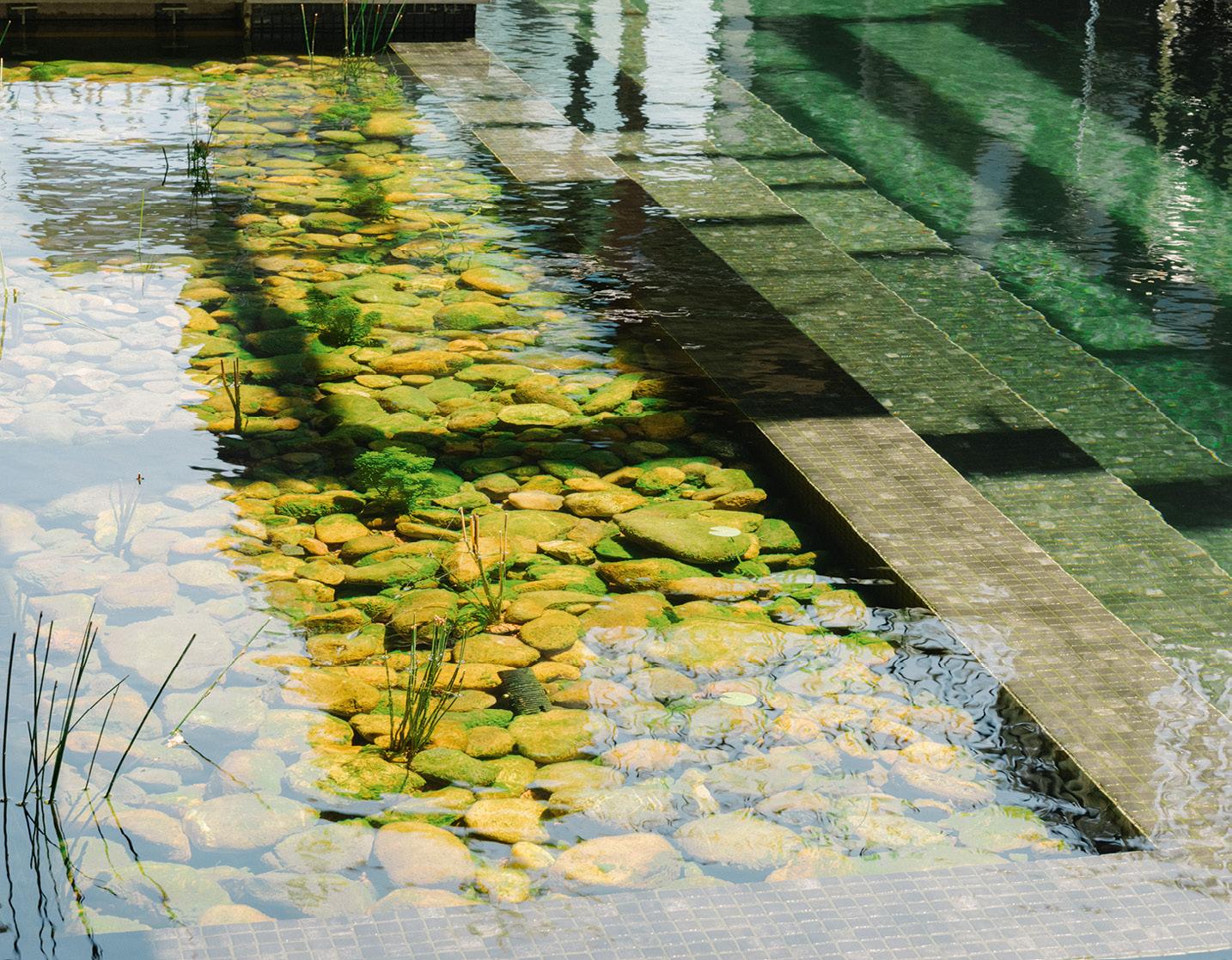
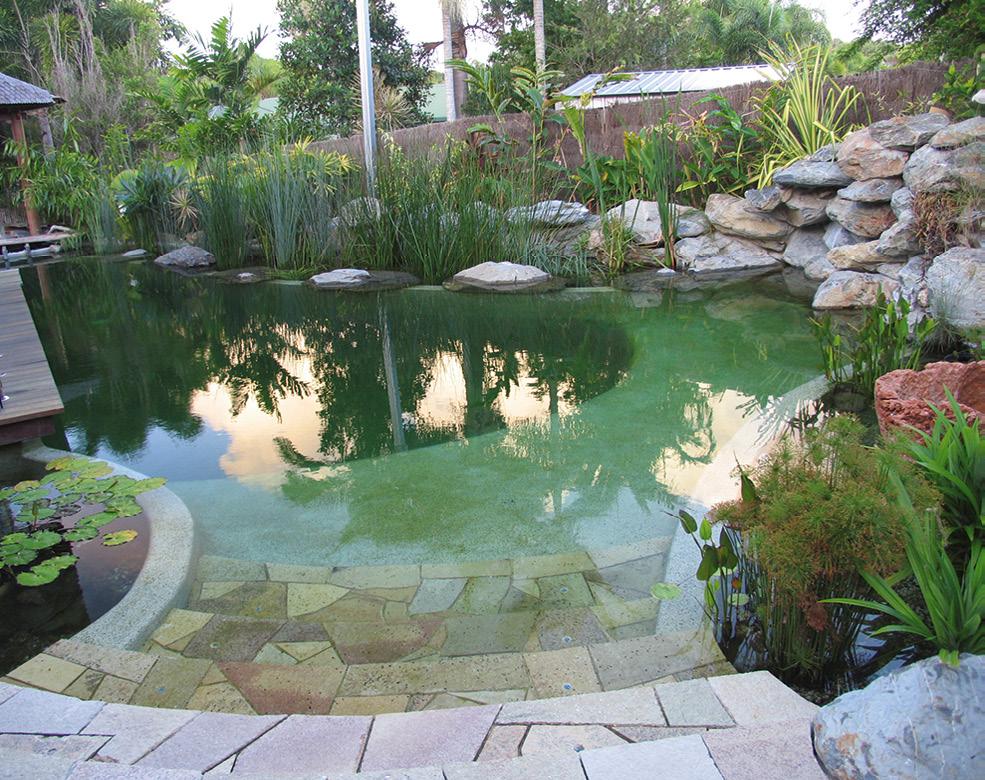
www.aiswater.com.au
www.davey.com.au
www.landforms.com.au
www.naturalswimpools.com.au
www.placidpools.com.au
“Expect some surface growth and natural changes through the seasons.”
“Chlorine,” she says, “is not the enemy but actually a super hero.
“Chlorine is the only globally recognised disinfectant for swimming pool water and removes potentially lethal pathogenic organisms,” says Gosse.
“The real difference is how it is produced. Our chlorinators provide a simple, safe and smart way of disinfecting water by the process of electrolysis, effectively creating a small chlorine factory in the pool and negating the need to purchase, deliver, store or handle liquid, granular or gaseous chlorine.”
As interest in alternative sanitisation systems grows, Gosse says the broader pool industry must remain focused on community health and safety. That means separating science from marketing spin and ensuring all operators are held to the same professional standards.
Gosse believes the industry must work collaboratively, not competitively, to ensure that professional and consistent standards, testing protocols and common terminology are applied when it comes to the facts about water disinfection.
“We must talk with all levels of government, schools, universities and other key stakeholders to ensure that community health, safety and wellbeing is not compromised by sub-standard practices and operators,” she says.
“Also, that Australian companies and manufacturers are supported and form part of the solution. It’s time for the industry cowboys to be flushed out and away, for good.
Gosse has been an advocate for the pool and water industry for many years.
“AIS Water’s reputation as a leader in the global pool disinfection industry is one of the reasons I’m so passionate about contributing to the future of pool sanitisation and helping to grow the professionalism and success of the industry as a whole.” n
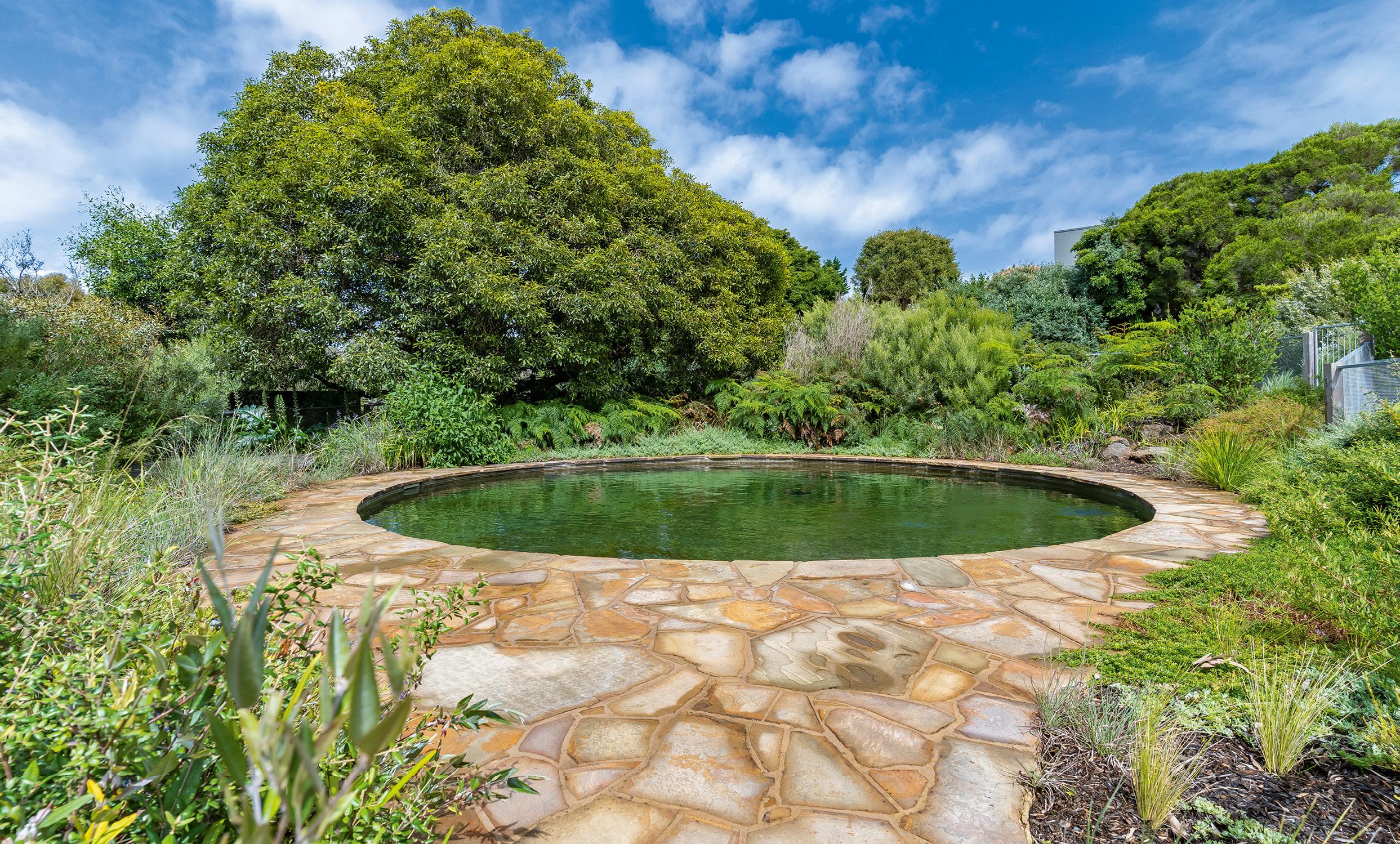
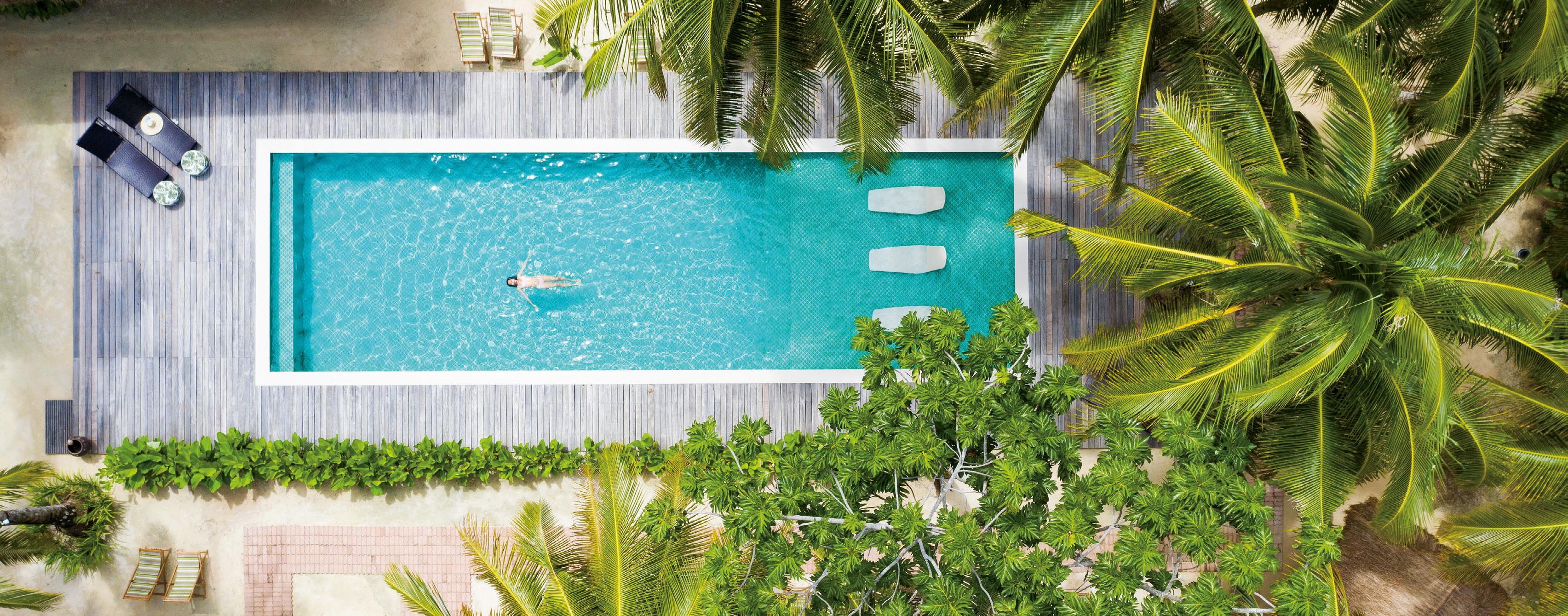
allnex, the global leader in sustainable and innovative resins for industrial coatings, is excited to announce the latest launch in the extensive Composites product line, Polyplex 200E
allnex Composites in Australia is a leading producer of Unsaturated Polyesters, Gelcoats and Vinyl Esters for a wide range of Composite applications
rPET (Recycled PET) flake is sourced from a local recycled plastics supplier in Australia aligning this project with the allnex sustainability objectives
There is potential for a significant increase in the volume of PET conversion in the manufacture of these resins in Au stralia Polyplex® 200E resin will contain the equivalent of 750 recycled plastic bottles per drum, or 3 3 bottles per kg of resin, reducing waste and promoting environmental sustainability
Polyplex® 200E is a white pigmented structural laminating resin produced by using recycled PET as a starting raw material for Composite Swimming Pool constructions
In addition, Polyplex® 200E shows higher mechanic al properties and improved water resistance over standard Orthophthalic polyester resins for better reverse-osmosis resistance of real structural pool laminate potentially in contact with ground water
For more product information, please contact your allnex Sales Representative, call our Customer Service Team on 1800 789 607 or visit www allnex com

Set in the heart of China’s powerhouse manufacturing hub, the Asia Pool & Spa Expo returned in full force this year, confirming its role as a vital meeting ground for the global pool, spa and wellness industries.
Held at the famous China Import & Export Fair Complex in Guangzhou, this year’s event was not only a showcase of technology and trade but a powerful reminder of the evolving maturity, quality and diversity emerging from Asia’s aquatic manufacturing sector.
The event welcomed more than 500 exhibitors and reported 37,000 attendees, providing a dynamic platform for business development, brand building and future-facing conversations.
For Australian and New Zealand trade professionals, the expo offered rare direct access to the manufacturers, innovations and strategic partnerships that are shaping the next evolution of pool and spa supply chains.

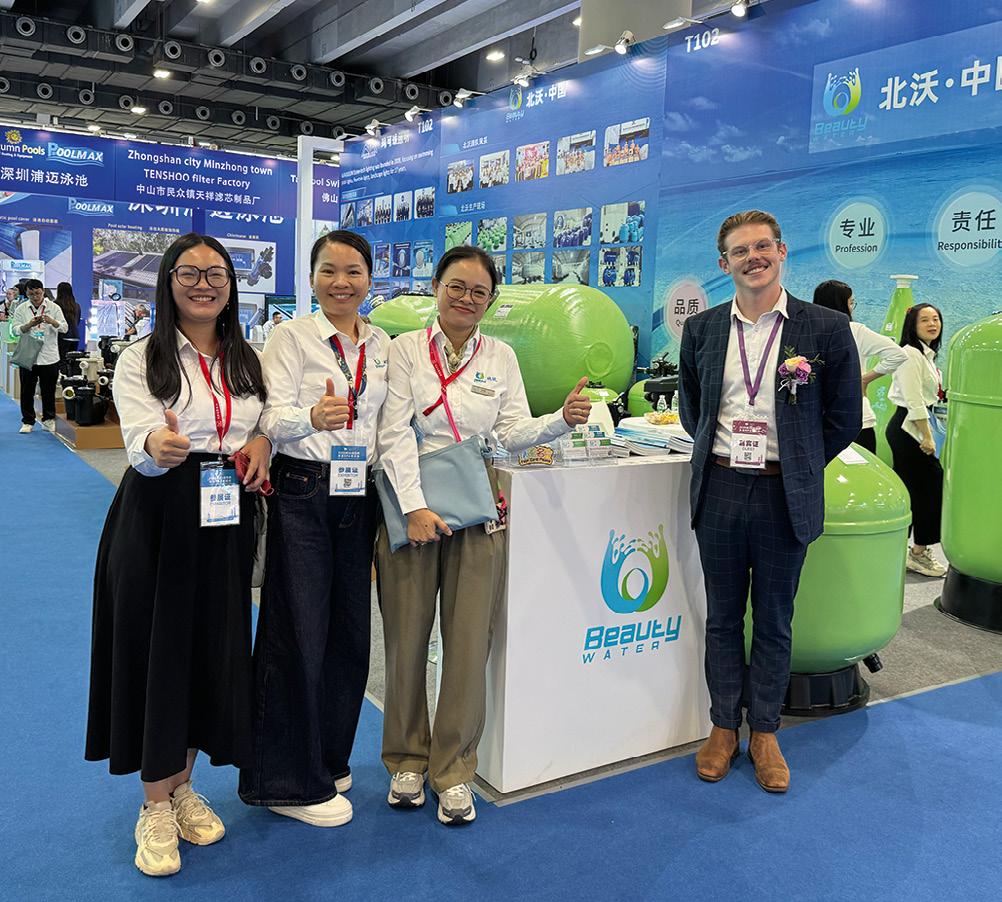
By Declan Gillard-Martin
Throughout the exhibition halls, product innovation was front and centre. Exhibitors responded to global demand for smarter, more sustainable solutions with new releases in filtration, automation, energy management and system integration.
Among the most compelling debuts was Emaux’s new modular Perlite Ultrafine Filtration system, offering a high-performance alternative to traditional sand filters and challenging ultrafine systems already in the market. The system’s scalable design makes it ideal for diverse commercial applications. Complementing this, Emaux also introduced its CyberSync automation range, combining sleek, user-friendly interfaces with cloudenabled pool control – a strong nod to global trends in pool tech convergence.
Meanwhile, Lopotion turned heads with its exclusive Winglok pump and filter range, including gold-painted 316 stainless steel pumps housed in carbon fibre. These were more than just eye-catching; they were precisionengineered for durability and performance. Their automated, AI-enhanced multifunction valve and filter combo also impressed, showcasing a leap toward fully autonomous system management.
Also noteworthy was Fairland’s iGarden Robotics division, which premiered its official partnership with the 24 Hours of Le Mans, leveraging the world’s most famous endurance race to position its range as high-performance,
“Equally valuable was the opportunity to tour the factories behind the products.”
lifestyle-aligned product. The partnership signals an evolution in brand sophistication, marrying technology with aspirational marketing.
Global OEM leaders Pikes and Pool King reinforced their positions as mainstays of export-quality equipment, presenting broad and wellrefined product portfolios across filters, pumps, lighting, control systems and accessories.
While the expo floor dazzled with new releases, what many attendees found equally valuable was the opportunity to tour the factories behind the products.
Visits to surrounding industrial zones revealed ISO-certified production environments with clear investment in smart manufacturing, quality assurance and R&D.
One of the more significant shifts observed was the emergence of China-manufactured salt chlorinators of impressive quality and reliability. Traditionally, saltwater chlorination has been a stronghold of Australian product development – a natural response to local climate, water quality

“The expo offered rare direct access to the manufacturers, innovations and strategic partnerships that are shaping the next evolution of pool and spa supply chains.”
and regulatory needs. But at this year’s show, several Chinese systems stood out not just for their affordability, but for their refined engineering, robust components and ease of installation.
Sourcing strategies are evolving, and Australian buyers may increasingly look to China not just for low-cost options, but for legitimate, co-developable product partnerships.
The Global Pool & Spa Industry Forum, held concurrently with the exhibition, offered a rich program of dialogue. One of the most illuminating being the exploration of what the term “spa” means around the world.
While Australians may think of a spa as a standalone hot tub or jetted section of a pool, the global perspective is far more diverse.
In Europe and Asia, the term often describes thermal water facilities, communal bathhouses, or wellness centres offering massage, hydrotherapy or traditional natural healing. In Japan, it evokes the onsen experience; in Korea, the jjimjilbang; in China, expansive resort-style spas blending health and hospitality.
This broadened understanding encourages the Australian industry to reframe its approach to product development and consumer engagement, particularly for operators exploring wellness design, spa resorts or export opportunities.
It’s a reminder that water, wellness and recreation are culturally fluid concepts, and that the term “spa” may soon carry more meaning, with additional commercial opportunity.
One of the defining privileges of attending the Asia Pool & Spa Expo is the chance to connect directly with manufacturers, the true “brands behind the brands.”
For some Australian and New Zealand companies, these are the suppliers building private-label or OEM product lines sold under familiar domestic banners.
Factory visits revealed impressive levels of operational discipline and manufacturing sophistication. Many facilities highlighted automation, in-house engineering teams and customised solutions for international partners.
These are not the factories of a decade ago; they are modern, efficient, and ready to build product ranges with, not just for, global customers.




As Australia’s pool and spa industry continues to mature, its role is shifting from local innovator to global collaborator.
Through trade missions, presentations and publications like SPLASH!, Australian voices are shaping international dialogue on compliance, sustainability, training and product innovation.
The Asia Pool & Spa Expo 2025 was a glimpse into the next era of global aquatic business.
From smarter tech and manufacturing transparency to wellness design and redefined terminology, the event highlighted the fact that the pool and spa industry is no longer confined to traditional geographies or legacy ideas.
For the SPLASH! readership, whether suppliers, technicians, architects or entrepreneurs – the message is clear: keep watching Asia, the future of pools and spas isn’t just being installed in our backyard. It’s being imagined, built and redefined in places like Guangzhou. n
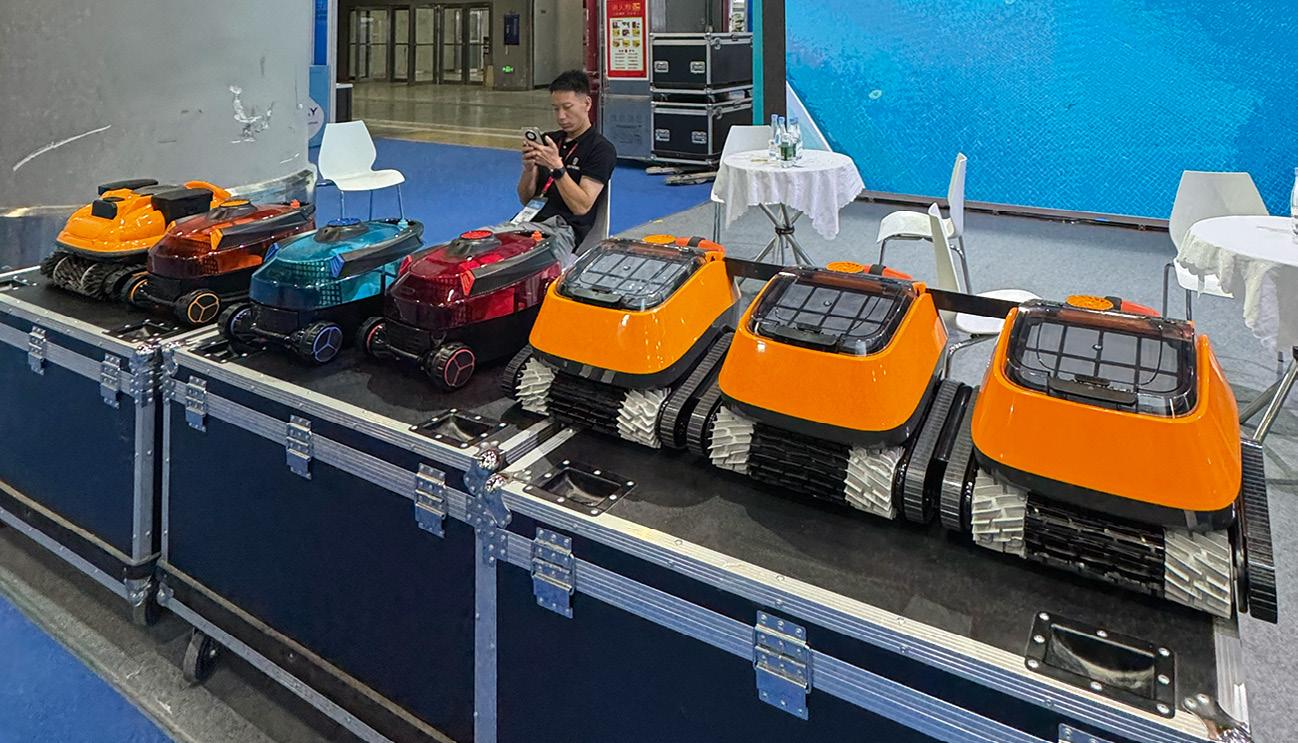



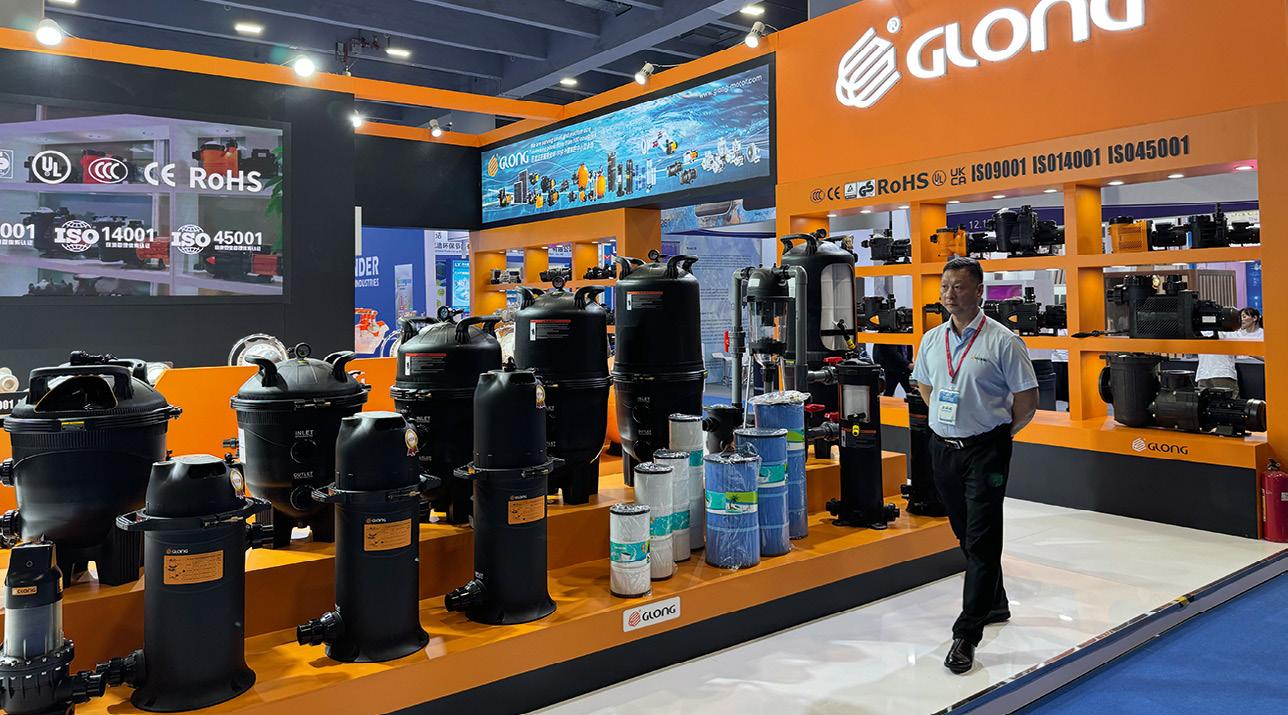

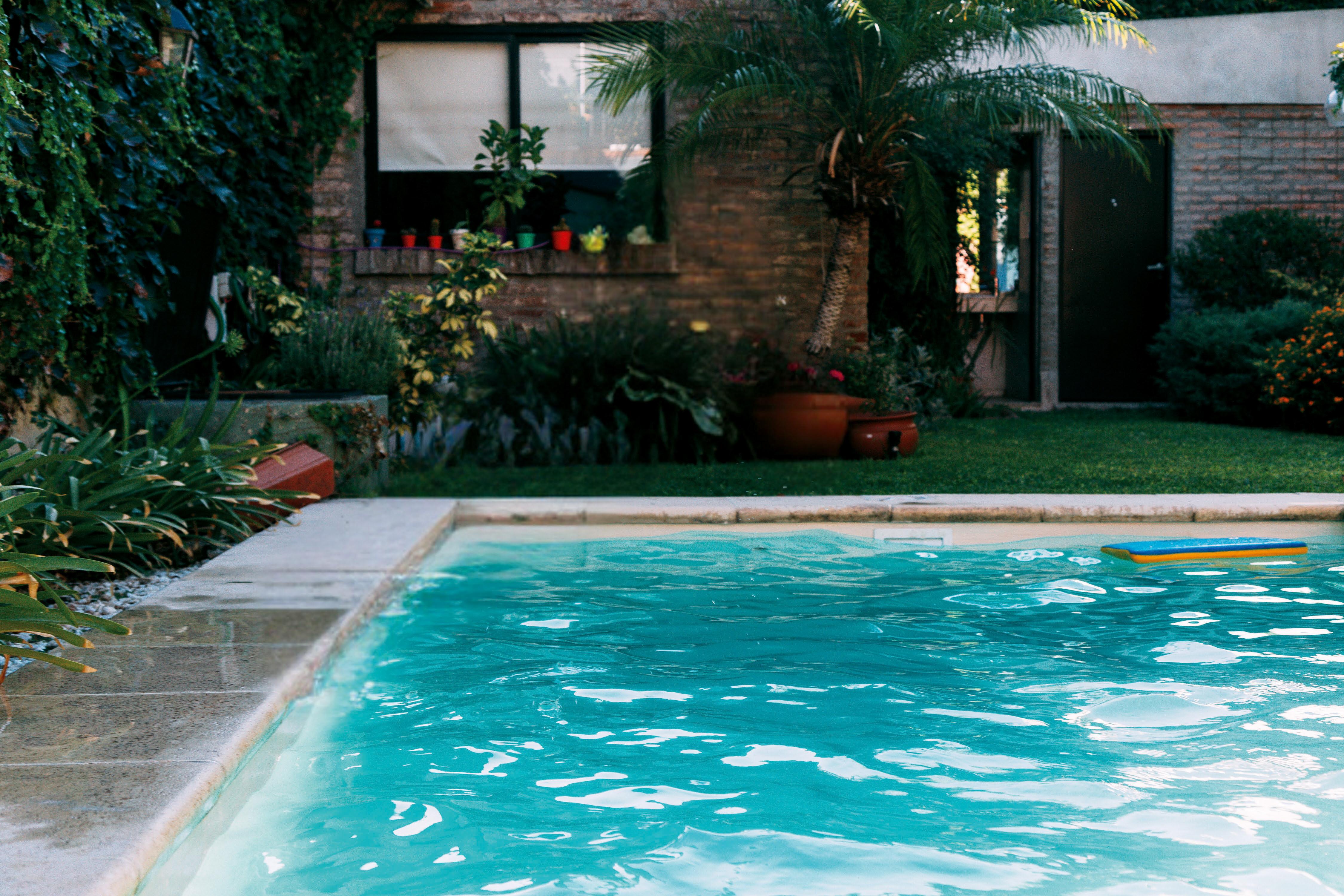


Blacktown Aquatic Centre is set for the biggest revamp in its 64-year history with new swimming pools for children and adults to be part of a premier facility for Western Sydney.
Blacktown City Council will provide a new indoor 50m pool, a new indoor 25m learn to swim pool and upgrade the outdoor 50m pool as part of wide-ranging improvements.
The revamp will also include:
• An extended splashpad that lets small children safely enjoy water play;
• A new café, foyer and reception;
• The café better positioned to serve pool patrons and people in the RSL War Memorial Garden;
• Upgraded fitness rooms and amenities;
• Inclusive amenities and changerooms;
• Landscape improvements, including the carpark.
The council believes the revamp will make Blacktown Aquatic Centre one of the top swimming destinations in Western Sydney, and provide more opportunities for a booming population.
The Council have now successfully gained $77.19 million funding from the NSW Government’s Western Sydney Infrastructure Grants program.
Blacktown City mayor Brad Bunting says people in Western Sydney depended on public pools to learn to swim and exercise, and deserved top rate facilities.
“We want to encourage people to learn to swim and enjoy the water close to home, and we can do that by providing a first class venue,” he says.
“Blacktown Aquatic Centre is the busiest of Council’s five swimming venues so we want to make sure that when people come here there are plenty of opportunities to enjoy.”
The upgraded centre will increase capacity from 2000 learn to swim students per week to 5000.
The centre caters to swimming clubs, schools, learn to swim classes, aqua aerobics, gym users and more.
Member for Blacktown Stephen Bali says the NSW Government’s Western Sydney Infrastructure Grants and targeted federal and state grants had provided unprecedented record investment into councils like Blacktown City to deliver new or upgraded infrastructure.
“In this case, ageing aquatic infrastructure will be upgraded to provide opportunities for the next generation of champions, as well as delivering community benefits from toddlers’ learn to swim classes through to seniors’ aqua Zumba classes.”
Zoe Jenkins from Urakawa Jenkins Architecture was proud to be part of the effort.
“The transformation of Blacktown Aquatic Centre is driven by a vision to create not just a world-class facility, but a vibrant heart for the community,” she said.
“We are committed to delivering a contemporary aquatic centre that caters to the diverse needs of Blacktown, providing exceptional spaces for learning, playing, training, competing and relaxation.”
Blacktown Aquatic Centre (then known as Blacktown War Memorial Swimming Pool) opened in 1961 and has served generations of community members since.
An 18-year-old Kieran Perkins broke the 800m freestyle world record at the venue at the NSW swimming titles in 1992.
The centre was a training venue for athletes preparing for the Sydney 2000 Olympic Games. In recent times, it was home to Paralympic medallists Tim Hodge and Chloe Osborn.
Work is anticipated to begin in 2026 and will take about 18 months.
The $40.6 million Mount Druitt upgrade is also funded by the NSW Government’s Western Sydney Infrastructure Grants program.
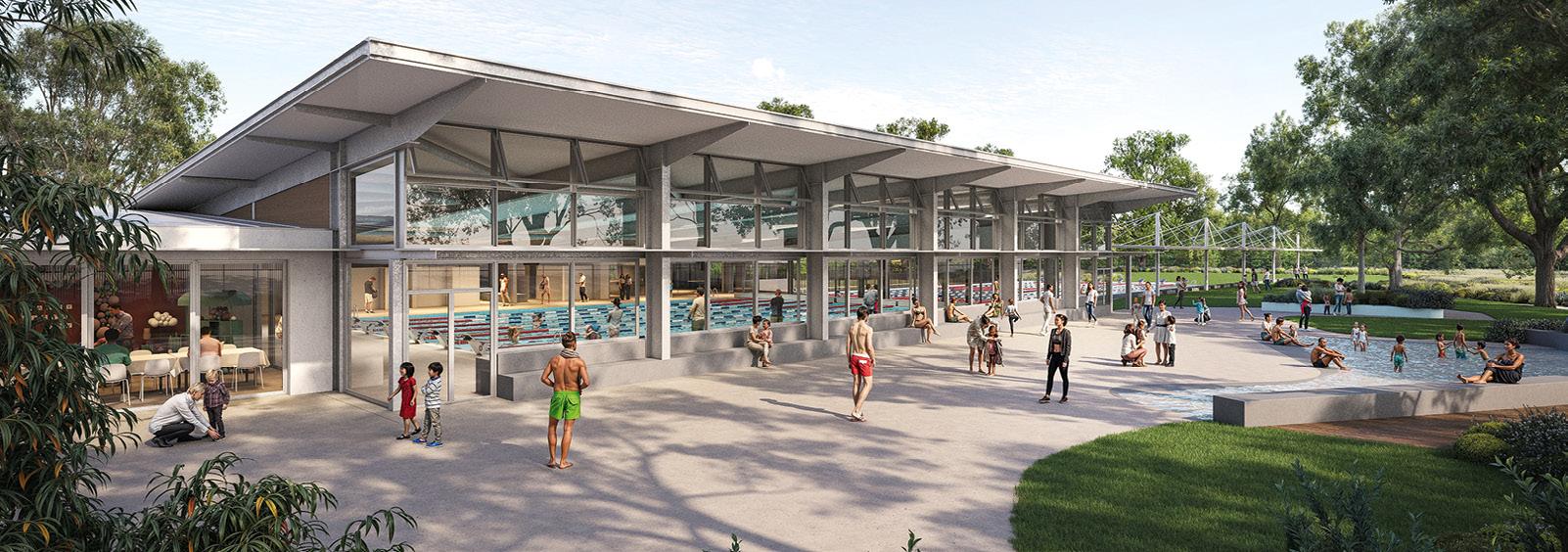

Amid the spread of contagious cryptosporidiosis throughout the New Zealand capital – currently totalling 93 cases this year –another furore has arisen relating to a toddler pool.
New Zealand Herald journalist Katrina Bennett has reported that Hutt City Council had knowledge of a likely cryptosporidiosis infection in one of its toddler swimming pools during the public health outbreak.
However, the council didn’t immediately alert the public as it didn’t want to cause “undue alarm”.
The journalist saw internal council emails confirming the toddler’s pool at Te Ngaengae was identified as a common area for cases on March 12. Yet the council did not release any information about the pool being linked to the outbreak until March 21, when it posted an update on Facebook.
The Herald reported that angry parents have questioned why council didn’t alert them sooner, so they could make informed choices to safeguard their children.
One of the people affected by the crypto outbreak described the illness as something you “wouldn’t wish on anyone”, with another woman so worried about her sick husband she nearly called an ambulance. Council has defended its communications, saying it followed all public health guidance and didn’t want to cause alarm until there was a confirmed link.
Meanwhile, Auckland Council’s 20 outsourced aquatic and recreation centres are now under new management contracts. Community Leisure Management (CLM) now operates 13 centres, including five seasonal summer pools, while YMCA North Incorporated (The Y) will manage seven centres.
This follows a decision by the council’s revenue, expenditure and value committee last October to award contracts to CLM and The Y.
The council advises that current services and programmes will continue as usual at the five centres changing to a new contracted service partner.
It also notes that all pools operated by the council and service partners provide free swimming for children 16-years and under, following its introduction at Mt Albert Aquatic Centre, although this does not include The Olympic.


Despite growing awareness, lifesaving skills in the home remain worryingly low – with only one in four parents updating their skills annually. These figures have remained unchanged for more than a decade – prompting renewed warnings about the urgent need for lifesaving and first aid education at home.
Knowing how to respond with first aid is critical – 45 per cent of all child injuries requiring hospitalisations occur at home. To improve home safety, Royal Life Saving (RLS) and Kids Alive are calling on parents and carers to refresh their skills, relaunching The Heart Beat Club – a free online course focused on teaching CPR and first aid for babies and young children.
“We’re seeing the same story year after year – parents understand that CPR and first aid are important, but they’re not acting on that knowledge,” says Lauren Nimmo from RLS.
“Emergencies unfold in seconds, and without basic skills, parents can be left helpless in those critical first moments. The Heart Beat Club is designed to break down barriers – it’s free, takes just one hour, and could save a life.”
The top causes of child injuries at home includes falls (33 per cent), contact with objects (20 per cent), and transport-related incidents (14 per cent), such as bike accidents. Infants are particularly vulnerable, with the highest rate of hospitalisation due to choking and suffocation.
In 2024, there were 15 drowning deaths in children under five, with 40 per cent in backyard pools and 27 per cent occurring in baths.
Alarmingly, there was also a 30 per cent increase in drowning deaths among children aged 5-14, compared to the 10-year average.

45 per cent of all child injuries requiring hospitalisations occur at home
Founder of Kids Alive, Laurie Lawrence, says the need to be able to take action at home had never been more urgent.
“Most people think drowning happens at the beach or on holidays – but the biggest danger for children is right in your own home ,” he says.
And when things go wrong, it’s usually a family member that needs to step in and do something to help. The only thing that can buy you time and improve the chances of survival is CPR.
“The issue is resuscitation and first aid knowledge significantly fades within three to six months, yet most parents don’t update their training for years – if ever.
“We want parents and carers to stop being complacent and be prepared should the worst happen. It could just save your child’s life.”
The Heart Beat Club offers online access to a comprehensive training program covering CPR, choking, burns, scalds, shock, bleeding and other first aid essentials. The course is self-paced and specifically tailored for parents and carers of babies and toddlers.
The program is a great option for refreshing knowledge as it removes barriers like cost and time – but we also encourage parents to further develop their skills by attending an in-person course.
Contact: www.heartbeatclub.org.au
Following delays, cost overruns and rate hikes relating to the North Sydney Olympic Pool revamp, another northern Sydney pool revamp is behind schedule and overbudget. The Willoughby Leisure Centre upgrade is now planned to open 20 months behind schedule and needing an additional $26 million – up to $65 million from the original $39 million budget. The original plan was for a refurbishment but when problems were encountered with the existing 1980s structure, it was changed to a full rebuild. Issues with the site include the fact it had formerly been a tip, slowing progress and increasing costs, including the requirement for using full PPP in some instances. However, unlike North Sydney Council, the Willoughby City Council has ruled out increasing rates to pay for the cost blowouts.
Meanwhile, the progress on the $26 million Epping Pool renovation is uncertain since
estimated construction costs had blown out, and the Sydney Morning Herald reported that it will cost $1 million just to get the pool back to the state it was in before closing in April last year. In May this year the City of Parramatta decided to urgently explore various site options and funding sources to deliver an aquatic and recreation centre that meets the needs of the community.
Austswim, the national organisation for the teaching of swimming and water safety, has launched a new course to meet the demand for aqua exercise instructors. It has run at six locations across the country in June and July, with the Exercise Instructor Course Australia is described as being nationally recognised, industry-trusted and water-ready. The course is recognised and registered with AUSactive and provides successful candidates with 20 CECs. The last two courses will be run in Queensland on the 28th and 29th June at
Logan North Aquatic Centre, Underwood, and in NSW on the 19th and 20th July at the Annette Kellerman Aquatic Centre, Marrickville. Negawatt Projects is running another aquatic centre energy efficiency seminar. The first session will investigate upgrades to aquatic centres and goes into detail of some successful upgrades of centres, what were the aims, who was involved and what challenges were overcome. The presentations will be from design teams, engineers, contractors and suppliers to give attendees the best chance of completing similar upgrades at their facilities while avoided headaches. The second session looks in detail at more advanced energy systems and how these can be used to integrate multiple buildings. The seminars will be held July 10 at St Leonards College, Brighton East, Melbourne. To book: https://events.humanitix.com/aquaticcentre-seminar-renewal-and-new-horizons
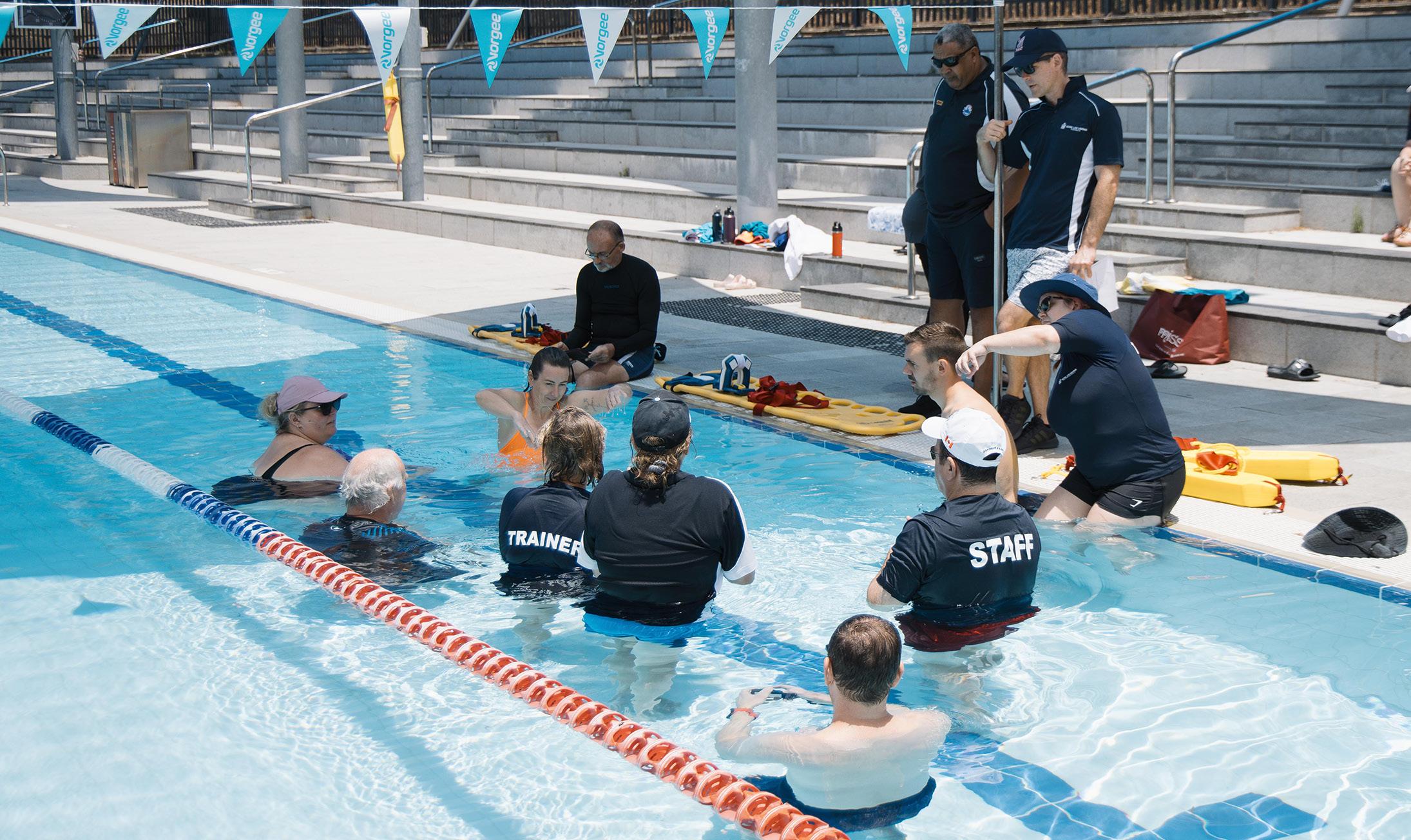
Lifeguards can now get locally certified and job-ready when they head overseas
Pool lifeguards with an Australian qualification now have an easier path to work in the UK, Canada and South Africa, thanks to the RLSS Commonwealth Pool Lifeguard Reciprocity Project – a joint effort between Royal Life Saving Society member organisations in Australia, Canada, South Africa and the United Kingdom.
By closely comparing each country’s pool lifeguard training programs, the project team has mapped the similarities and differences, helping to identify what’s required to support lifeguards transitioning between countries. The result is a streamlined way for lifeguards to become locally certified and job-ready when they head overseas.
Shaun Jackson, national manager of training and workforce development at Royal Life Saving Society Australia, says pool lifeguards are in high demand over the summer months in the UK, Canada and South Africa.
“This program will allow Australian qualified pool lifeguards to have a clear idea of the specific and tailored training required in each of these countries before they set off.”
For lifeguards looking to work in Australia, reciprocity options fall under the framework of Recognition of Prior Learning (RPL), which means international applications will need to provide evidence of their training, skills and experience to a Royal Life Saving Registered Training Organisation (RTO) for review and assessment.

Discover upcoming construction projects in your area with Cordell Connect to help you secure your next opportunity.
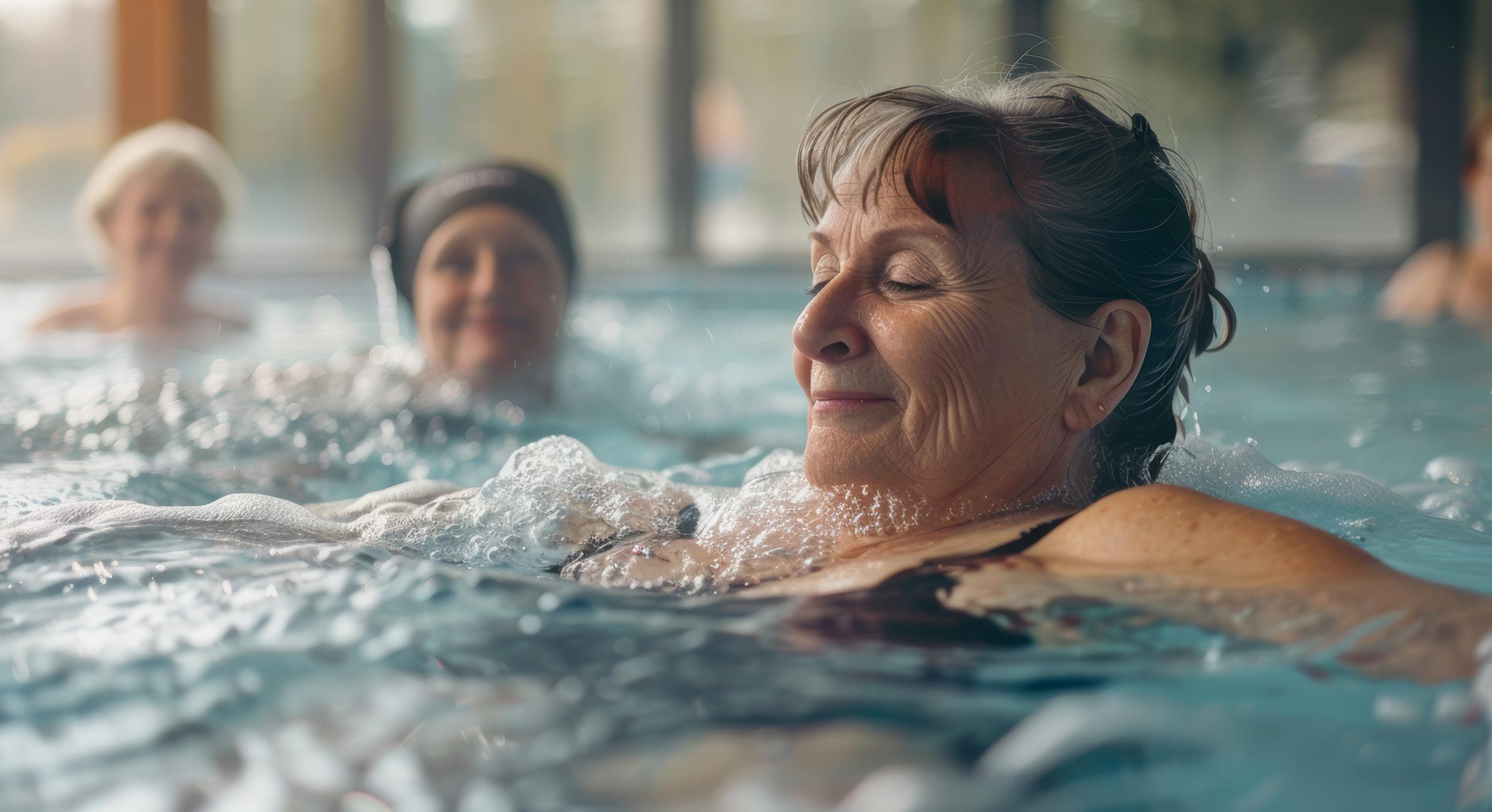
For the ageing population, hydrotherapy can be a vital tool in preventing falls and maintaining independence
By Veda Dante
Hydrotherapy pools are becoming must-haves for modern aquatic centres, as not only can they boost community impact, they can also bring commercial returns.
Across Australasia, and indeed in many parts of the world, health and wellbeing are becoming top priorities for people of all ages. In response, a wide range of commercial facilities, including gyms, wellness centres and aquatics venues, are expanding their offerings to include more therapeutic services. Among the most in-demand is hydrotherapy. Whether it’s for managing chronic conditions, speeding up recovery, or staying active with less impact on the body, warm water therapy is gaining traction as a highly accessible and effective solution.
Hydrotherapy pools, typically heated to around 34 degrees Celsius, offer an ideal environment for low-impact movement. The warmth helps relax muscles, ease joint pain, and support freer, more comfortable motion. The natural buoyancy of water reduces pressure on joints, making it easier for users to exercise confidently – whether they’re recovering from injury, living with long-term conditions, or looking to maintain mobility as they age.
Helen Jentz from Musculoskeletal Health Australia (MHA) says purpose-built hydrotherapy amenities provide both physical and psychological benefits, making hydrotherapy a valuable addition to any facility focused on holistic health.
“Hydrotherapy uses warm water to reduce the impact on joints during movement,” she explains. “It allows people with arthritis, chronic pain or mobility issues to exercise more freely and
with less discomfort, which means they’re more likely to stay active and improve their overall wellbeing.”
As more of us look for gentle, effective ways to stay healthy, aquatics facilities that offer hydrotherapy are well placed to meet the growing demand for inclusive, wellness-driven experiences.
The benefits go beyond anecdotal feedback. A review of international studies by MHA found consistent evidence that warm water exercise can significantly reduce pain, improve physical function and enhance overall quality of life. Programs that ran at least twice a week for a minimum of six weeks, and included a mix of resistance, aerobic and balance exercises, showed the best outcomes.
Even simple activities like walking through water without hand support can help improve stability. For the ageing population, this can be a vital tool in preventing falls and maintaining independence.
“Hydrotherapy is more than just gentle movement in water,” says Jentz. “It’s a therapeutic form of exercise backed by research, and it can make a real difference for people living with chronic musculoskeletal conditions.”
As awareness grows, more health professionals are recommending hydrotherapy as part of long-term management plans. Whether it’s relieving pain, building strength or improving mobility, warm water may well be one of the most accessible and effective forms of medicine.
Why warm water might just be the best medicine
Jake Pallpratt has been a key figure at Healthy Mates in Bendigo since 2017, when he joined as a graduate physiotherapist. His dedication and clinical expertise saw him promoted to manager and senior physiotherapist in 2021. In 2023 he stepped into the role of director, taking over the day-to-day operations of the practice.
More than a decade ago, BG’s Pools and Spas installed two fibreglass units manufactured by Compass Pools Australia, helping expand its hydrotherapy services. Since then, the installations have become central to Healthy Mates’ rehabilitation programs, providing patients with a unique and supportive environment for healing.
“Hydrotherapy is used for many conditions to assist with weightlessness and to make good, early progressions with their rehabilitation,” Pallpratt says.
“The conditions we commonly see are post-surgery rehabilitation, osteoarthritis, lower limb pathology, post-sport recovery, neurological conditions, and falls and mobility issues.”
The key to hydrotherapy’s effectiveness lies in the water’s warmth – what Pallpratt refers to as the optimal therapeutic temperature – and the body’s response to buoyancy.
“We find 34 degrees optimal, as this temperature promotes pain relief, muscle relaxation and reduced inflammation, while also improving circulation,” he says. “This in turn allows our clients to achieve better outcomes from engaging in hydrotherapy sessions.”
Buoyancy, influenced by water depth, plays an equally important role in tailoring treatments. Different water levels allow physiotherapists to either reduce or increase the amount of load placed on a patient’s joints, helping them gradually build strength and mobility at a pace suited to their condition.
“In greater depths of water, the body is more buoyant, which reduces the load on joints. Shallower water, on the other hand, offers less buoyancy and increases resistance and joint loading,” Pallpratt explains. “We use these variables to either progress or regress an individual’s program, depending on their needs.”
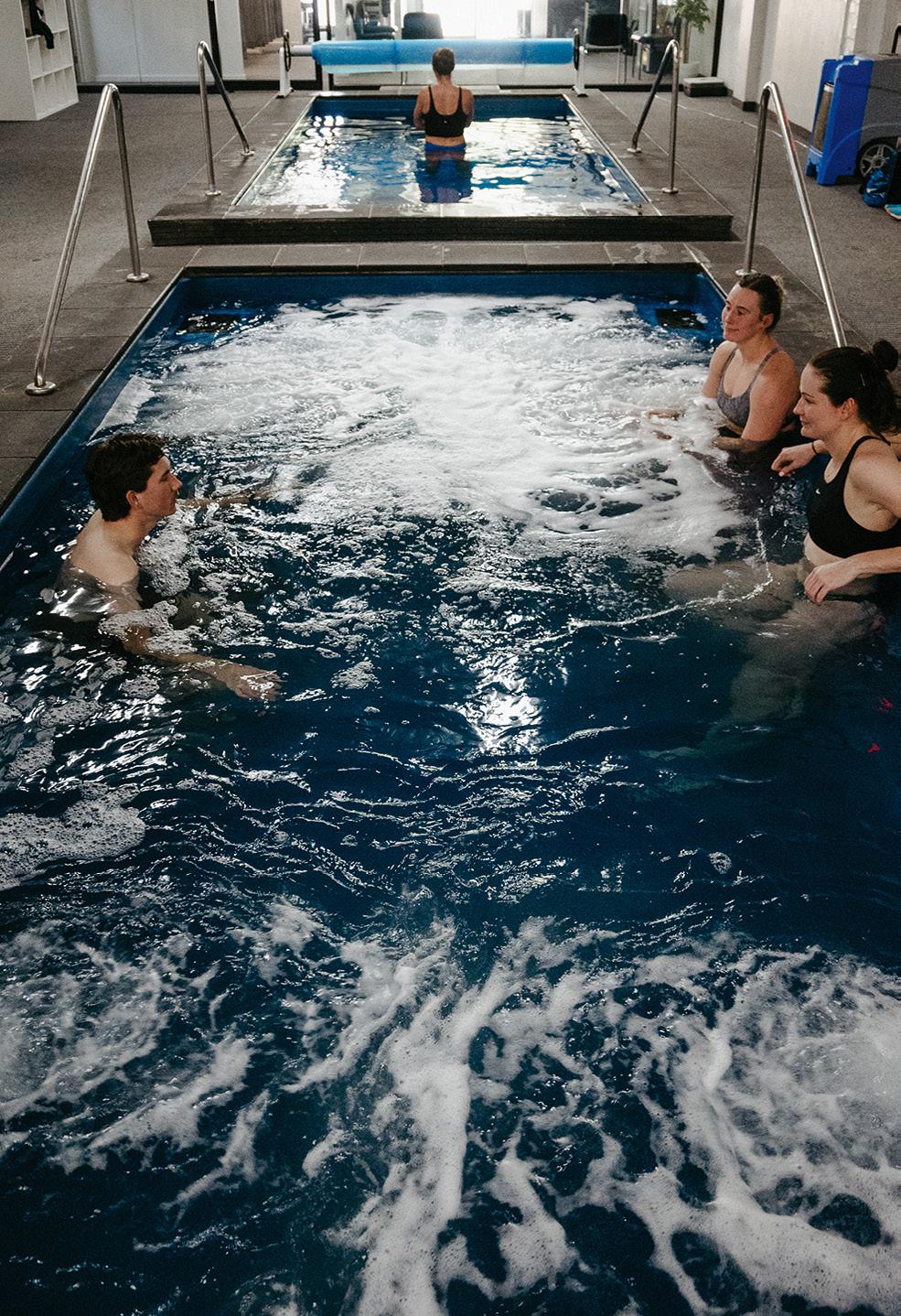
“This isn’t just a trend. It’s a shift in how people take care of themselves, and businesses are responding.”
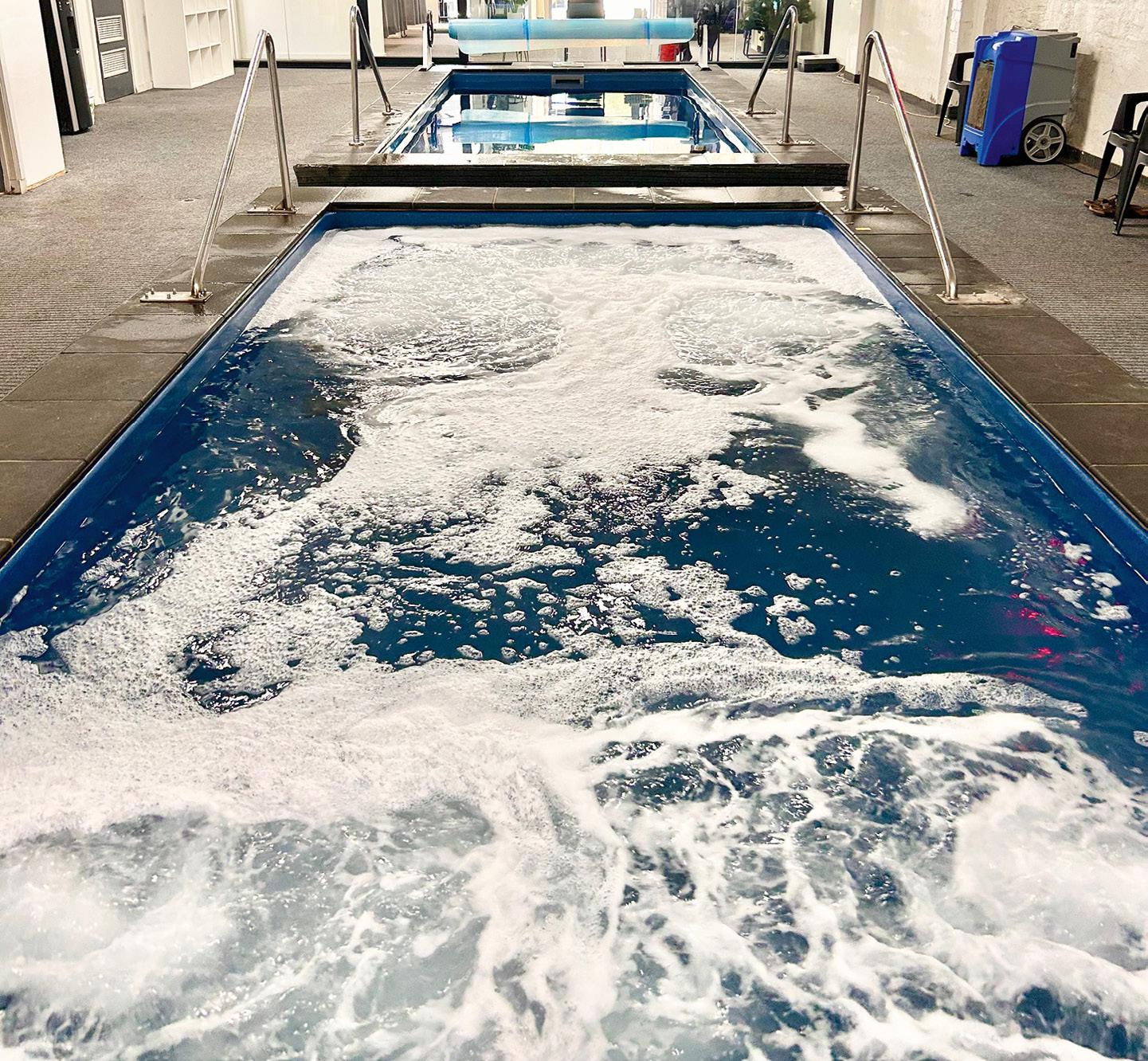
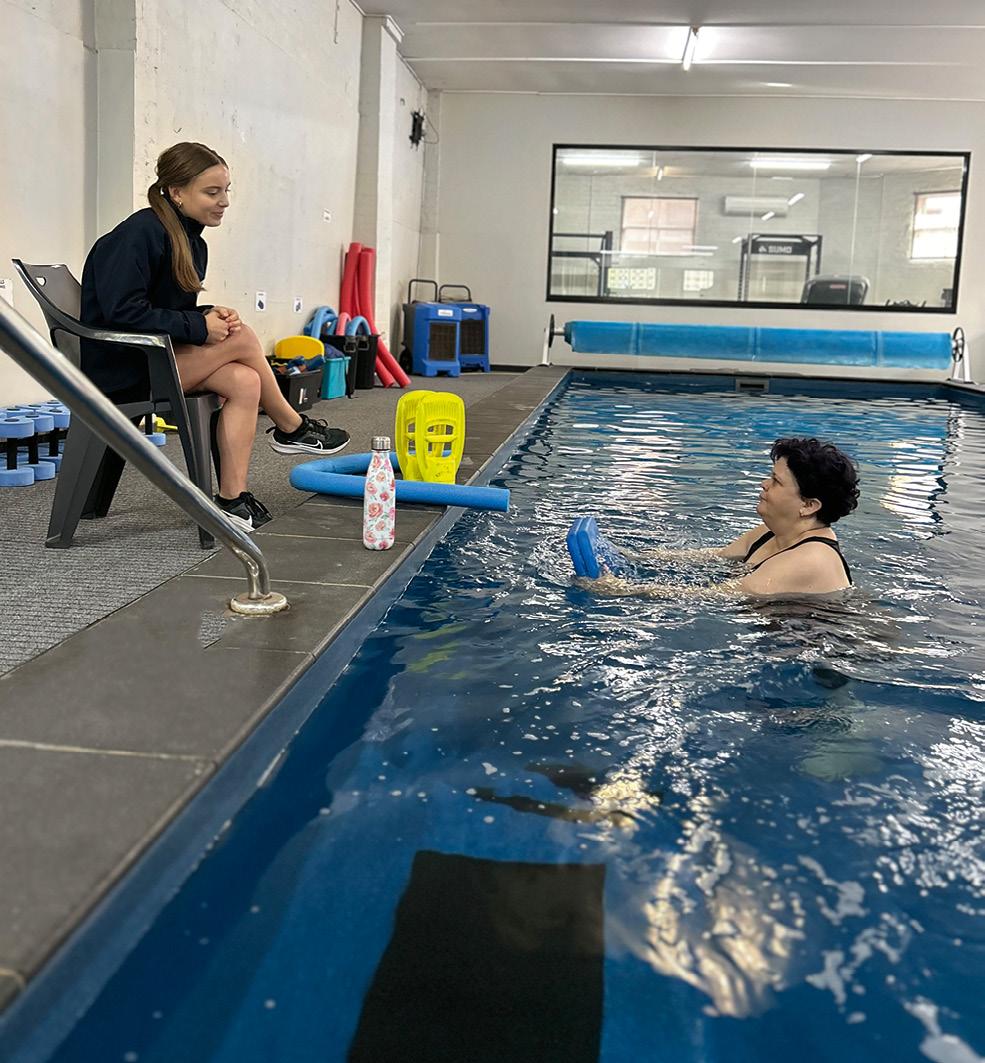

For many clients, this customised approach leads to faster recovery, improved function and increased confidence—particularly for those managing chronic pain or returning from injury. The safe, supportive environment of warm water helps patients push boundaries they might struggle with on land.
However, hydrotherapy isn’t suitable for everyone.
“There are a few medical conditions that contraindicate hydrotherapy,” Pallpratt notes. “Severe epilepsy, incontinence, open wounds, or contagious diseases can pose significant risks and must be considered when assessing patient suitability.”
“ We find 34 degrees optimal, as this temperature promotes pain relief, muscle relaxation and reduced inflammation, while also improving circulation.”

Hydrotherapy can make a real difference for people living with chronic musculoskeletal conditions
As the global wellness economy continues to boom, more Australian businesses are investing in recovery and relaxation to meet evolving consumer expectations. One of the fastestgrowing trends? Compact plunge pools designed for hot and cold therapy.
Little Pool Co CEO Anthony Cross says demand for these facilities has surged over the past few years, particularly among gyms, boutique wellness studios, high-end apartments and recovery centres.
“We’re seeing a real shift in the way people approach health and wellbeing,” he says.
“Customers now expect more than just a workout space. They’re looking for places that support recovery, mental health and overall wellness. That’s where hot and cold therapy really comes into its own.”
One solution for commercial operators wanting these benefits – without the cost or complexity of traditional pool builds – is to purchase plunge pools that are pre-assembled and pre-plumbed.
According to Cross, their appeal lies in their simplicity and versatility.
“Our plug-and-play plunge pools are built offsite and delivered ready to connect,” he explains.
“All you need is a concrete slab and access to water and power. There’s no excavation, no tiling, and no long lead times, which makes them ideal for commercial projects with tight schedules or limited space.”
These compact installations allow businesses to tap into a rapidly growing wellness trend while keeping operational overheads in check. From elite sports recovery to everyday relaxation, the applications are broad and growing.
“In terms of performance, we’re building these plunge units to handle commercial use. Whether it’s a gym with high foot traffic or a luxury
apartment complex offering a premium resident experience, the pools are designed to look good and last,” says Cross.
With wellness now a key differentiator in competitive markets, adding hydrotherapy is becoming less of a luxury and more of a strategic investment. Facilities that offer these services not only attract a health-conscious clientele but also build stronger brand value in an increasingly saturated landscape.
“Every week we’re working with new operators who want to stand out by offering something that delivers real value to their clients,” he adds.
“This isn’t just a trend. It’s a shift in how people take care of themselves, and businesses are responding.”
As the sector continues to evolve, hydrotherapy and thermal recovery are no longer limited to elite athletes or luxury spas. With the right approach, these features are now accessible to a wide range of commercial spaces and are increasingly viewed as essential, not optional.
The new frontier in franchising
Founded by Paul Goldfinch, P3 Recovery is fast becoming one of the most dynamic and rapidly expanding franchise networks in the wellness and recovery space. With demand surging across Australia, New Zealand and the United States, the brand’s use of Little Pool Co’s pre-assembled and plunge pools is proving a key part of its success.
Head of franchise operations, Brigitte Goldfinch, says the most sought-after services include contrast therapy, infrared and traditional saunas, compression therapy and, increasingly, hyperbaric oxygen therapy.
“It’s all about recovery, resilience and optimisation, not just for elite athletes, but for anyone committed to living a high-performing life,” she says.
Goldfinch attributes the brand’s franchise appeal to a combination of strong commercial fundamentals and a clear, purpose-led mission.
“Many of our franchise partners are former athletes, fitness professionals or health-conscious entrepreneurs who are genuinely passionate about wellbeing,” she says.
“But we’re also seeing growing interest from business owners, corporate professionals and investors who are looking to align their portfolio with a brand that has both purpose and potential.”
Positioned at the intersection of performance, preventative health, and recovery, P3 Recovery is tapping into three booming wellness segments.
“Our franchisees see the opportunity to be part of a movement that’s changing lives while also building a business in a high-growth category with recurring revenue and strong brand support,” Goldfinch says.
Franchisee training, particularly in water treatment and management, is detailed, structured and highly practical.
“Every franchisee and their team complete a comprehensive onboarding program that covers
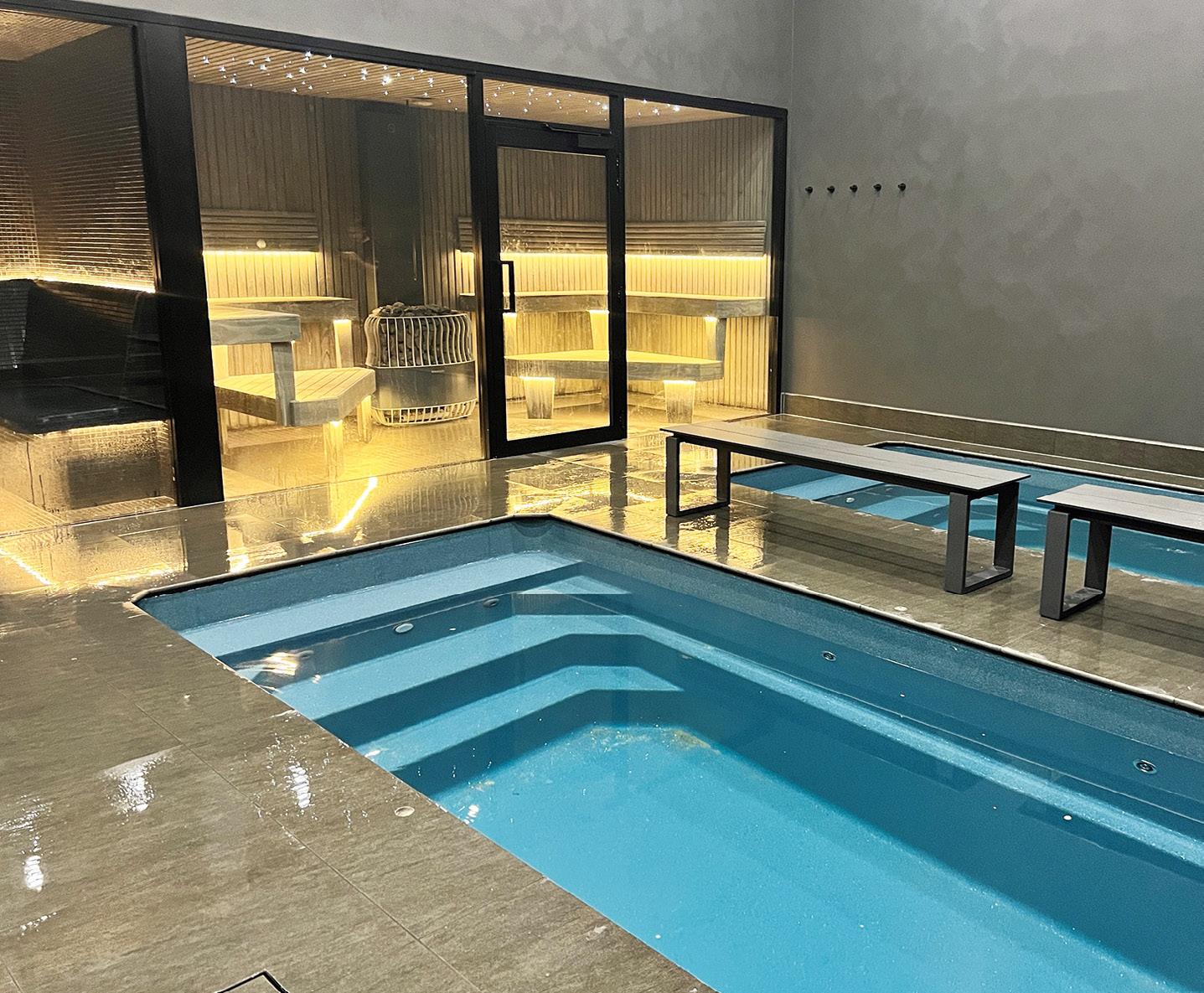
“Hydrotherapy is more than just gentle movement in water.”

More councils and developers are integrating hydrotherapy pools not just for health outcomes, but for smart business. Return on investment isn’t just financial – it’s social and community-wide.
Diversify your offering – attract new user groups including NDIS clients, physiotherapists, seniors’ programs, and elite sports rehab services.
Expand off-peak usage – hydrotherapy pools operate independently of traditional lap and recreation zones, allowing programming during quieter hours.
Secure funding and partnerships – pools designed for therapy may be eligible for health grants or partnerships with hospitals, aged care providers, and disability support services.
Future-proof your facility – as population ages and interest in non-invasive recovery grows, hydrotherapy is no longer a luxury – it’s a long-term asset.
Design advantages – include key accessibility features such as hoists, ramps, shallow entry zones, and consistent warm temperatures (approximately 34 degrees Celcius) to meet clinical use standards and NDIS requirements.

The Home Show is where renovation-ready homeowners connect with trusted brands, discover the latest products, and turn ideas into action. Exhibiting puts your business in front of thousands of motivated buyers—all under one roof.
2025 SHOW DATES:
Perth: 20 – 22 June
Melbourne: 22 – 24 August
Brisbane: 19 – 21 September
Sydney: 10 – 12 October

EXHIBIT WITH US
Showcase your products to thousands of homeowners. Contact SPASA to book your stand today!
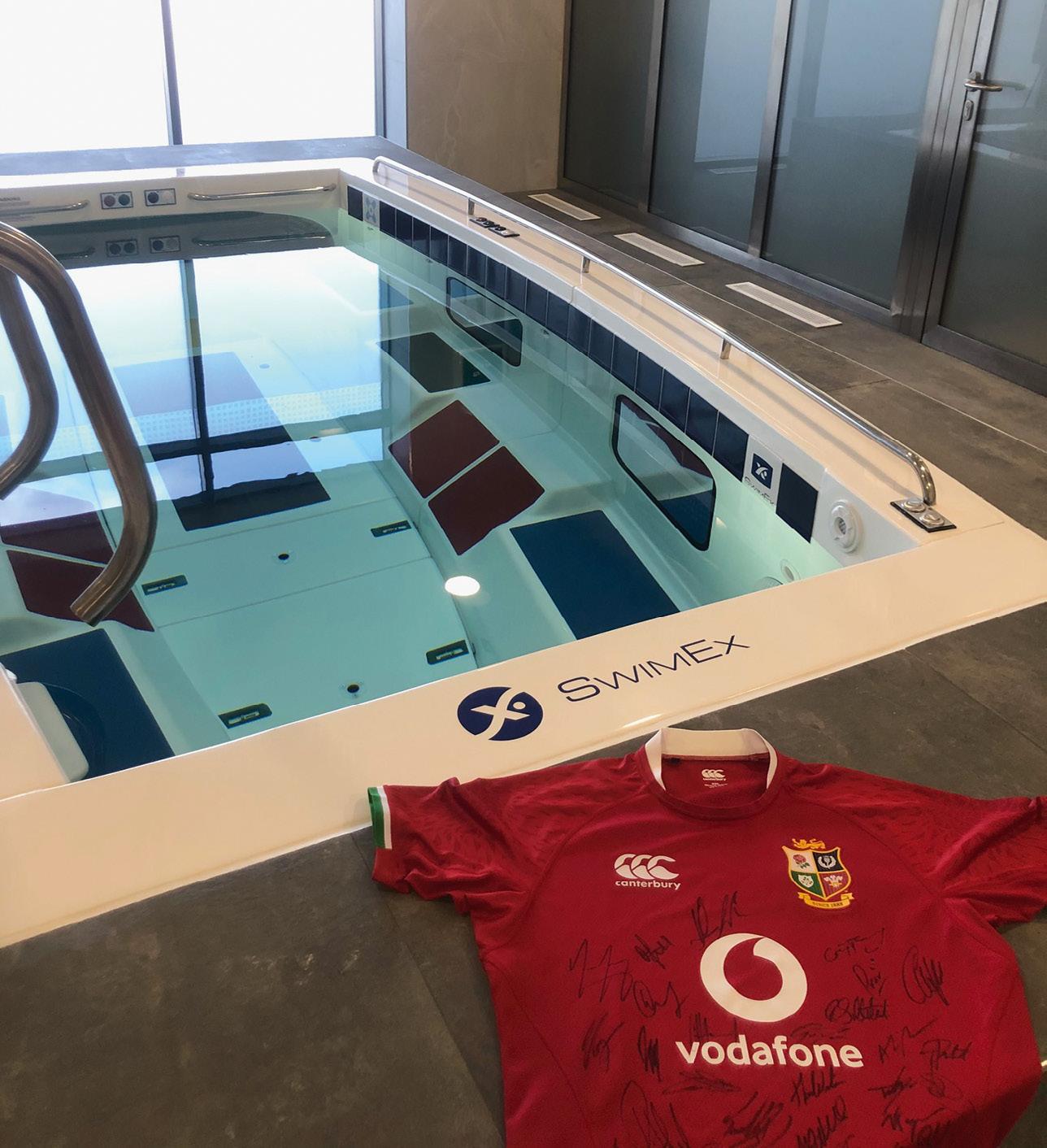
everything from customer experience and day-today operations to water testing, compliance and therapy protocols,” she says.
“Our water management systems meet all relevant state health regulations, and we train our teams in proper testing, documentation and sanitation procedures. The aim is to maintain exceptional standards without ever compromising safety or service quality.”
Goldfinch says that P3’s advanced automated sanitisation systems ensure every pool delivers a consistent, enjoyable and hygienic bathing experience for members and guests.
While launching a P3 Recovery franchise does require navigating some local regulatory steps, franchisees aren’t expected to do it alone.
“Typically, the process involves change of use approval from council (if applicable), compliance with any building codes, and adherence to public health regulations – particularly around pool and water treatment,” she explains.
“We’ve built strong systems around this process, including access to approved designers and town planners, as well as trusted consultants and project managers. It’s a collaborative process, and one we guide our franchisees through every step of the way.”
Whether it’s cold-water immersion after highintensity training or the therapeutic effects of contrast bathing, water remains one of the most powerful tools in recovery. But to realise its full potential, the environment must be hygienic. And that begins with advanced, reliable filtration.
“As any operator knows, pristine water is essential for both safety and performance,” says Richard Bishop, founder and technical director at Aqua Thermae.
“Athletes and those recovering from surgery are particularly vulnerable to infection, so keeping

the water contaminant-free is critical.”
With more than 35 years’ experience in sports hydrotherapy, the UK-based Bishop advises elite recovery facilities worldwide.
At Strive Health Club in the Channel Islands, lead physiotherapist Jonny Picot, formerly with Manchester United FC, uses hydrotherapy to great effect.
“Jonny Picot and his physiotherapy team use hydrotherapy to accelerate recovery while improving resilience,” says Bishop. Strive hosted the British and Irish Lions before the 2021 South Africa Lions tour.
“We are also using Waterco Davey low salt systems on the warmer hydrotherapy pools for a more natural chlorination of the water in a more environmental way,” he says.
The club’s SwimEx hydropool, equipped with Waterco’s Micron commercial fibreglass filters, Hydrostorm and TurboFlo pumps, supports rehabilitation, resistance training, and performance conditioning.
Bishop is very pleased with the systems.
“In warm water, contaminants like body oils, skincare products and other organic matter are more likely to leach into the pool. Effective filtration isn’t optional, it’s essential,” he says.
Bishop uses Waterco’s Glass Pearl filter media, which he describes as delivering “hyper-filtration” by capturing particles as small as three microns. This is especially important in hydrotherapy environments, where elevated temperatures increase the volume of contaminants entering the water.
“These substances are released by the heat and carried into the filtration system, where they must be trapped before recirculating,” he says. “Without high-performance media, water quality can decline rapidly.”
Independent testing by the University of New South Wales’ Water Research Laboratory recently
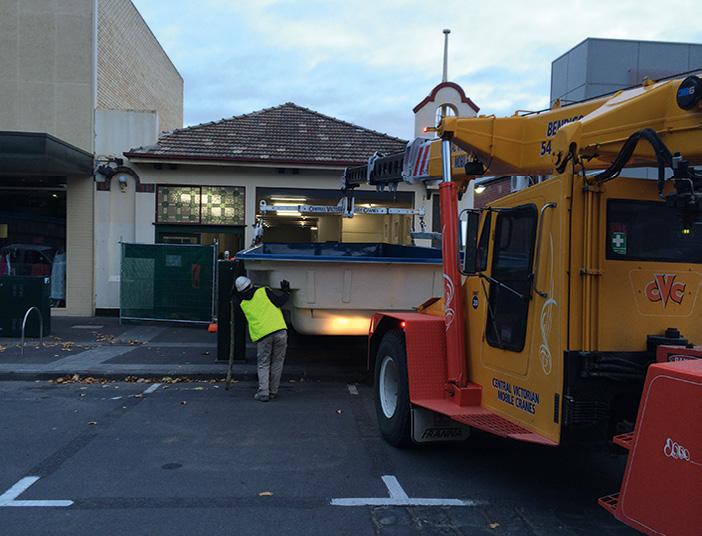
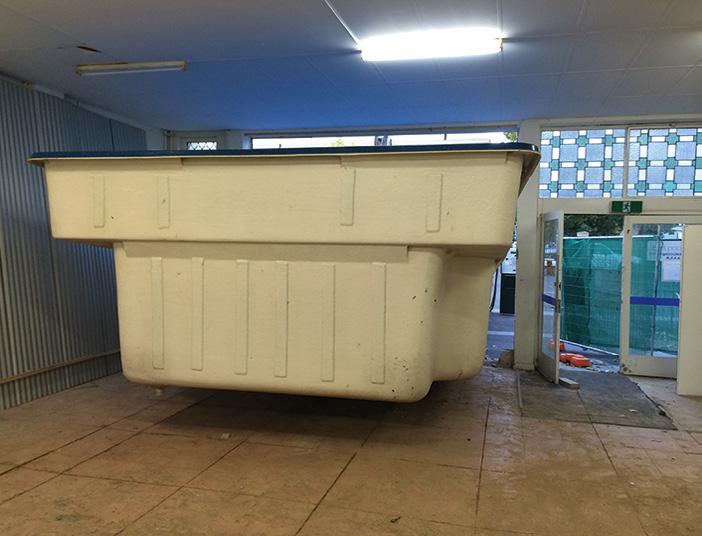

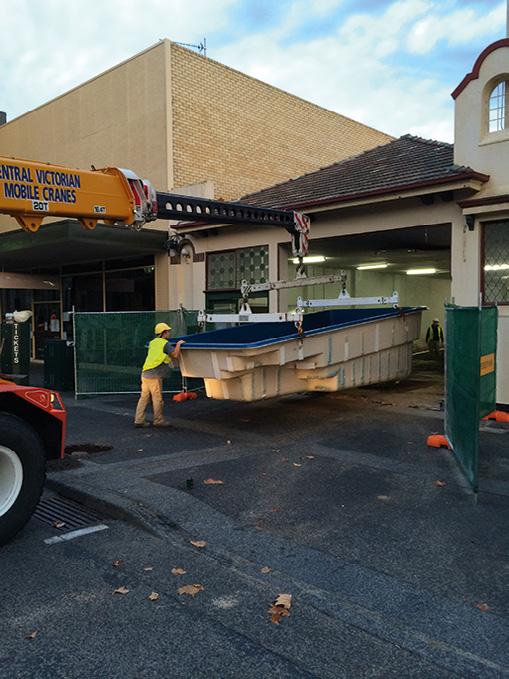



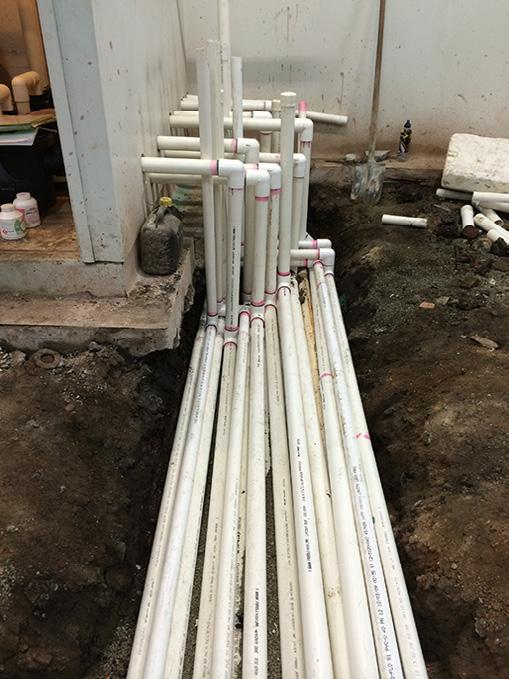
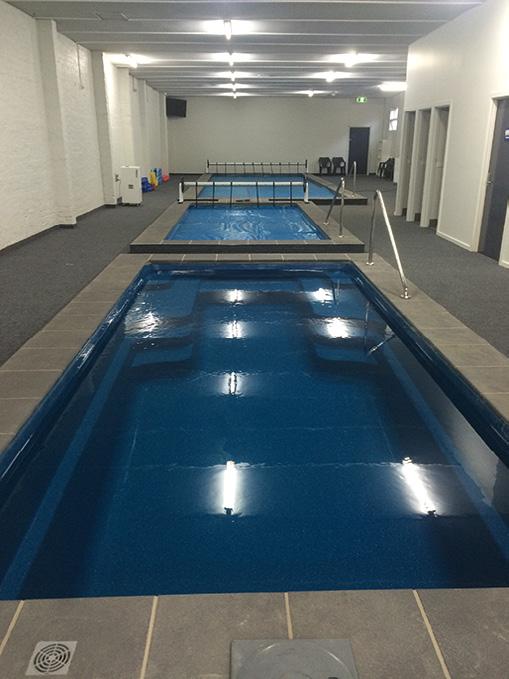

showed that Glass Pearls perform comparably to regenerative filters in a nominal sense.
The report stated that Glass Pearl filters “effectively below three microns”. Waterco’s Andy Gale adds that the data graph shows 77 per cent of 0.5-2um being captured after three turnovers.
“That’s pretty impressive,” he says.
Bishop says it improves filtration efficiency, reduces chemical consumption, and lowers operating costs.
“It’s a smarter, more sustainable way to maintain hydrotherapy water quality,” he says.
As demand grows for recovery-focused facilities, water management is proving just as critical as the therapy itself.
For athletes, older adults, and those in rehabilitation, a clean, well-filtered hydrotherapy pool can mean the difference between progress and setback. n
“In greater depths of water, the body is more buoyant, which reduces the load on joints.”
www.aquathermae.co.uk
www.bgspoolsandspas.com.au
www.compasspools.com.au
www.healthymates.com.au
www.littlepools.com.au
www.muscha.org
www.strive.je


With its clean lines and modern aesthetic, the Aurus Pyramus 500 fire pit complements a wide range of outdoor looks and styles. Its sleek silhouette adds a stylish touch, and while a cover is not included, it is designed to withstand seasonal use with proper care.
The Aurus low smoke Pit Fire range offers a refined design with low smoke innovation, to create an environment for relaxing at home or entertaining. Designed with a dual wall, the Aurus Low Smoke Firepit creates a secondary burn reducing the amount of smoke that is emitted by up to 50 per cent.
The Aurus Pyramus 500 low smoke fire pit is available at Bunnings Warehouse.
Contact: www.mayohardware.com.au
Samsung says their new Galaxy XCover7 Pro phone and Galaxy Tab Active5 Pro tablet are designed to thrive on the frontlines, having undergone testing against military standards to ensure they withstand demanding environments.
Both devices feature IP68-rated water and dust resistance, helping protect against dust ingress and accidental exposure to fresh water.
Additionally, the Tab Active5 Pro’s S Pen is an excellent tool for field professionals who annotate documents, sign forms or input data on the go, even functioning in certain wet conditions.
Their MIL-STD-810H16 tested designs help ensure resistance to drops, extreme temperatures and vibrations, while the Corning Gorilla Glass Victus+ display on the Tab Active5 Pro helps provide protection against accidental mishaps. Enhanced touch sensitivity on both devices allows seamless use with compatible gloves.
Contact: www.samsung.com/au
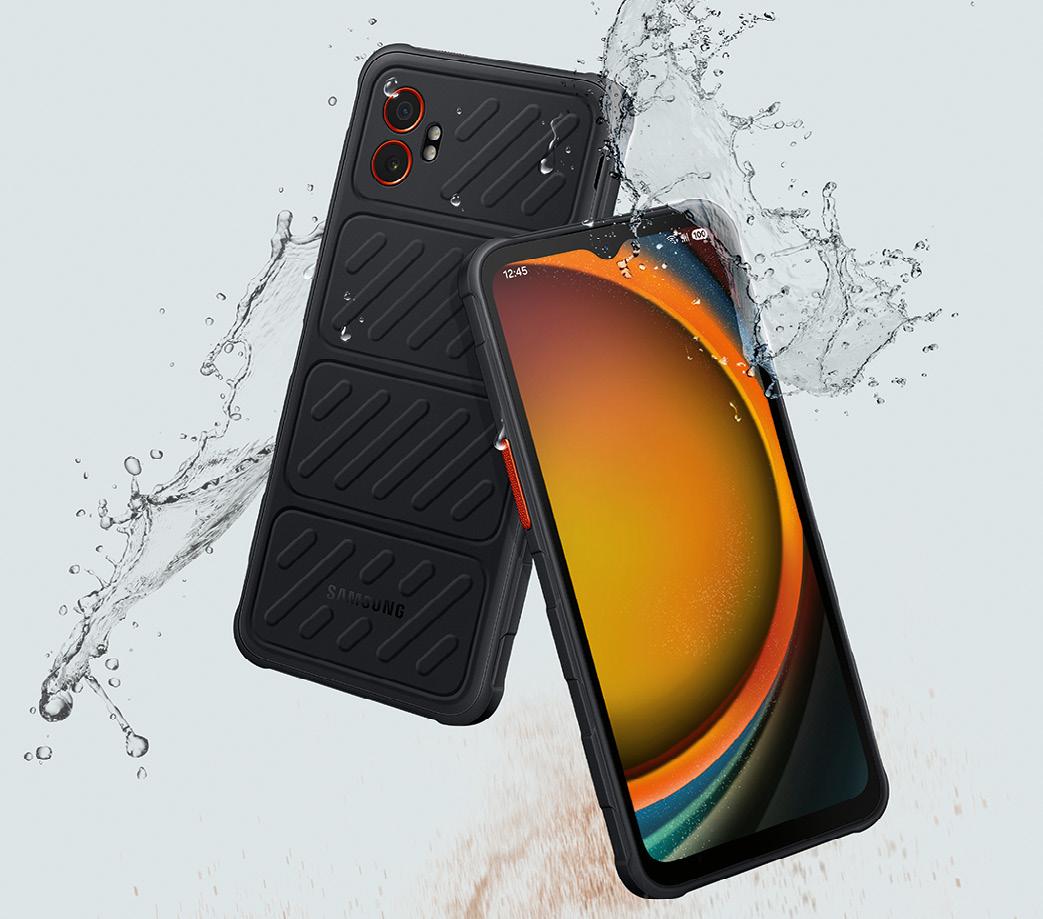
Choose from floating, upholstered thermal covers, lockable and rollable/foldable covers, fleece-filled P V C or simple thermal foam, bubble or debris covers - there’s a solution to suit most pools, spas and budgets!
Scan the Q R to explore our range, or email us@abgal.com.au for wholesale enquiries.

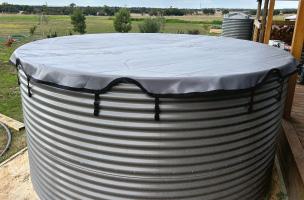
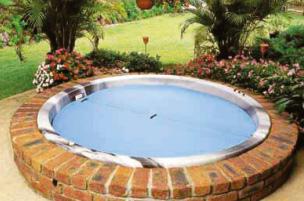

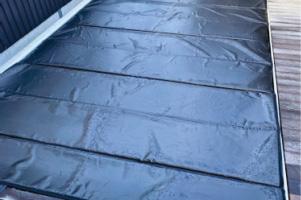
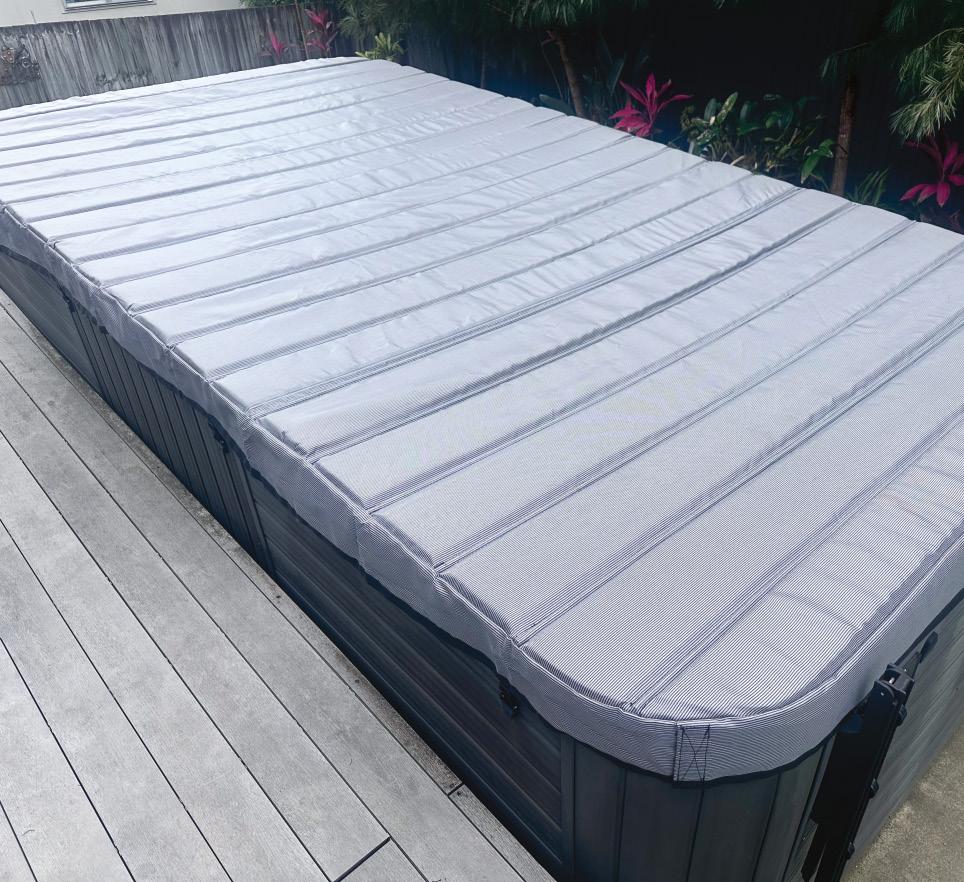

Sunlover says their new Oasis Vantage Salt & Mineral Chlorinator delivers powerful performance and everyday ease for modern pool care.
Compatible with both salt and mineral systems, it features a smart self-cleaning titanium cell, dual timer cycles and a compact, weather-shielded power pack.
Designed for low-salt operation (3000–4000 ppm) with efficient chlorine output up to 35g/hr, it suits pools up to 80,000L. The new heat junction override function enhances versatility, while quick-connect fittings and intuitive setup make installation a breeze.
It is built for durability, simplicity and peace of mind, and is available in 15g, 25g and 35g models.
Contact: www.sunloverheating.com.au
Glass Pearls shine in new lab tests
Recent independent performance testing conducted by the globally recognised University of New South Wales Water Research Laboratory has shown Waterco’s Glass Pearls performed exceptionally well compared to other products in the market.
Andy Gale, commercial business unit manager at Waterco, says the evaluation focused on hydraulic performance, filtration efficiency and backwash effectiveness.
Gale says the results showed the spherical shape of the Glass Pearl media reduced water flow resistance by 37 per cent compared to AFM, easing the workload on circulation pumps – typically the largest energy users in a system.
The glass filter media also demonstrated high filtration performance, with Gale saying the results showed Glass Pearl performed “as effectively as regenerative filters in a nominal sense”.
“The result is more efficient backwash cycles, less water wasted, and lower running costs overall,” says Gale.
“With long-term savings and reduced environmental impact, this media stands out as the smart, sustainable choice for filtration management.”
Contact: www.waterco.com.au


Tax invoice
Please find enclosed my cheque/money order for $_________ payable to The Intermedia Group Pty. Ltd. OR please charge my: Mastercard Visa Amex
Cardholder Name:
Expiry Date: __ __ / __ __ Signature: Name:
Job Title: Company: Address:
Suburb/Town:
Ph: Fax:
Email:
Postcode:
Yes! I wish to receive SPLASH! magazine
Within Australia *
$AUD65.00 – 1 year, 6 issues
$AUD104.00 – 2 years, 12 issues – Save 20%
$AUD136.50 – 3 years, 18 issues – Save 30% * Prices quoted include GST
Overseas Rates
New Zealand
$AUD75.00 – 1 year, 6 issues
Asia Pacific
$AUD80.00 – 1 year, 6 issues
All Other Countries
$AUD90.00 – 1 year, 6 issues

We are committed to handling your personal information in accordance with the privacy act. Please Select one of the following: Yes No - Please send me information about special offers and or events from SPLASH!
The Intermedia Group Pty Ltd ABN 94002583682 PO Box 55 Glebe NSW 2037. Fax back your subscription to: (+61) 2 8580 6312 www.intermedia.com.au or call 1800 651 422

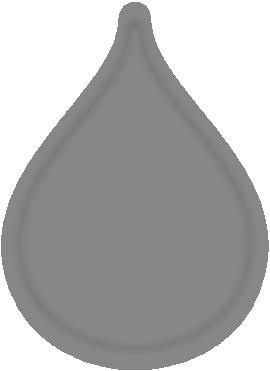
Building a new swimming pool is an exciting journey to a better lifestyle. Pool-Water Products specialise in innovative, eco-friendly and high-quality products that are designed to simplify pool life.
• In-floor cleaning systems
• Control Systems
• Lighting
• Pumps
• Filters
• Spa Equipment
• Water features
• Water treatments


